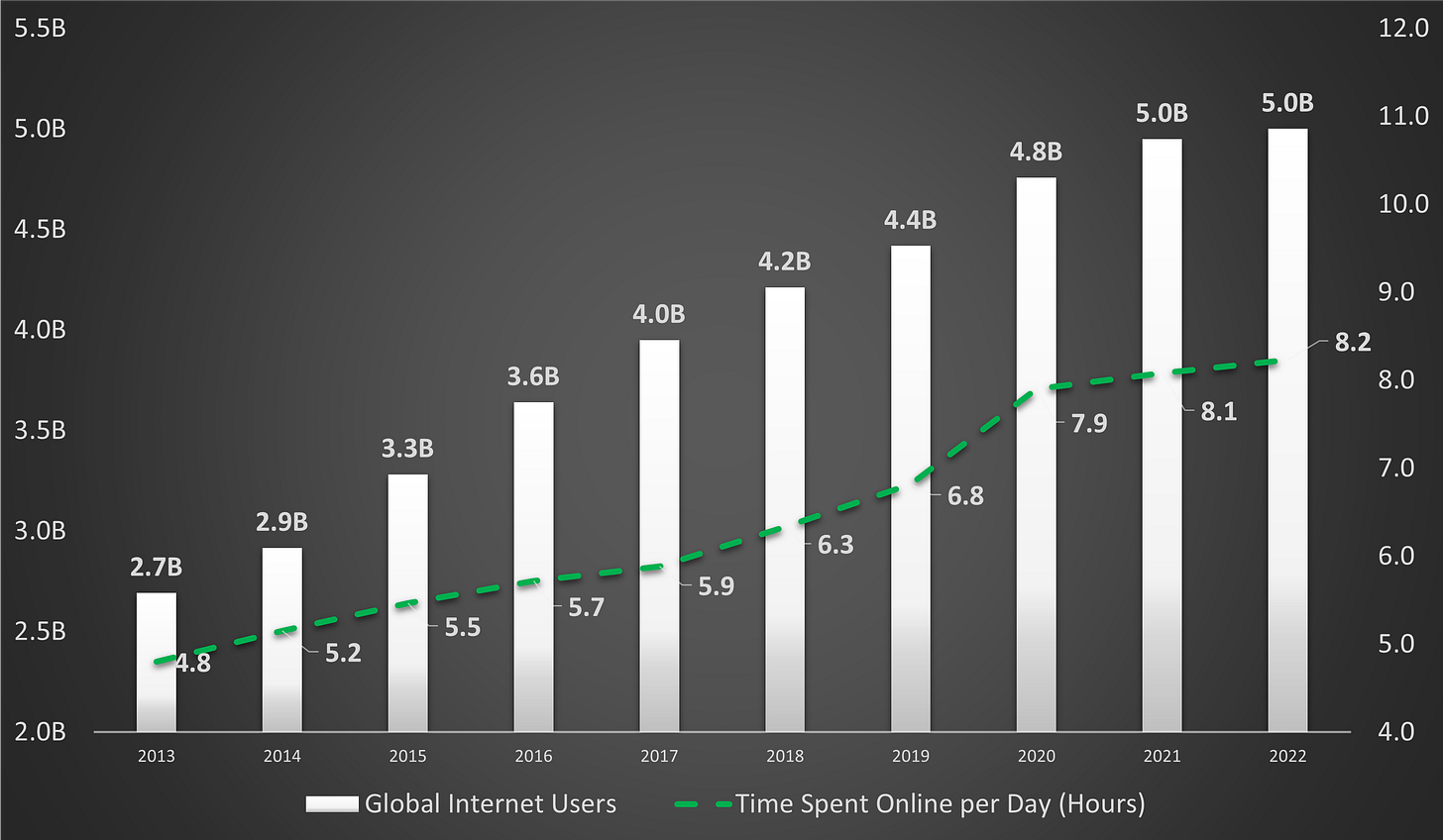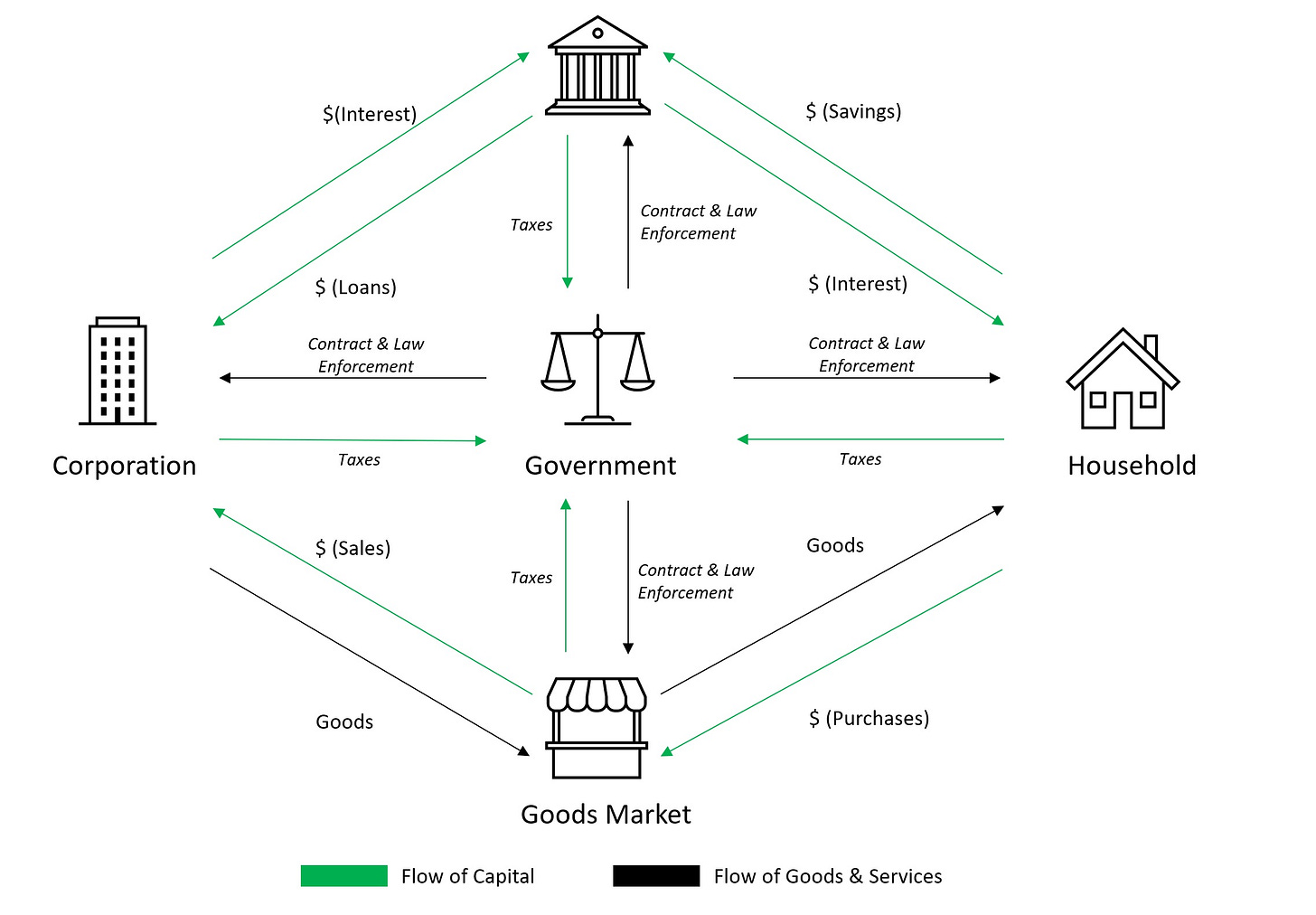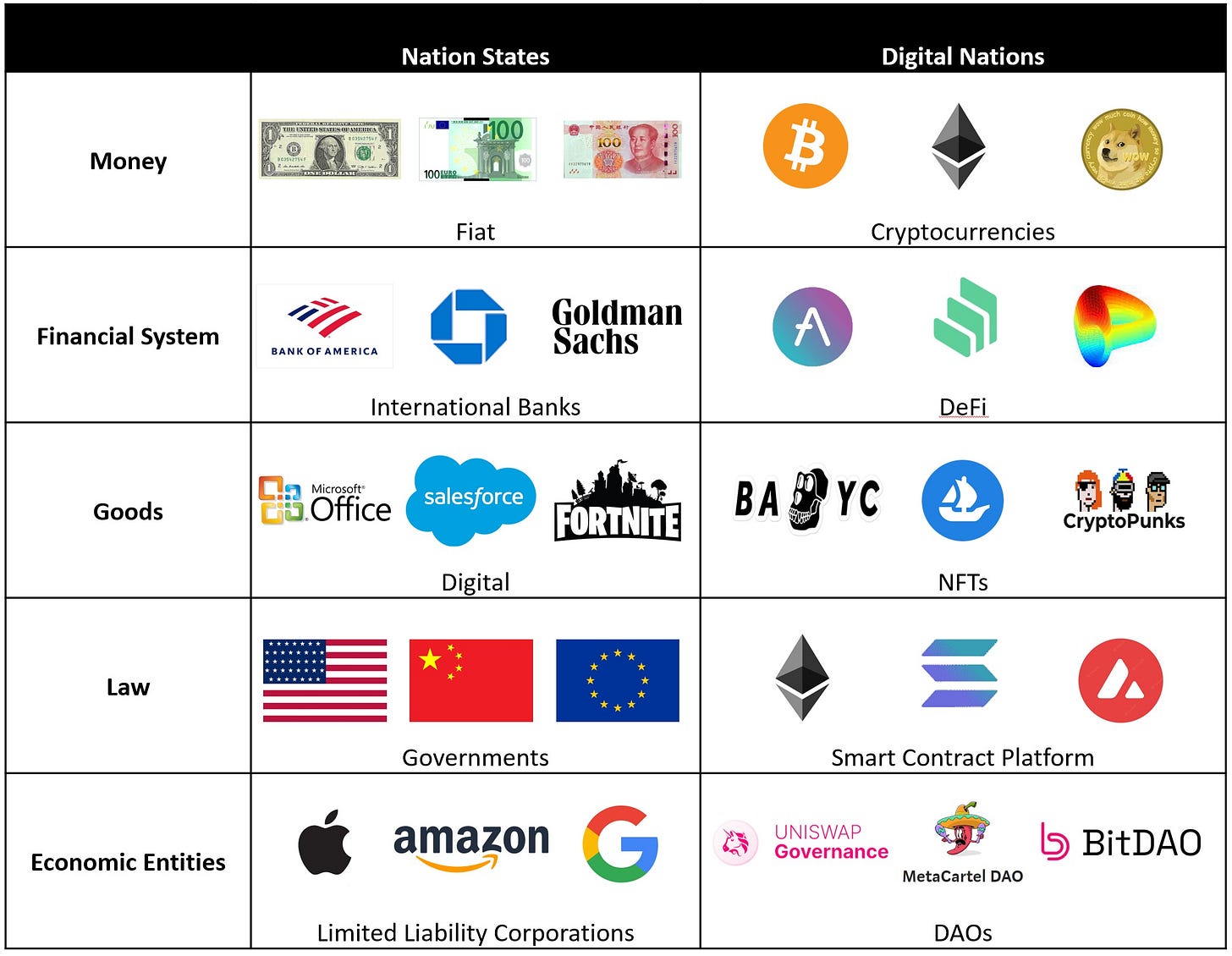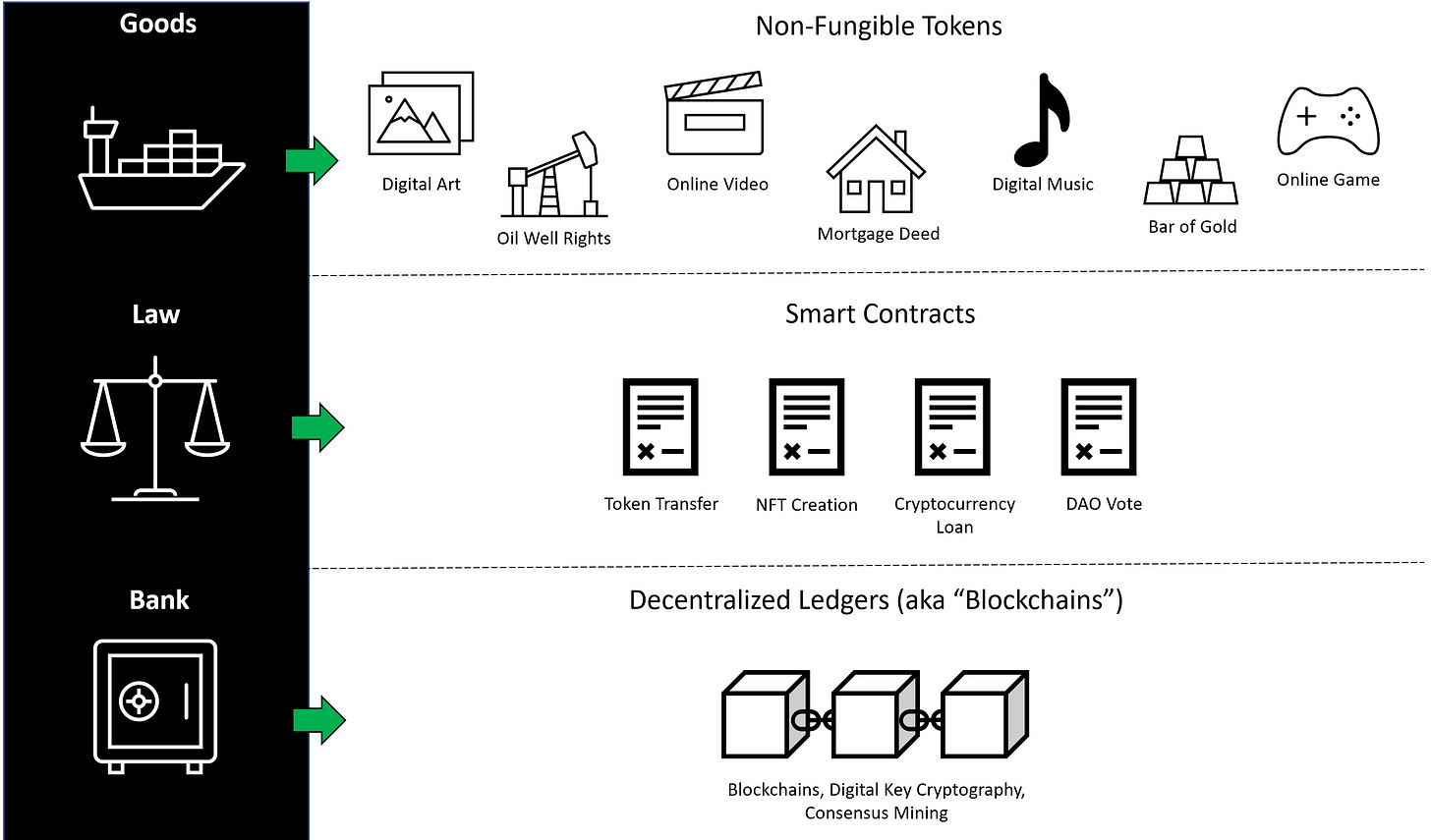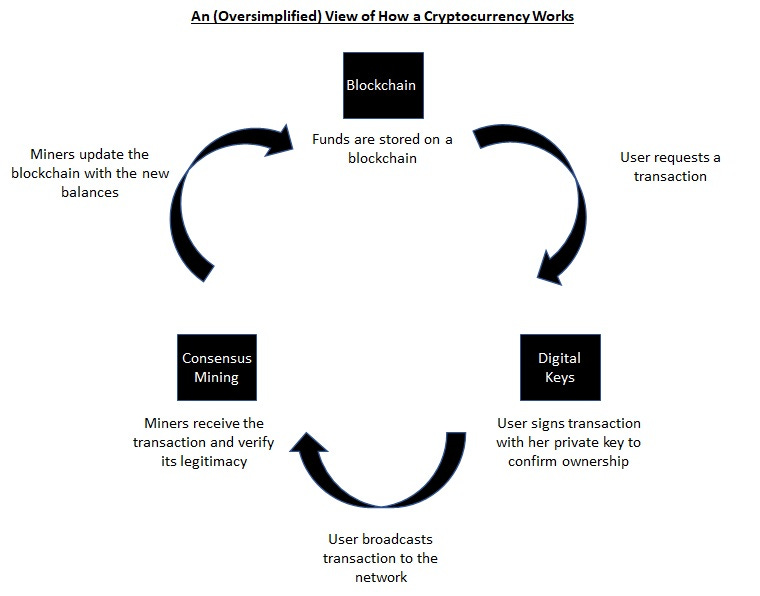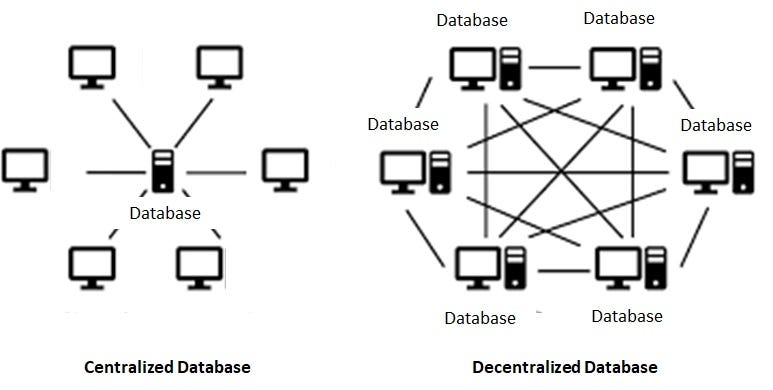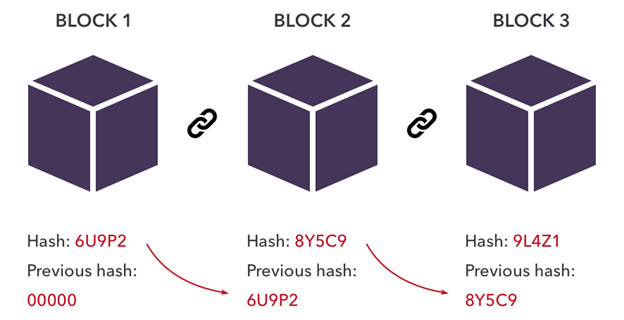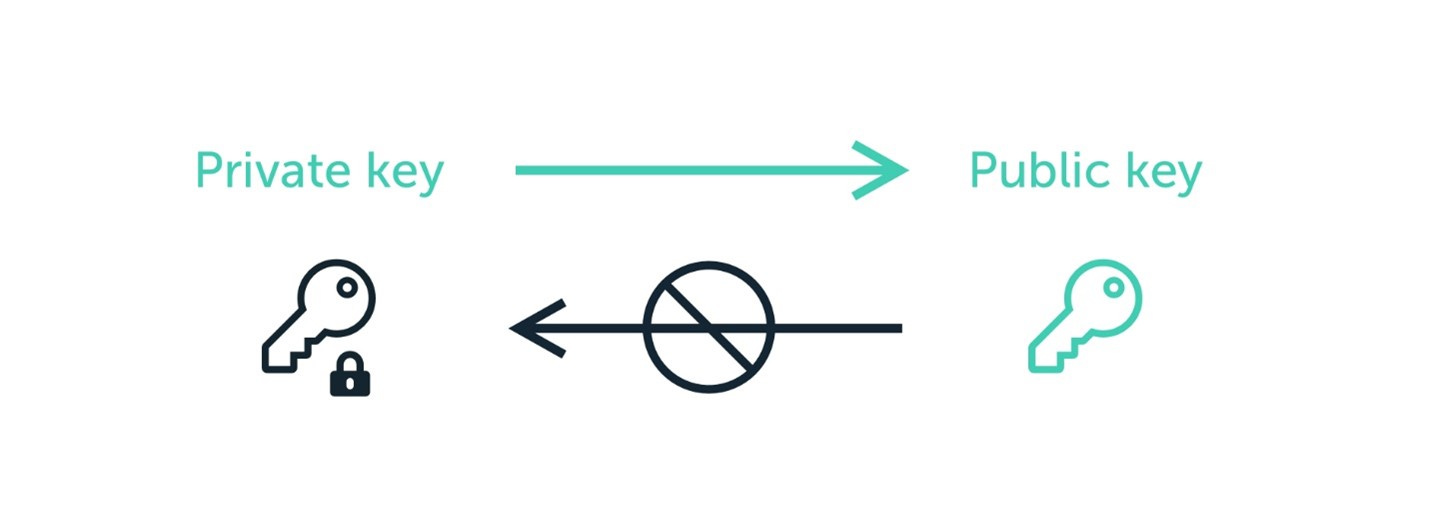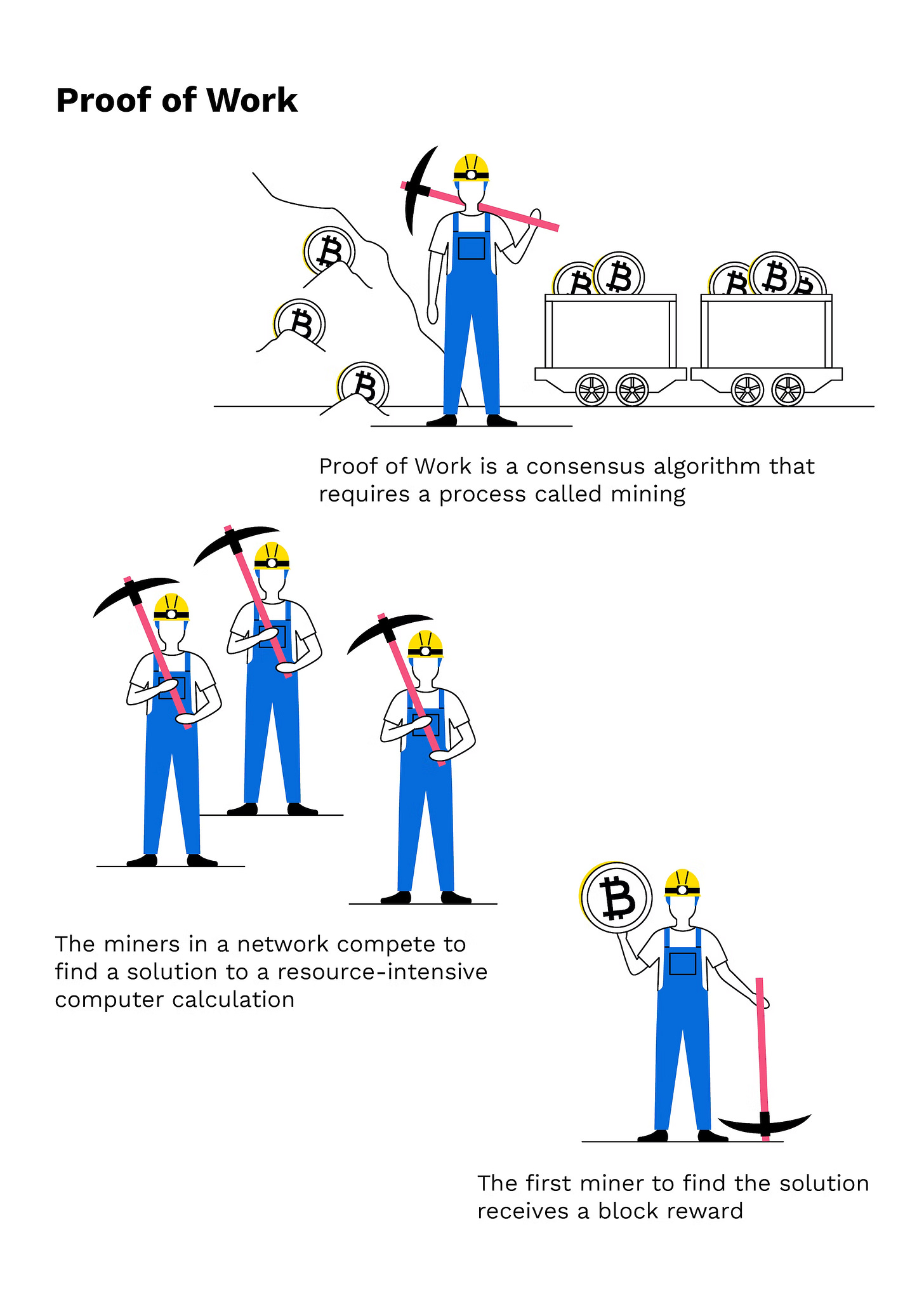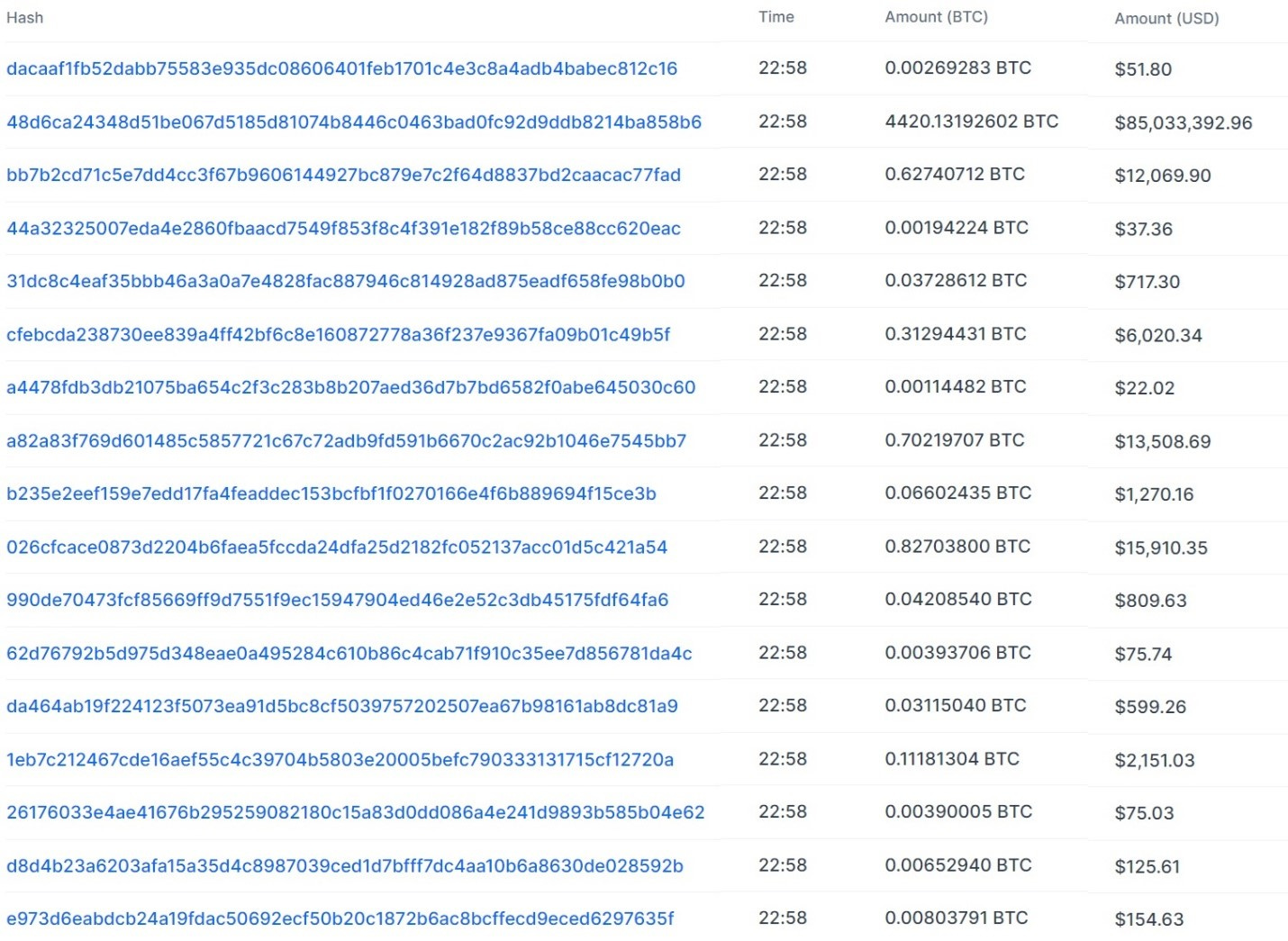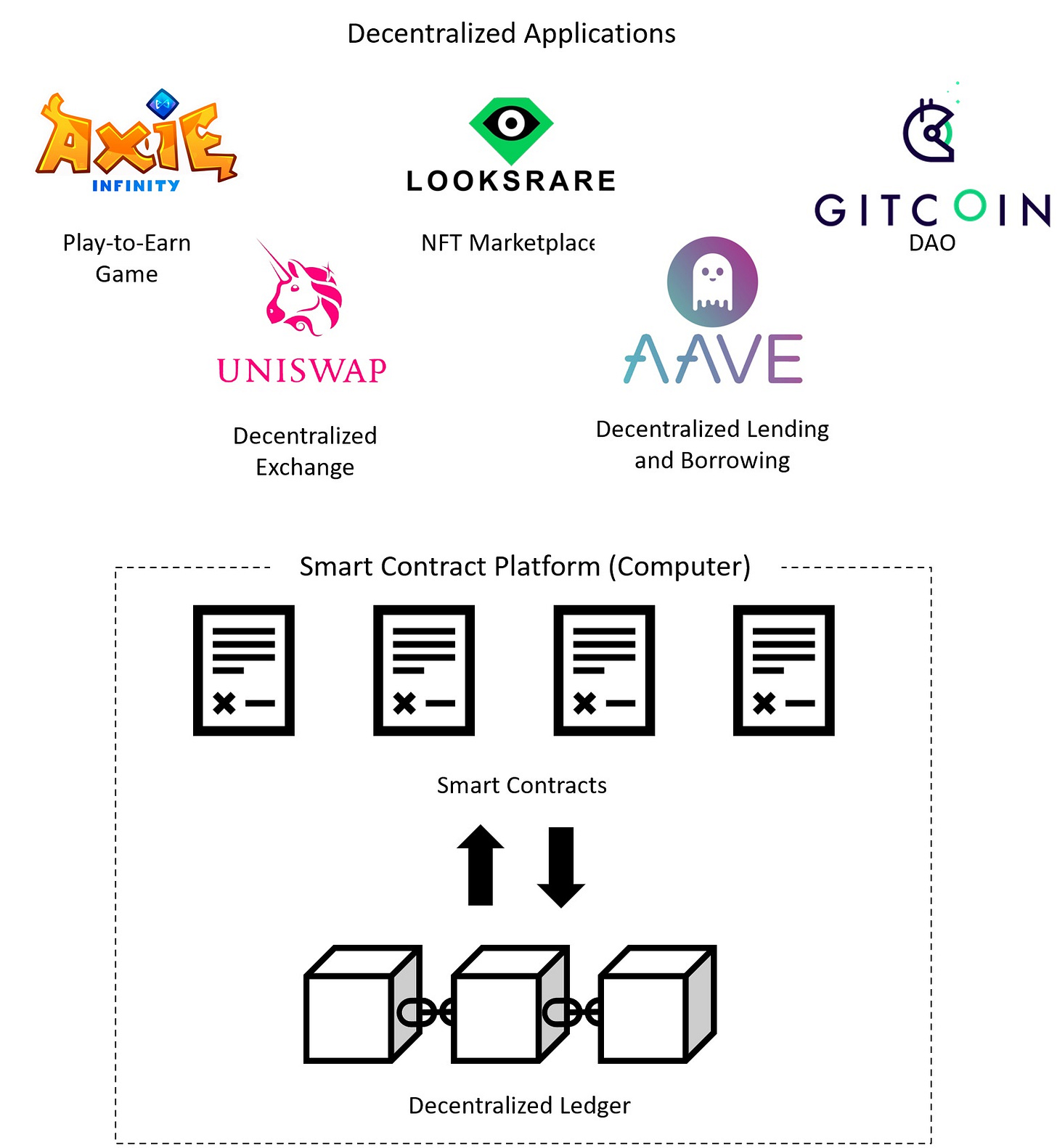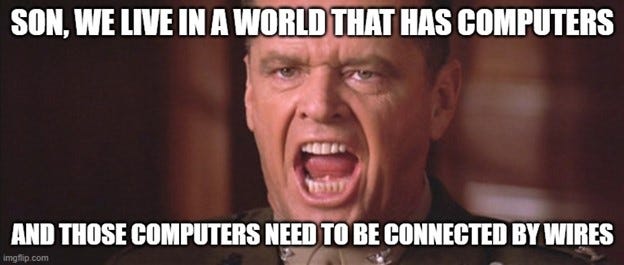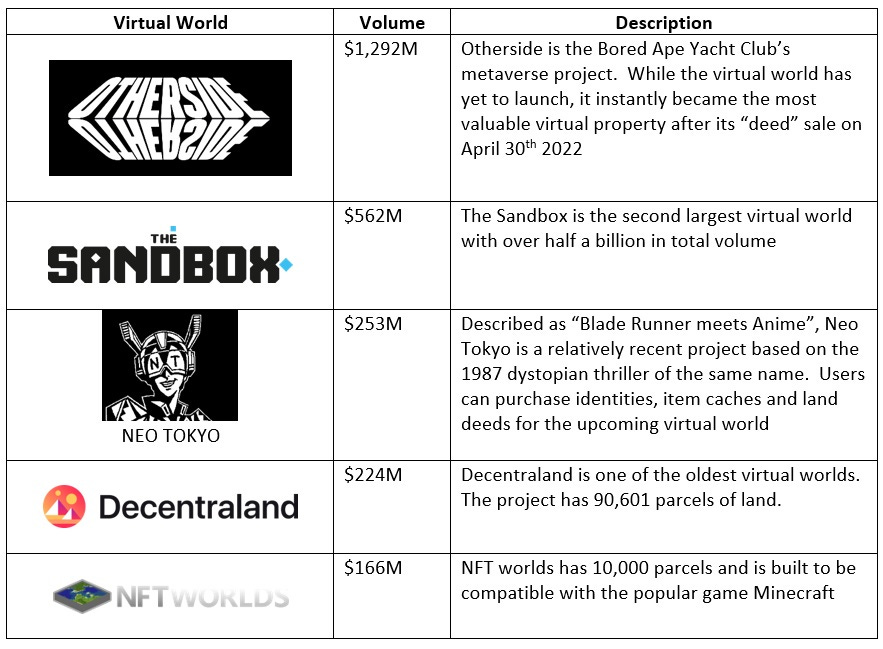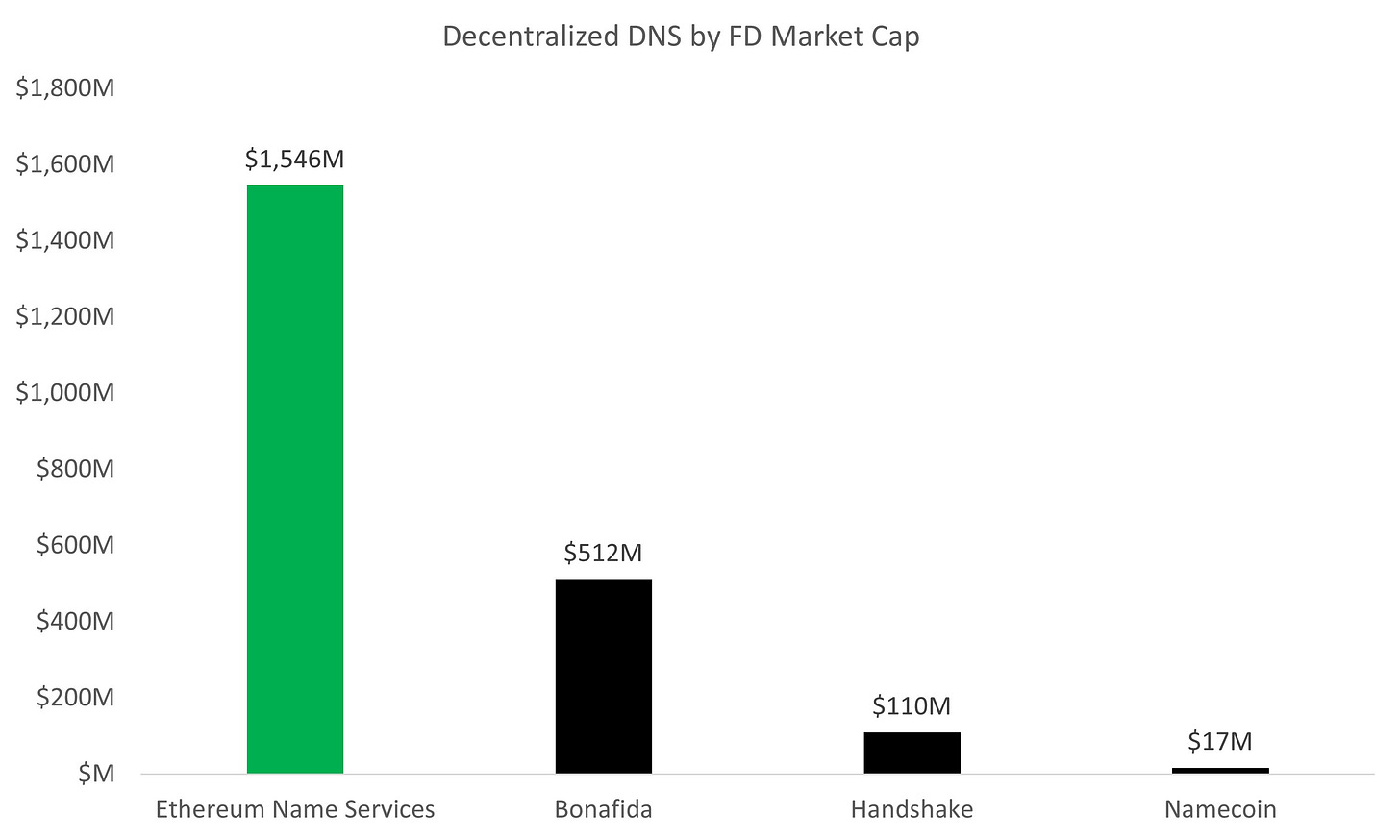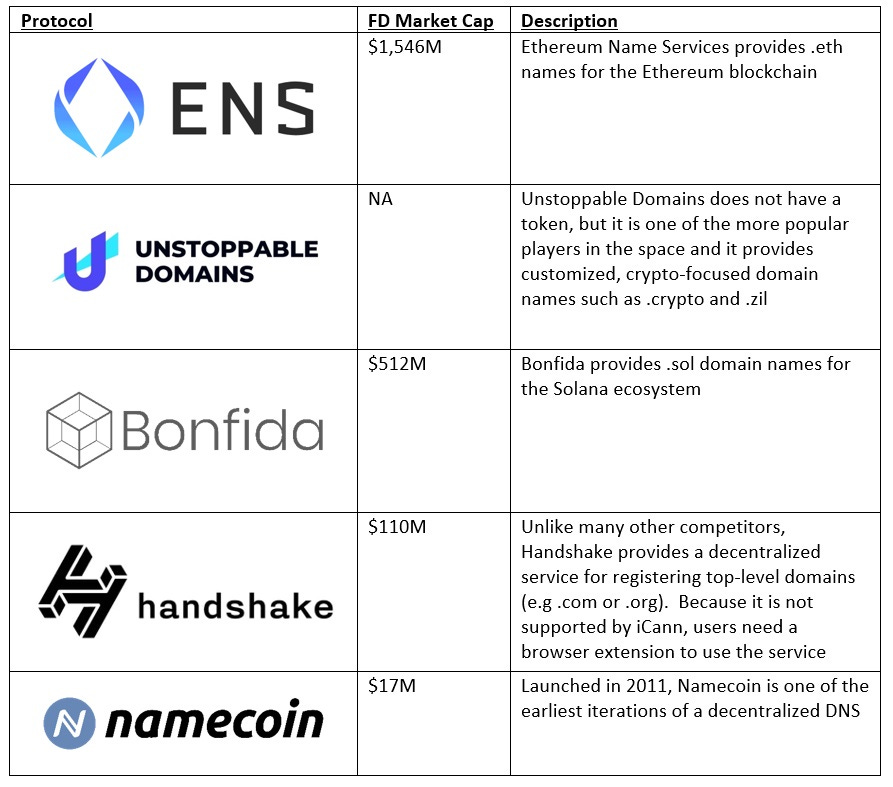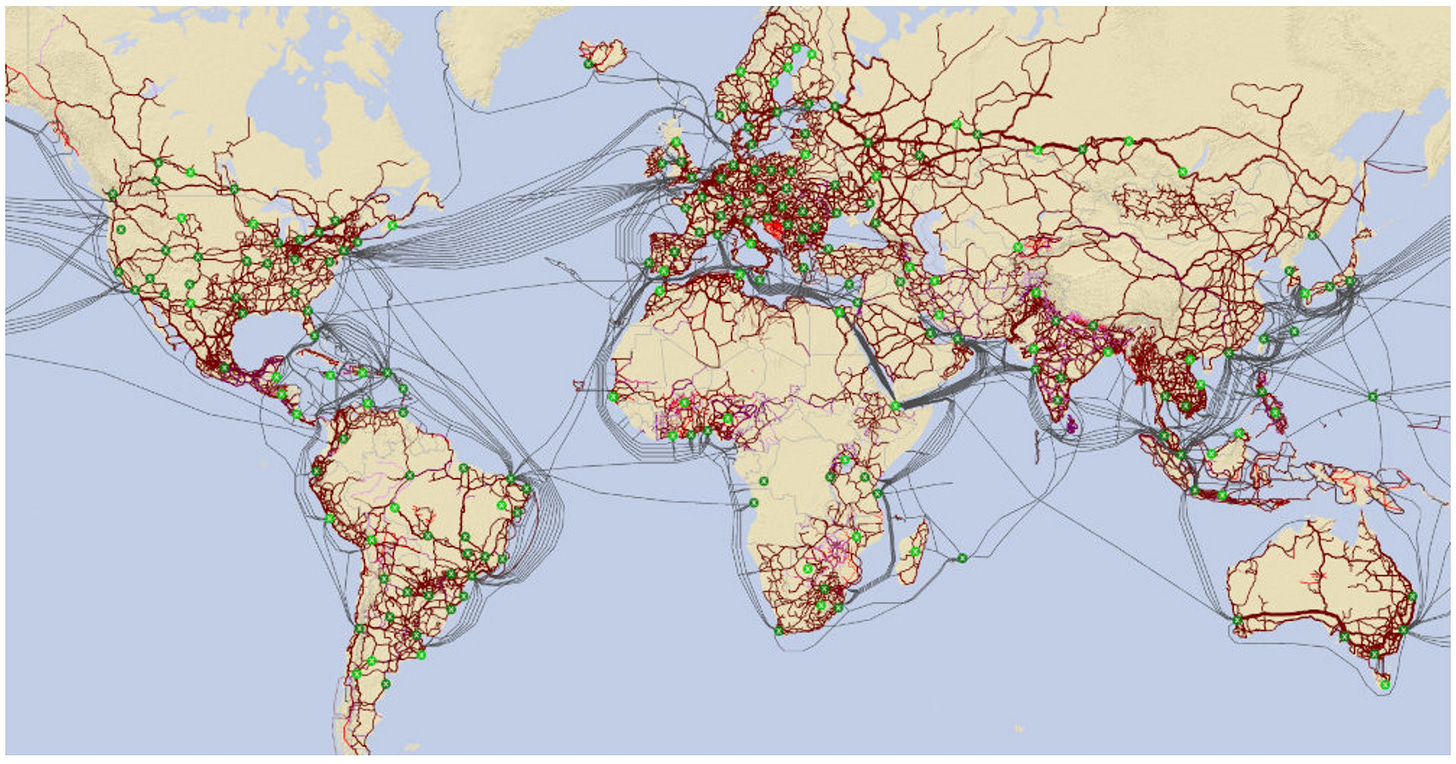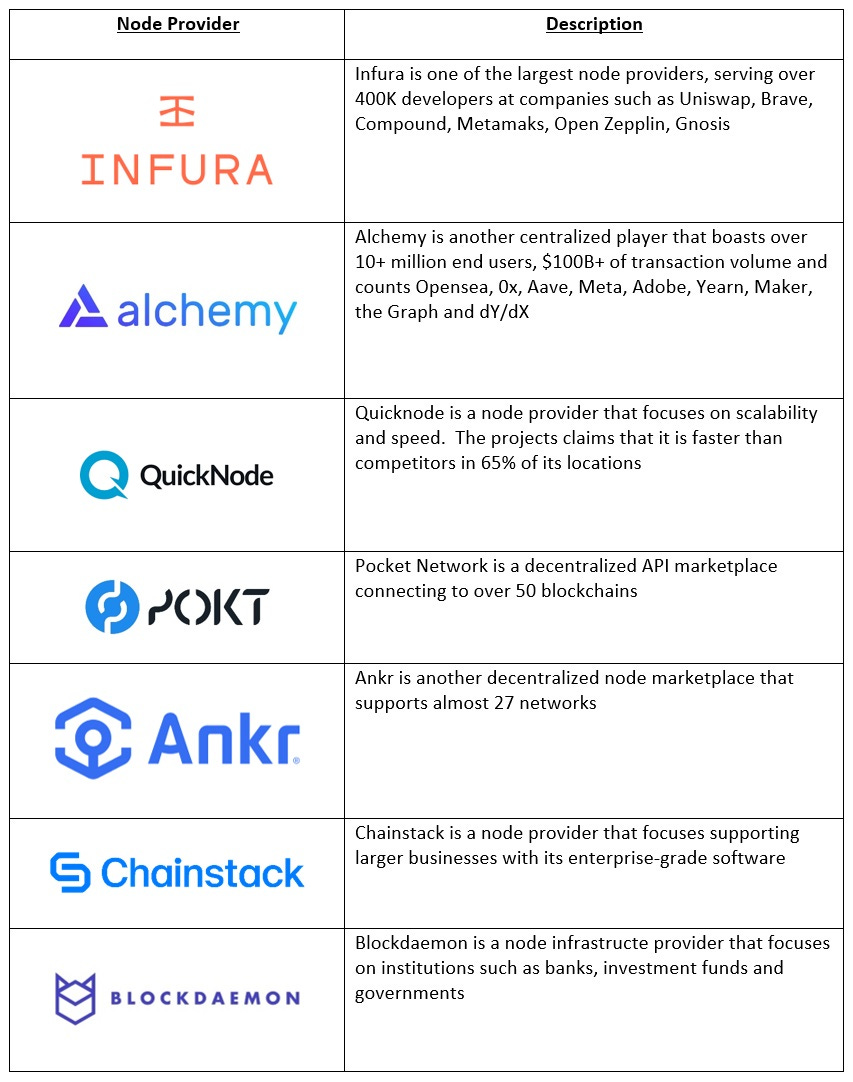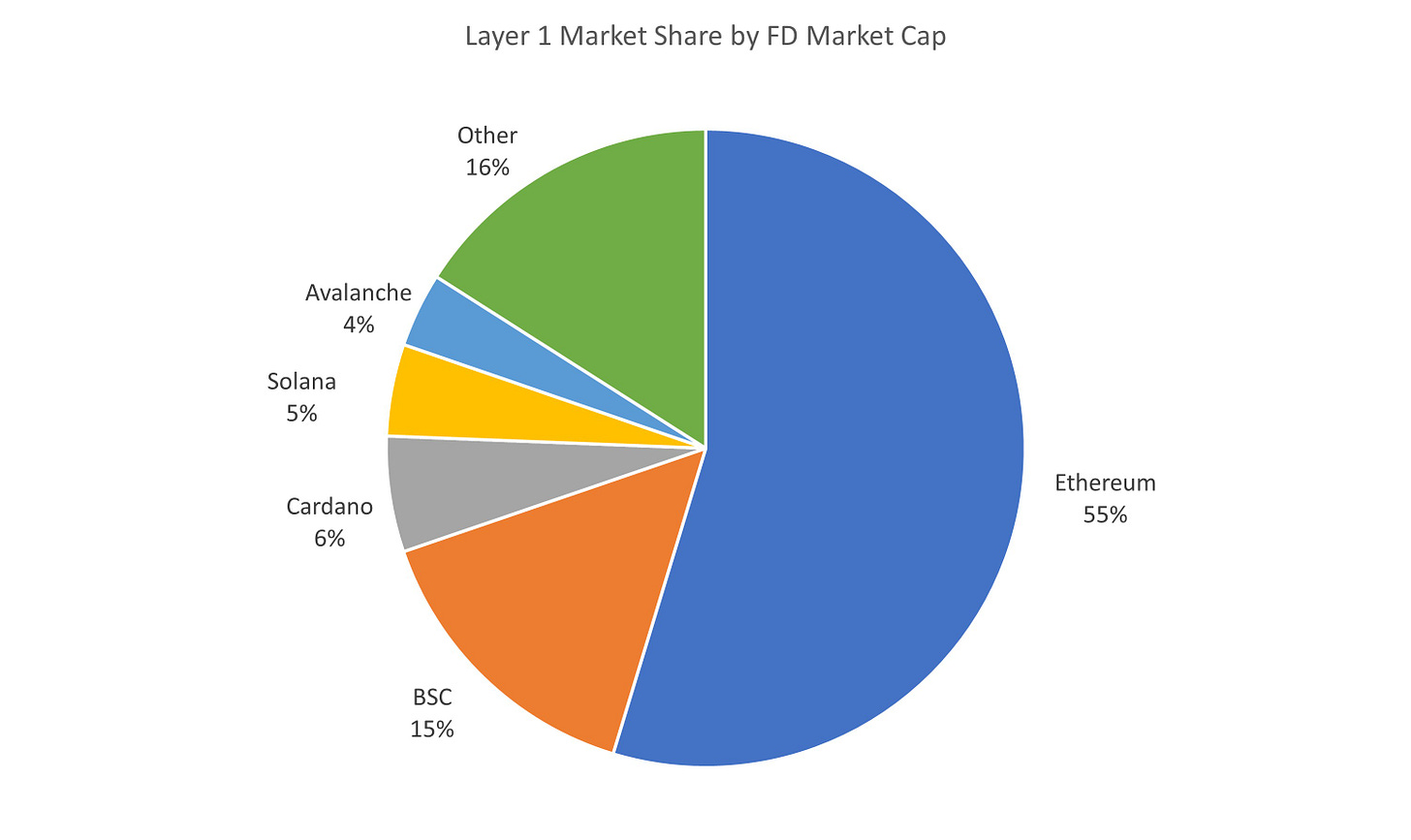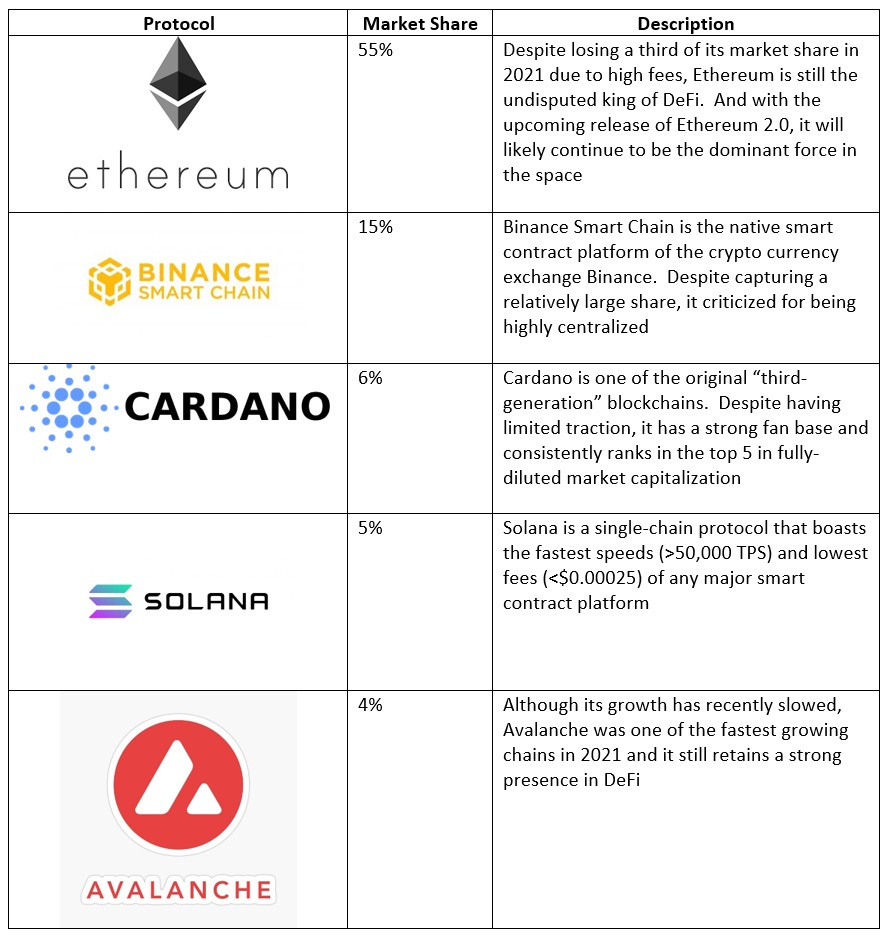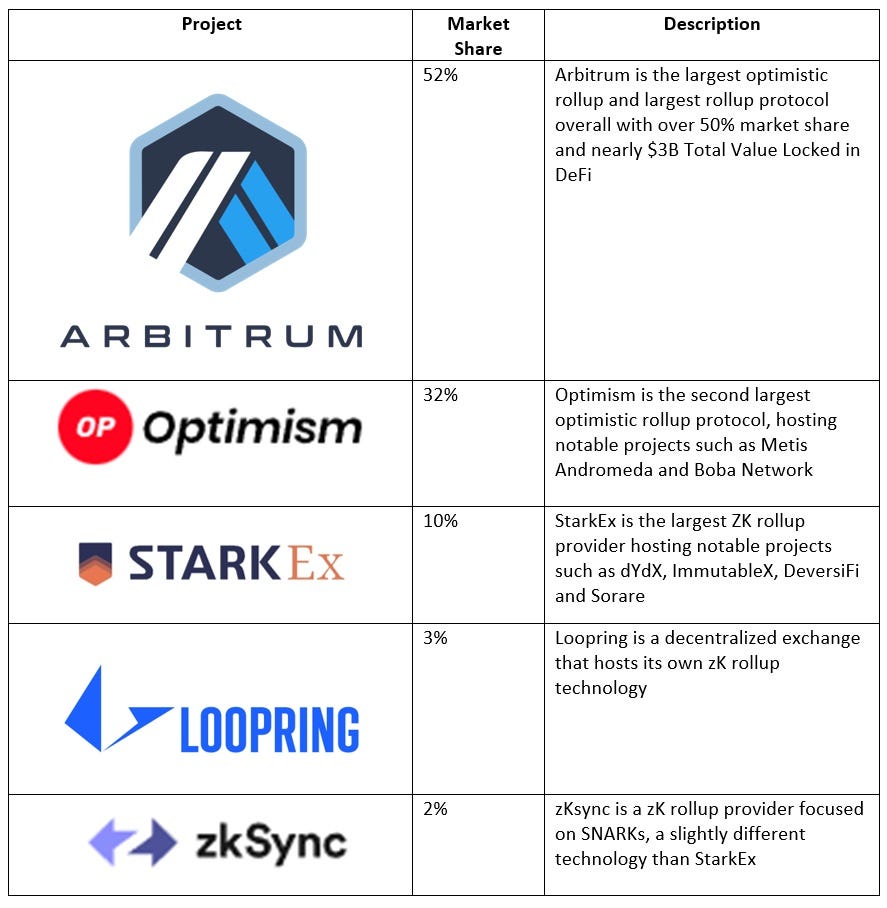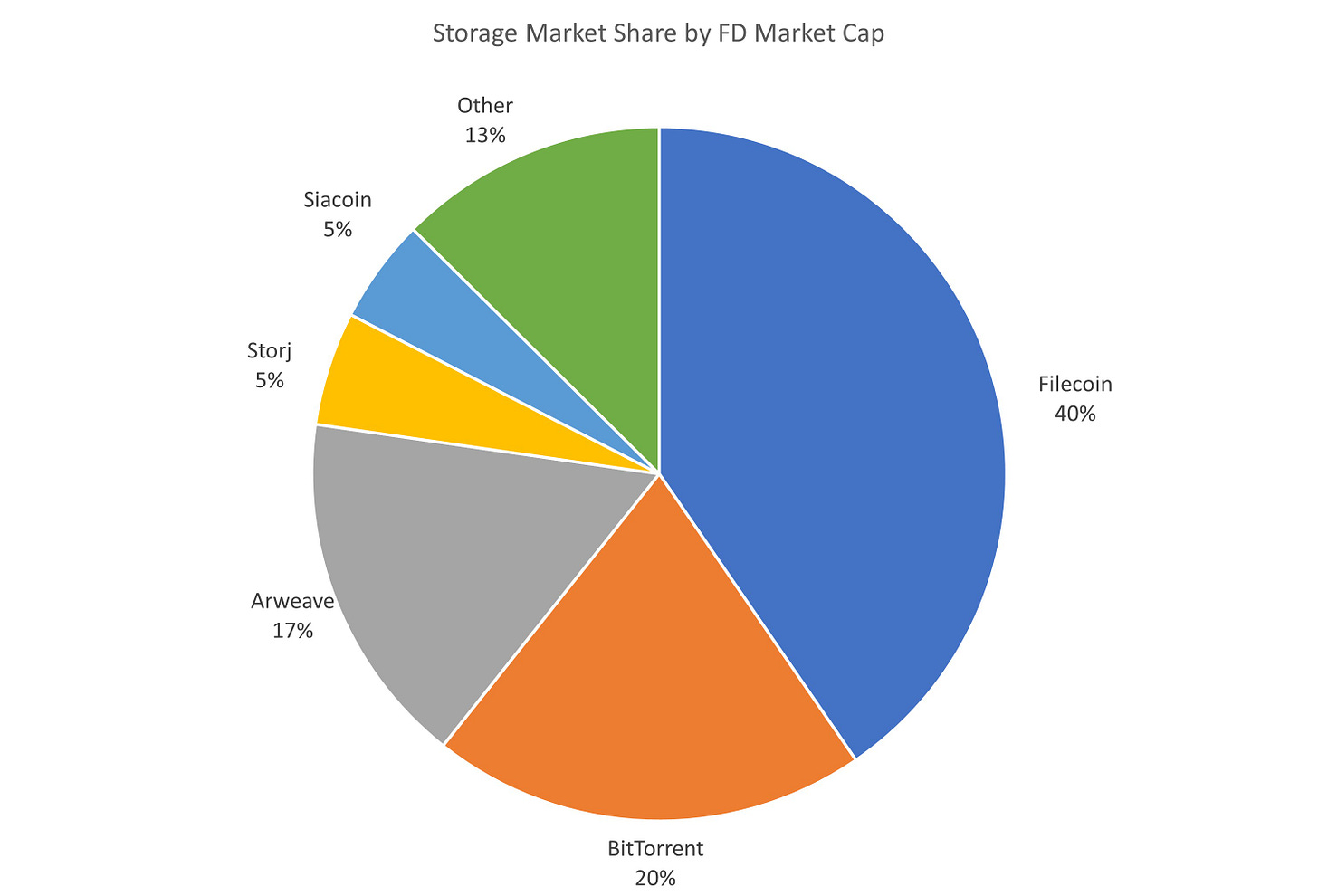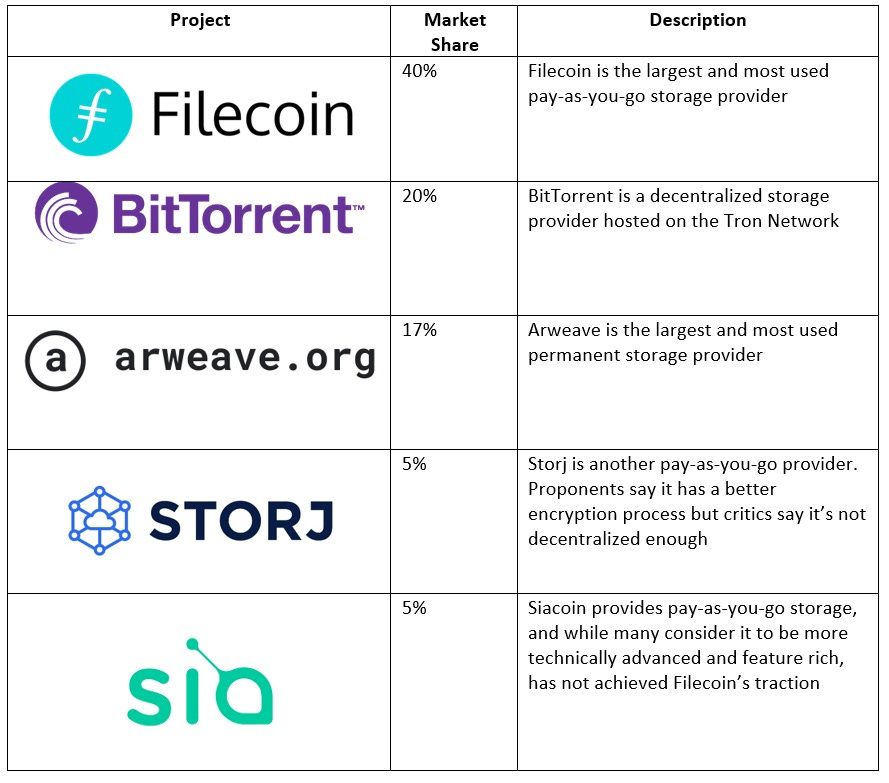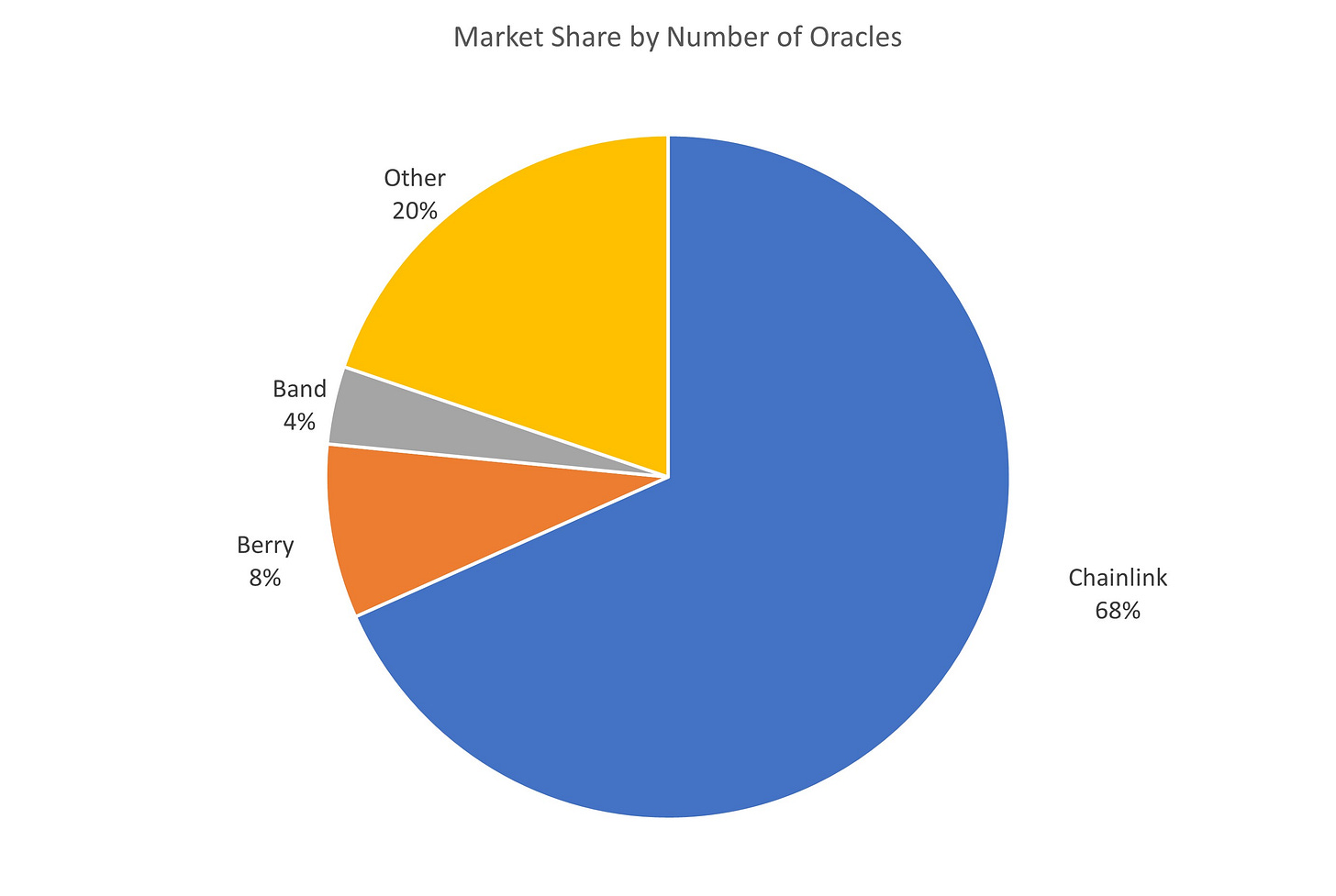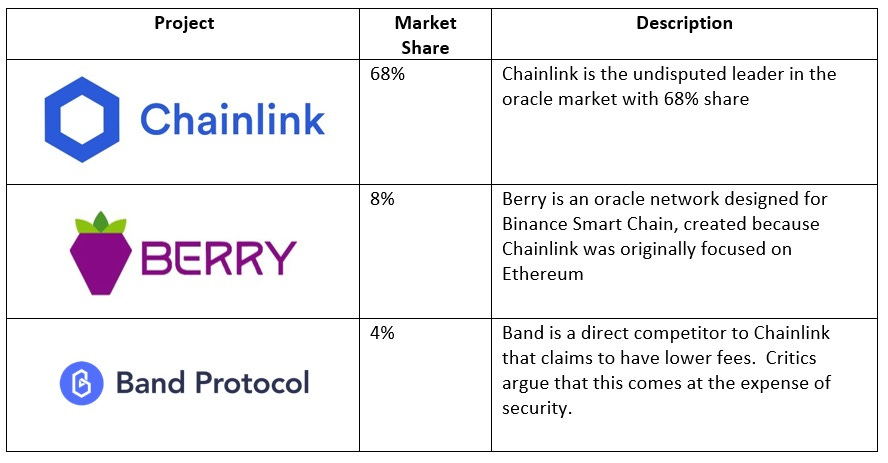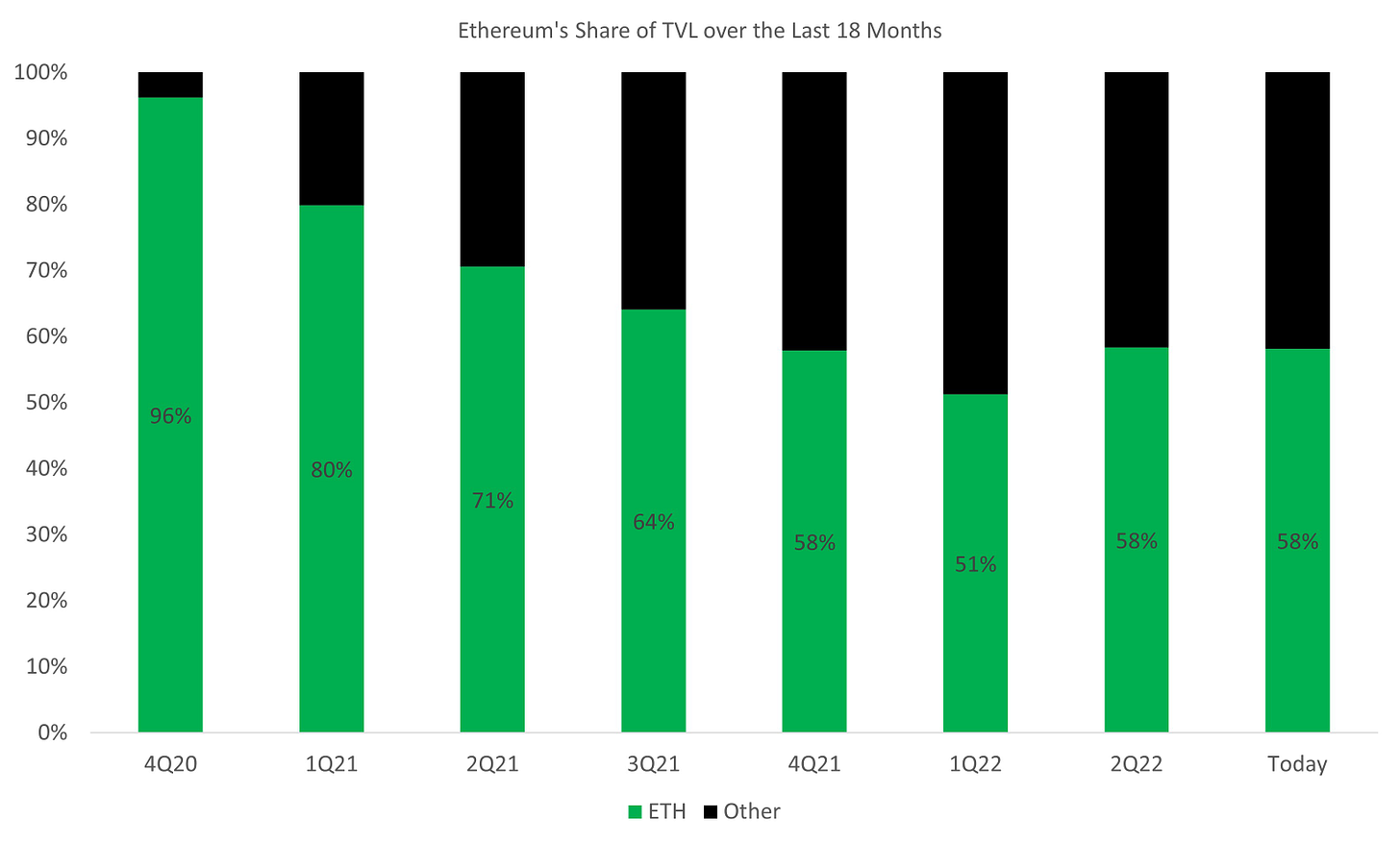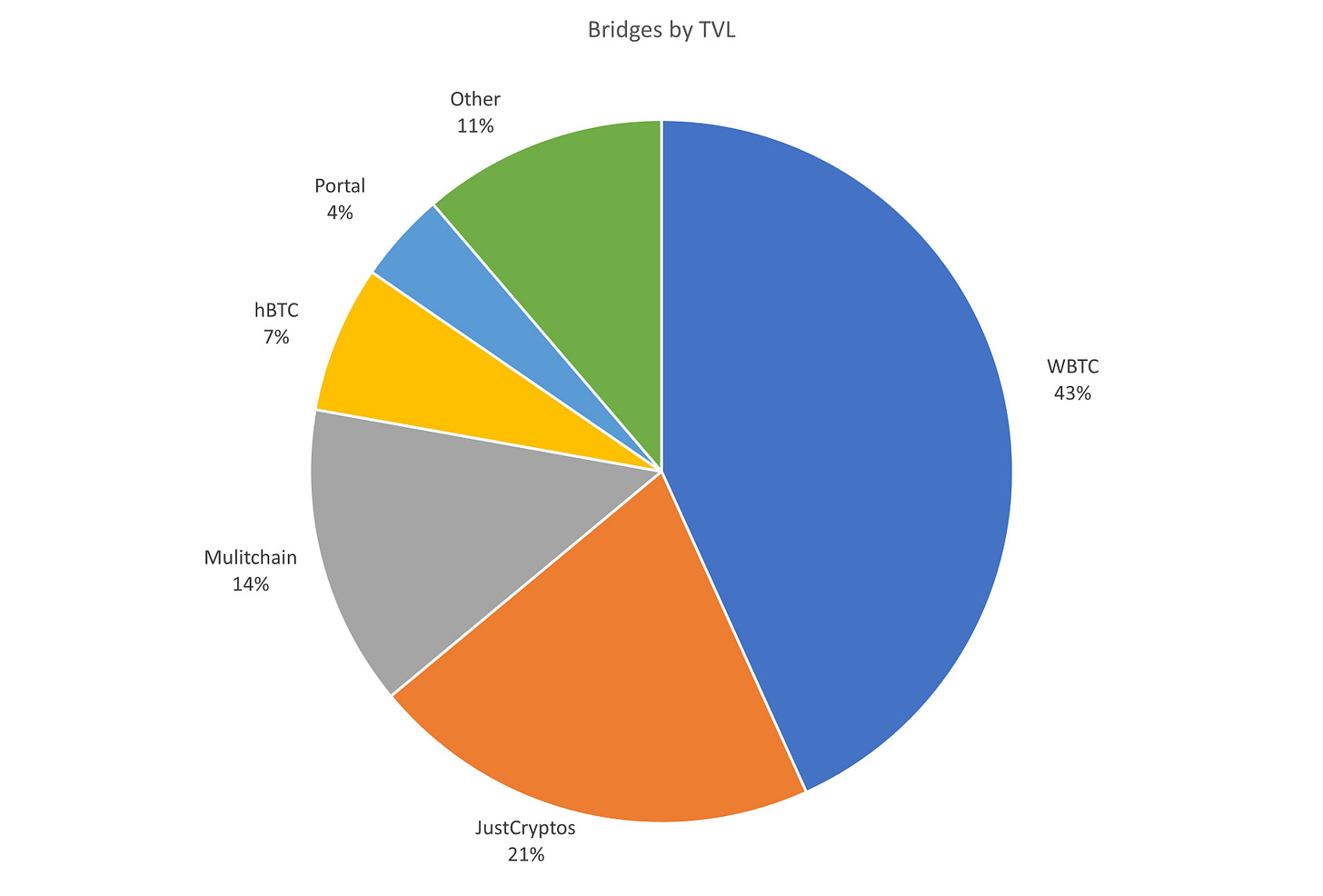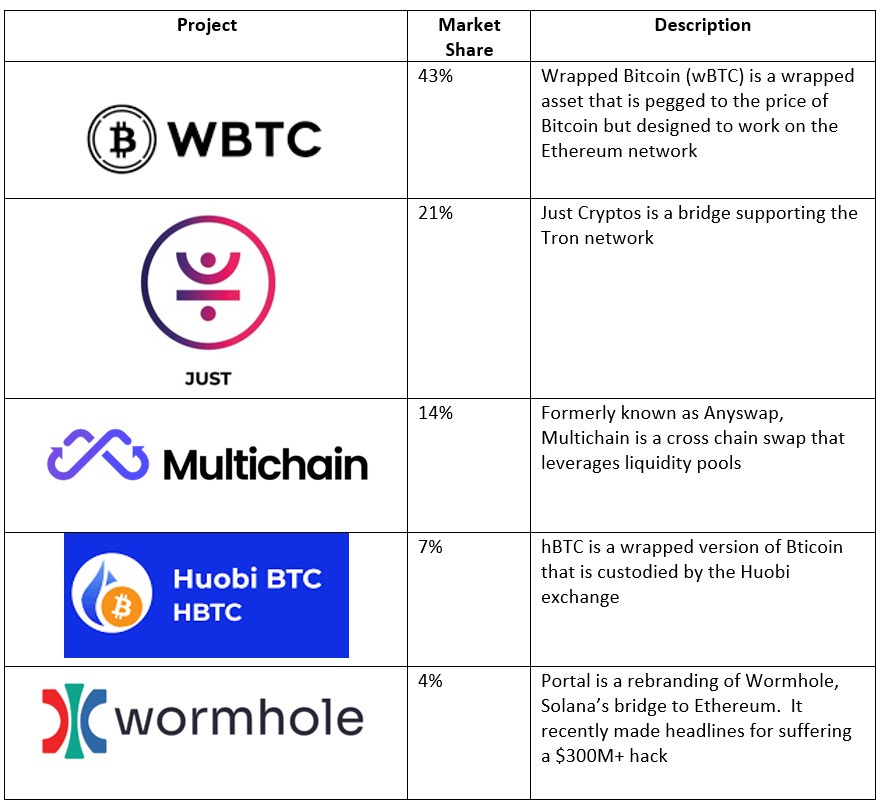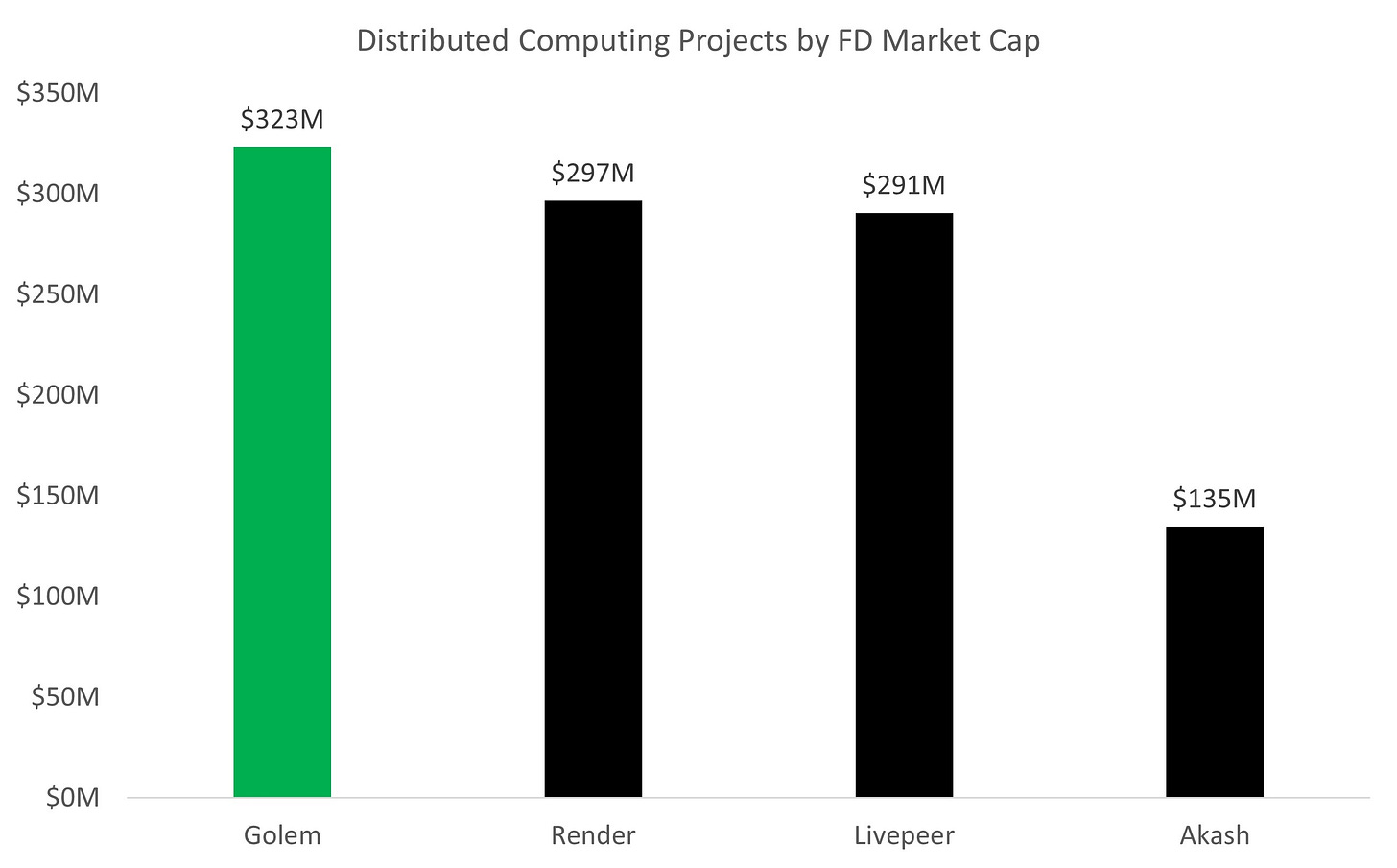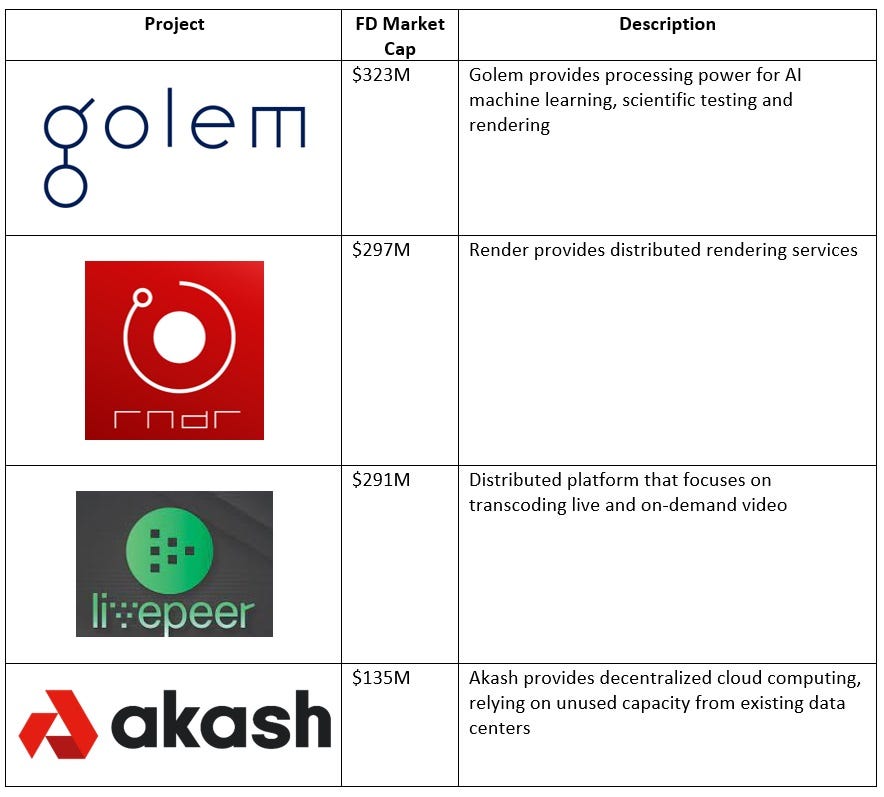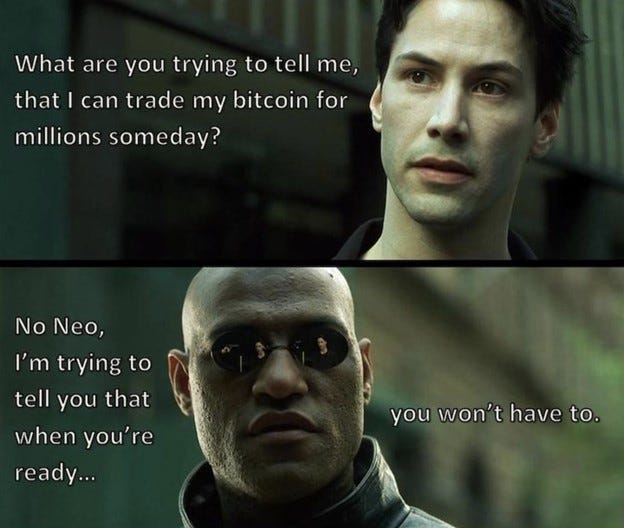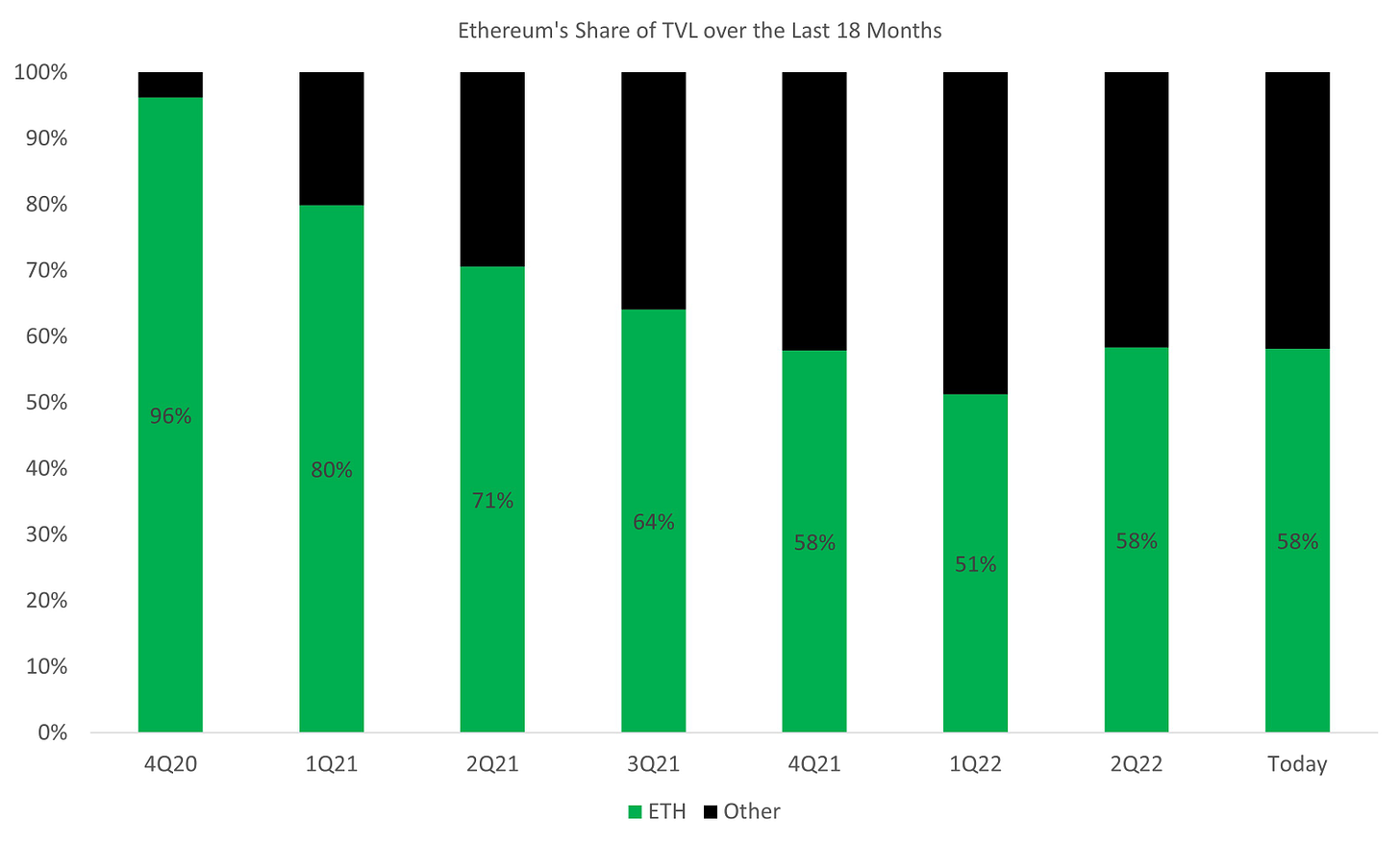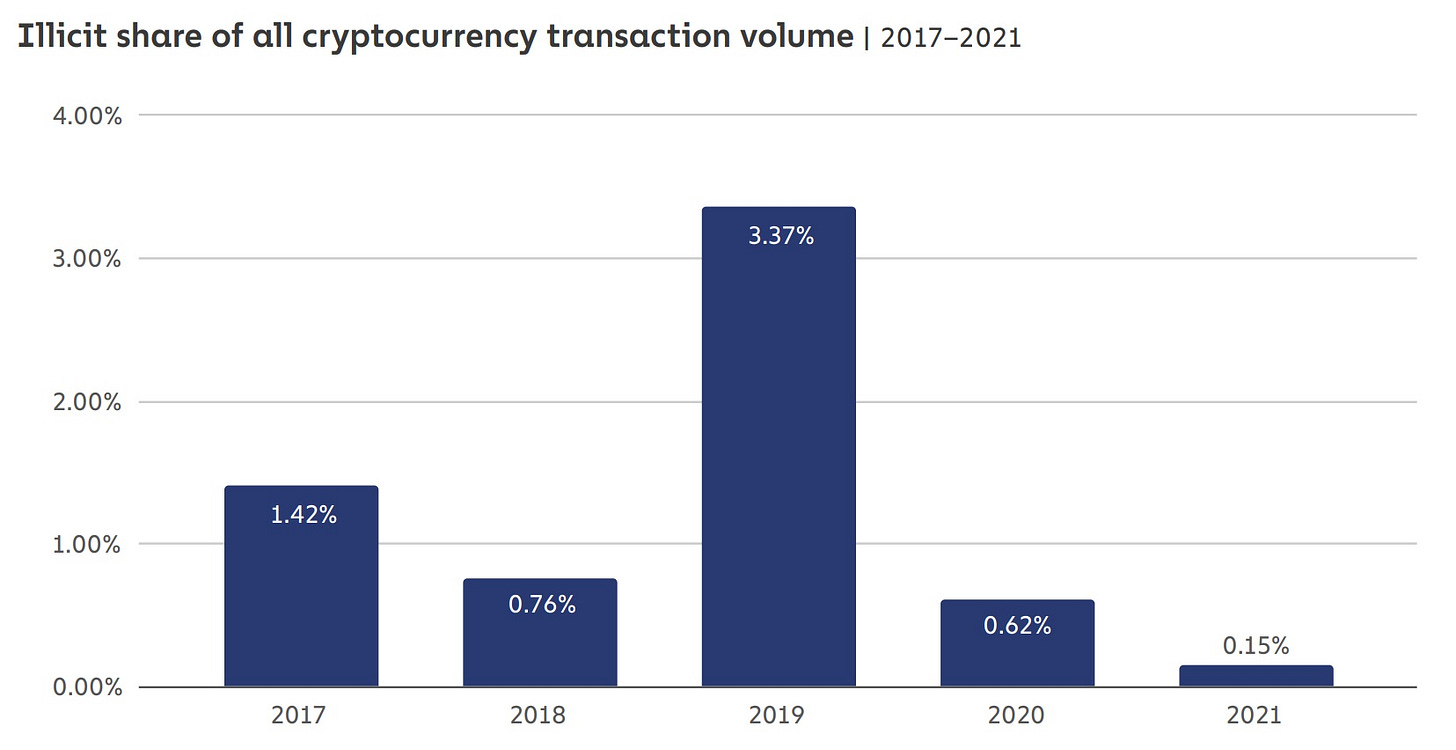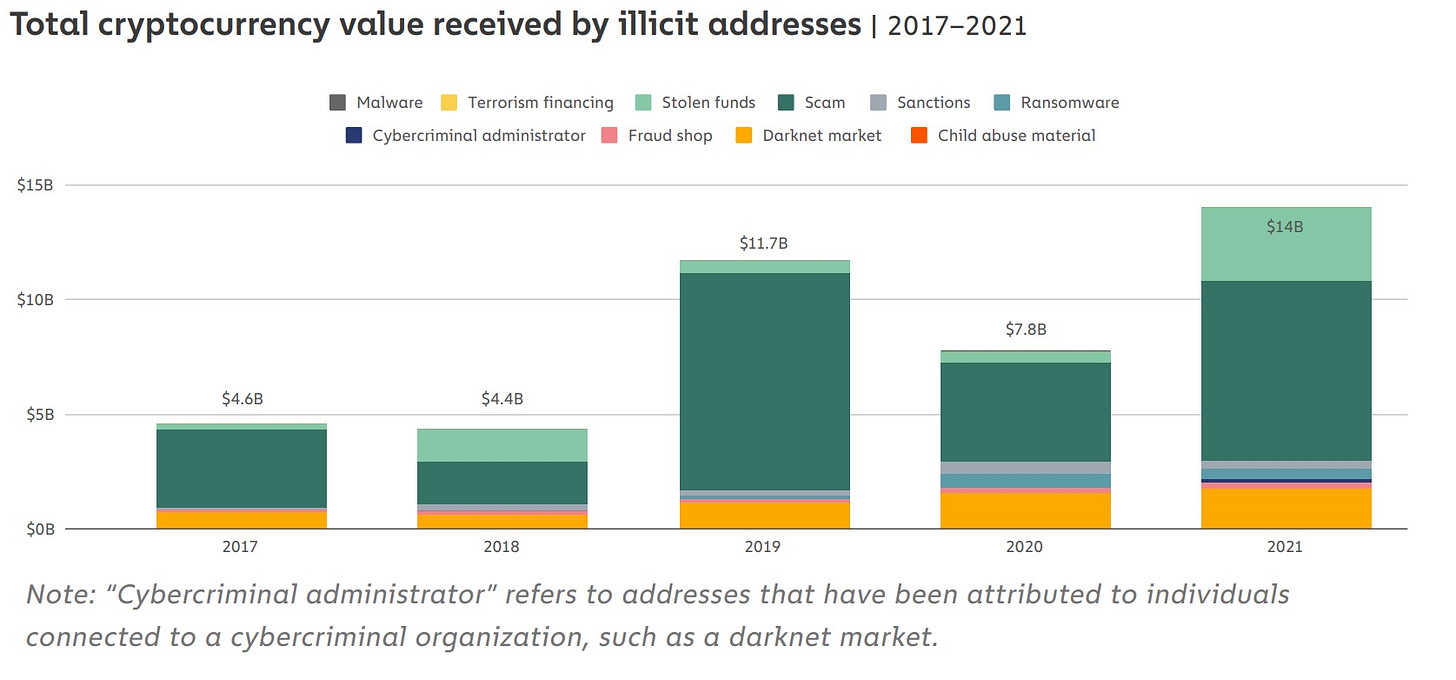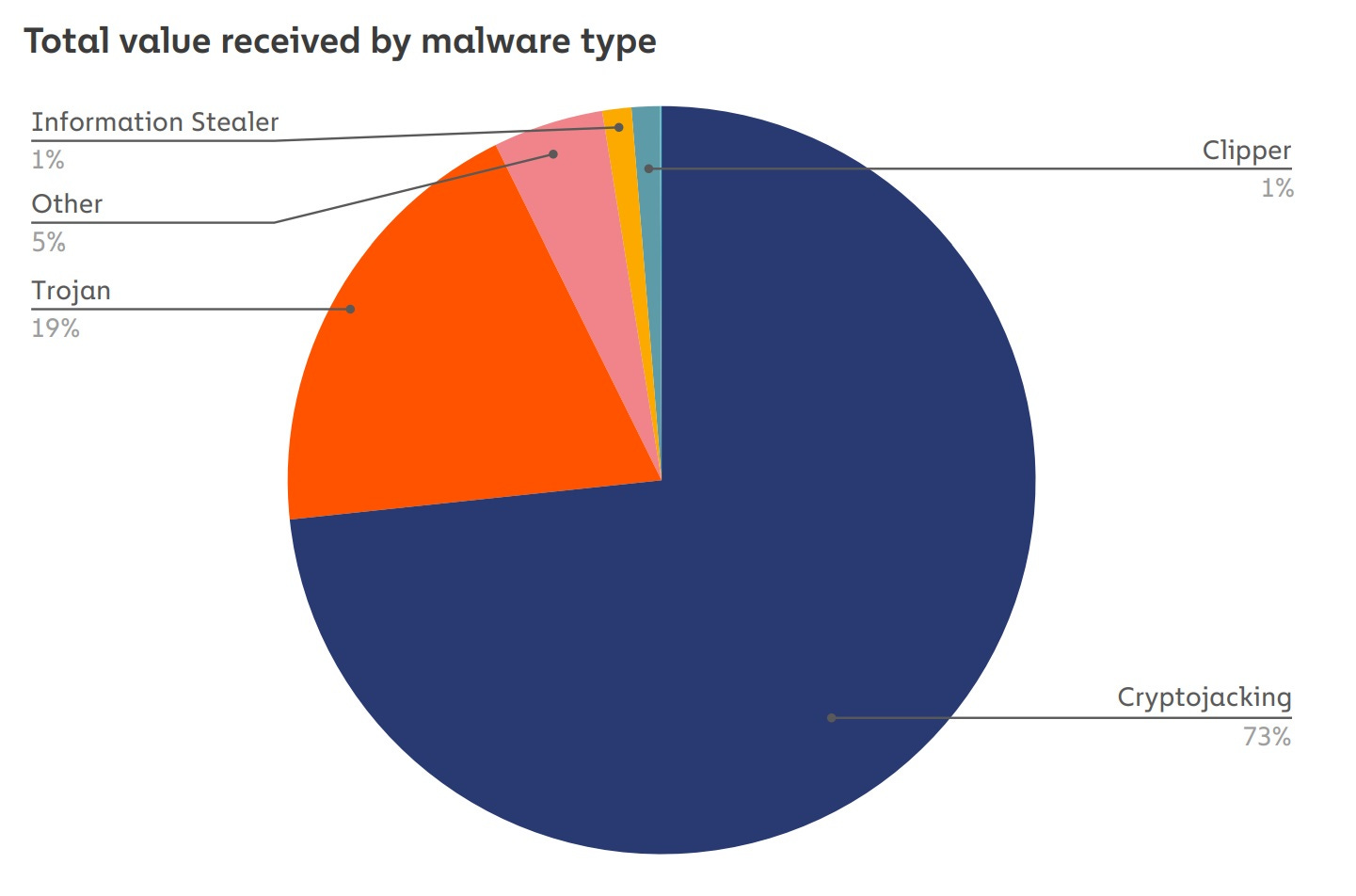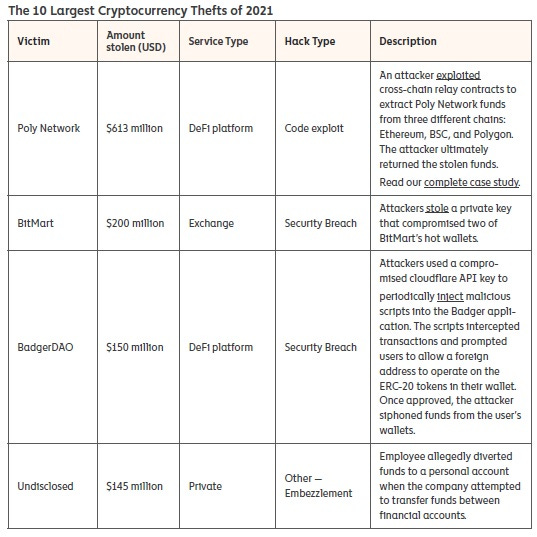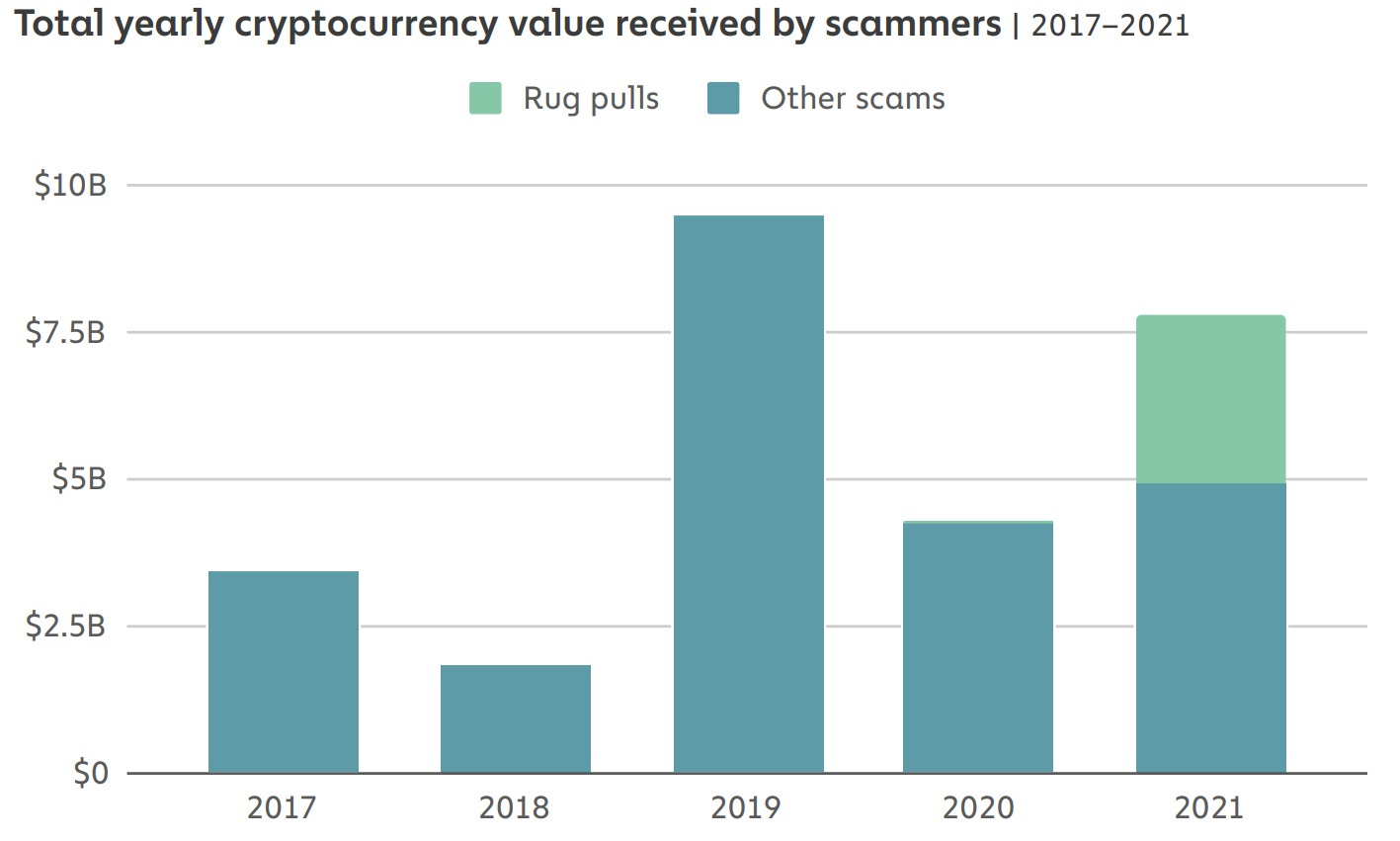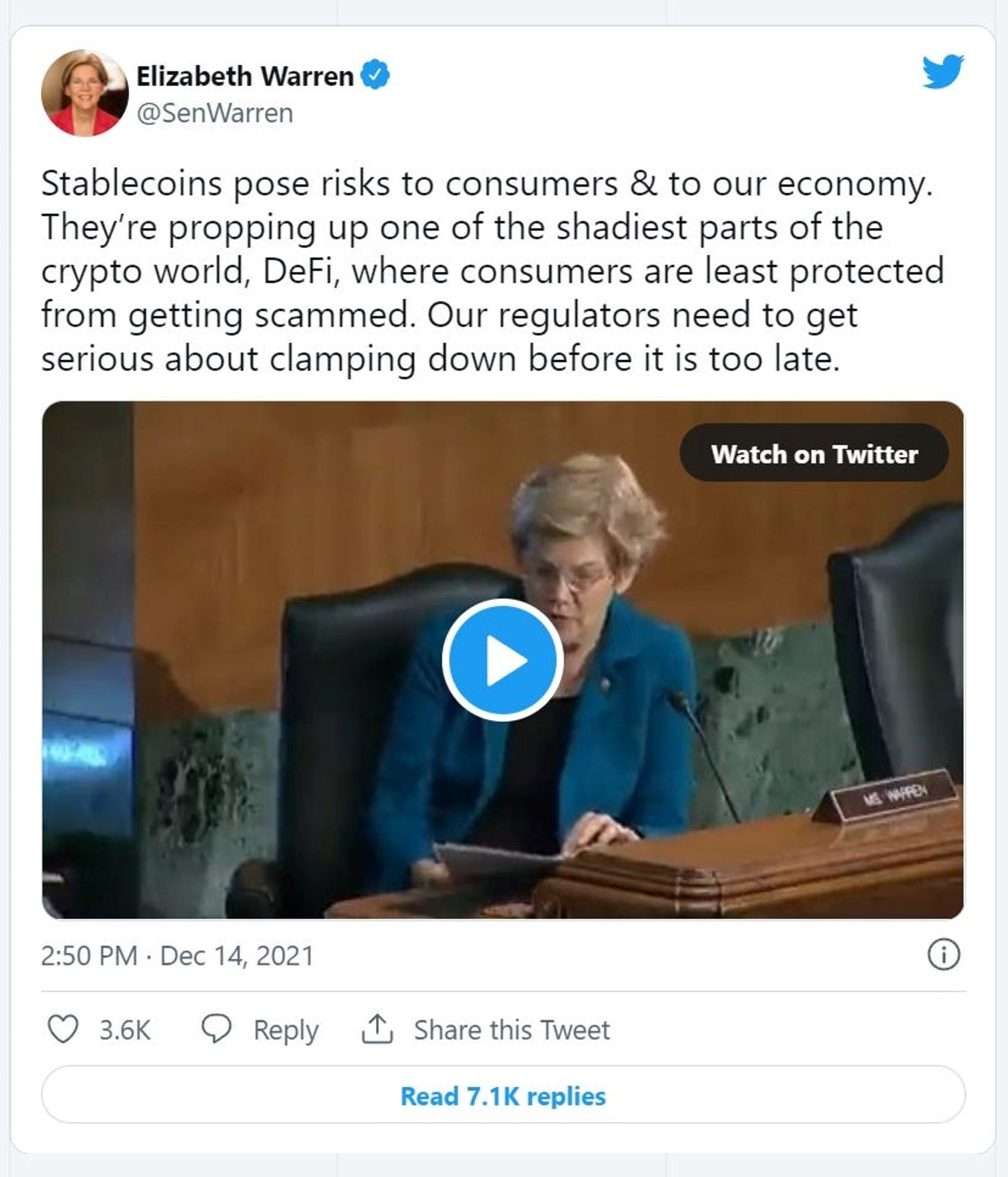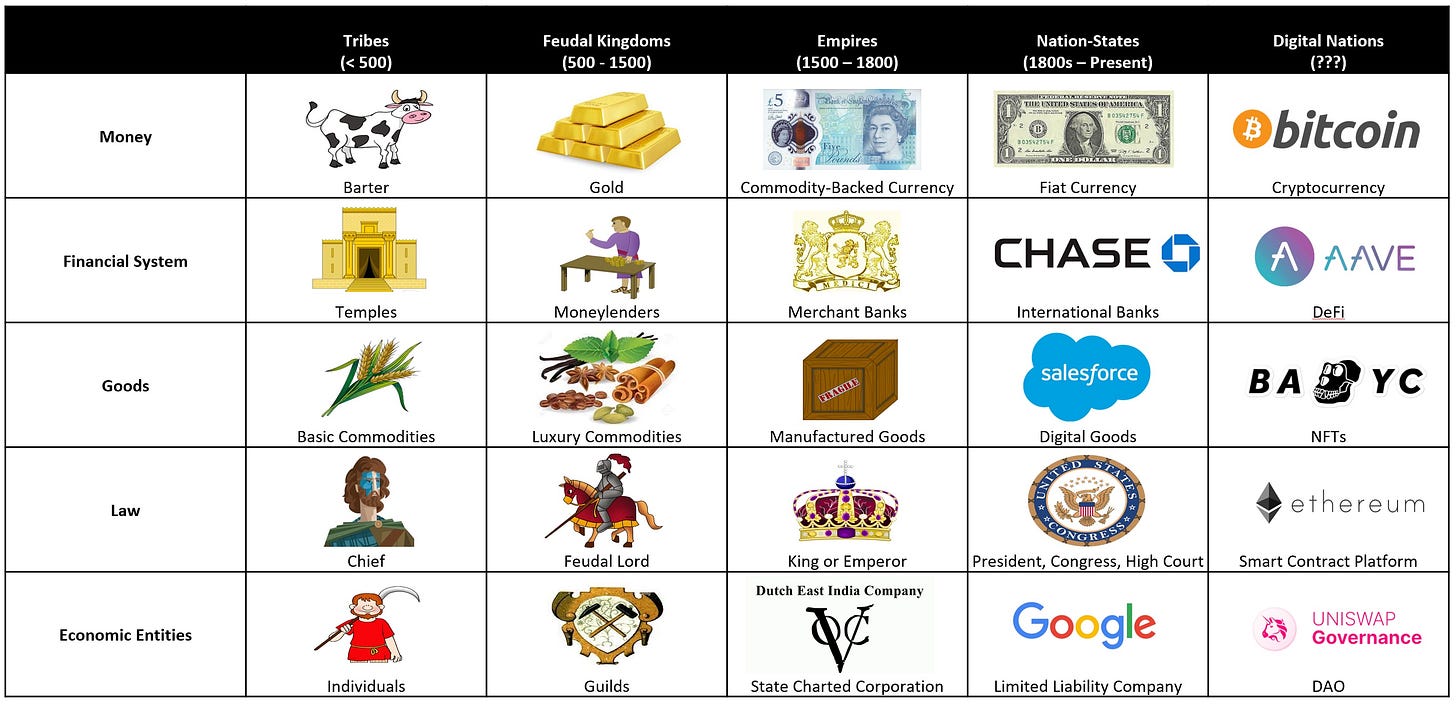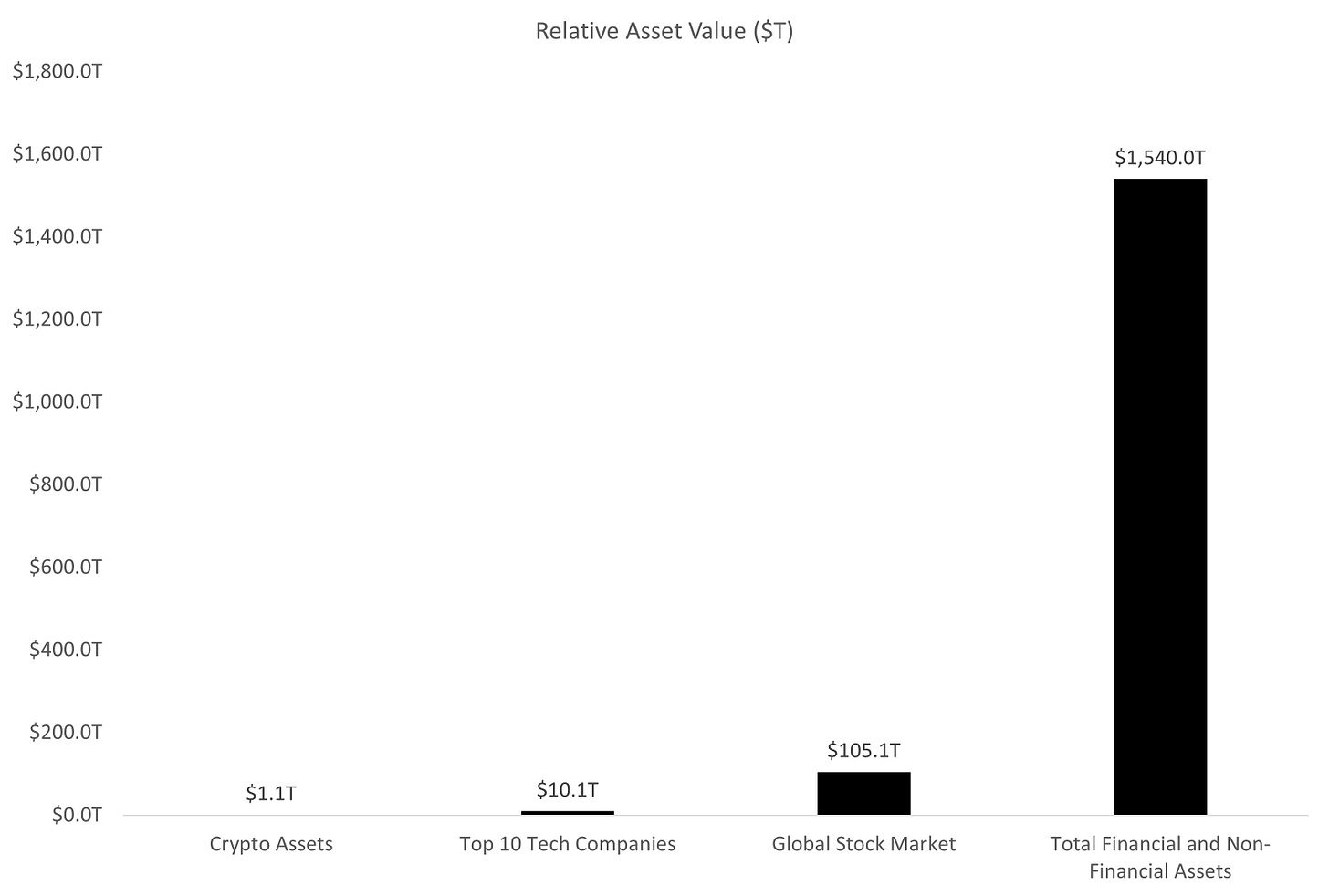The Complete Beginner's Guide to Web3
A comprehensive overview of the trends, technologies, important sectors, key players, problems and potential of Web3.

This article is intended to provide a somewhat thorough introduction to Web3 for beginners. It’s over 20K words (a 1+ hour read) and is organized into 8 parts, which are summarized below for the tl;dr crowd:
What is Web3?: Contrary to popular belief, Web3 is not just the “next version of the internet”. Instead, it’s creating the world’s first truly autonomous digital nations
The Problem with Centralized Economies: While our current system has benefited society in several ways, it’s relatively inefficient, constrained with a myriad of financial and legal regulations and often prone to corruption and abuse
The Benefits of Decentralized Economies: Proponents argue that decentralized digital nations will retain all of the benefits of our traditional system – namely trust, security and growth – while being much more open, efficient, flexible, transparent and democratic
How does Web3 Work?: Web3 economies use blockchains to store their funds and smart contracts to enforce their own laws – meaning that they don’t have to rely on traditional intermediaries such as banks or courts. As such, they largely operate outside of the purview of the existing financial and legal ecosystem, allowing them to eliminate many of the costs, restrictions and regulations we face today
The Web3 Ecosystem: The digital nations of Web3 will use cryptocurrencies as money, DeFi as the financial system, NFTs as native goods, smart contract platforms to codify and enforce laws and DAOs as the native economic entity
Web3 Infrastructure: The Web3 ecosystem is powered by several key pieces of infrastructure including virtual worlds, wallets, decentralized ISPs, node providers, smart contract platforms and decentralized storage providers
Problems with Web3: Web3 suffers from several unsolved problems including high fees, volatility, environmental concerns, poor user experience, limited interoperability and significant crime
Why Web3 Will Eat The World: Web3 is a truly disruptive technology that has the potential to grow 100x or more.
Without further ado, let’s jump into the analysis!
What is Web3?
Few people truly understand the potential of Web3.
It’s not – as most people think – simply the “next version of the internet”. Instead, it’s creating the world’s first autonomous digital nations.
Seemingly disparate verticals such as cryptocurrencies, DeFi, NFTs, smart contract platforms and DAOs will combine to form the building blocks of “borderless” economies that operate outside of the purview of the existing financial, legal and political ecosystem. These new organizations can eliminate many of the costs, restrictions and regulations that hamper us today, and may also help overturn centuries of inequality and economic oppression.
To understand why this is so relevant now, consider the fact that we are becoming a digital species. Over 5 billion people use the internet and the average American spends more than 8 hours online everyday (over 50% of our waking hours!). The technology has revolutionized information sharing, communication and connectivity, becoming arguably the most efficient system for organizing people that has ever existed.
5+ Billion People Use the Internet, Spending an Average of 8 Hours Online per Day
Despite all this, the internet is still a vassal to legacy economic systems. It is almost entirely controlled by third parties – we make transactions in national currencies such as the US Dollar, digital goods are created and controlled by companies such as Google, Amazon, Facebook and Apple and the space is subject to a patchwork of local laws and regulations – such as the European Union’s GDPR or China’s Great Firewall.
The technology behind Web3 changes all of this, and allows us – for the first time in history – to create fully sovereign, self-sufficient online economies with their own:
Money: Cryptocurrencies will replace national, fiat currencies as the new nation’s money
Financial System: DeFi will replace banks as the native financial system
Native Goods: NFTs – assets which are entirely created, used and owned online – will become the native goods of this new economy
Laws: Smart Contract Platforms will replace local administrations and legacy legal systems as the governing law
Corporations: DAOs will replace corporations as the primary economic entities
The potential for this shift is massive, as liberating the trillions in value created by the internet into its own sovereign entities could change the world in ways we can’t even imagine.
The Problem with Centralized Economies
Our current political-legal-economic infrastructure is highly centralized and still relatively autocratic.
National governments are the only entity with the power to create laws and issue currencies, banks control the money supply and flow of capital and large corporations have a near monopoly on the production and sale of most goods and services.
Governments, Banks and Corporations Have a Monopoly on the Economy
Unlike many in the crypto space, I don’t hate this system. In fact, I think that it has served us remarkably well and has undoubtedly been a key driver of prosperity over the few centuries. Governments provide security and help establish trust through laws and regulation, the international financial sector facilitates growth via trade and the international flow of investment capital and corporations help coordinate the production and distribution of goods and services.
But, like any centralized system, our current infrastructure has its issues. It’s bloated, byzantine and draconian and – worst of all – it consolidates power in the hands of the few. This leads to numerous problems including:
Expensive and Inefficient: Governments, banks and large corporations are highly inefficient. Hierarchical layers slow communication and new ideas must often pass-through multiple rounds of approval before being implemented. To make matters worse, armies of bankers, lawyers, accountants, executives and bureaucrats are required to maintain the system, costing an estimated $7 trillion a year in the US (or 35% of GDP)
Potential for Corruption: Even the best centralized economies are notoriously opaque. We aren’t privy to many of the internal decisions of our government, corporations are only required to share certain types of information on an intermittent basis and – as the financial crisis of 2008 proved – even the banks and regulators had little idea what was sitting on the balance sheets of our largest financial institutions. At best, this opacity is a recipe for negligence, at worst, it is a breeding ground for corruption
Seizure: In our current system, it’s debatable whether you really own your assets. Many governments can arbitrarily revoke citizenship, corporations can take your digital goods and banks can freeze and even seize your assets at will. While this may seem far-fetched, consider that in 2013, the Government of Cyprus seized 47.5% of all bank accounts over €100,000 to bail-out its failing banking system
Limited Access: The economic agents of nation-states are the ultimate gatekeepers. Gaining citizenship to many countries is often impossible and banks can decide whether they want you as a customer. While the latter is generally not a problem in the developed world, this is a huge issue in growing economies. Today, nearly 1.7 billion people remain unbanked simply because they aren’t profitable enough to be considered by global financial institutions
Limited Privacy: Our current system offers citizens very little privacy. Governments require extensive documentation, banks must collect detailed personal information to adhere to KYC, AML and CFT regulations and companies such as Facebook own all the data you post. While in some cases this produces comical effects (such as a man learning from Facebook that he was going to be a father before his wife told him), it has also produced dystopian ones (such as Facebook illegally sharing user vast amounts of private user data with third parties in the Cambridge Analytica scandal)
Censorship: While many modern democracies have codified freedom of speech, this unfortunately doesn’t always apply to private institutions. Companies such as Twitter have full discretion over who can access its site and whom they can ban. To date, they have banned hundreds of thousands of people, including several high-profile users. This problem also isn’t limited to social media, as Apple recently banned Epic Games, the creator of the multi-billion dollar game Fortnite, from its App Store after a revenue dispute
Hidden Taxes: In addition to the taxes we pay to the federal government, citizens of many developed nation states are also subject to a variety of “hidden taxes”. For instance, banks often charge enormous fees on credit card transactions and international money transfers, and “Big Tech” often takes a large cut of revenues earned by artists and entrepreneurs. For instance, Spotify garners 30% of the revenues from a song, and Apple often charges a 30% “tax” on every sale made through their App Store
Lack of Interoperability: Many players in the economic ecosystem of modern nation-states operate as “walled gardens”, limiting the interoperability between financial institutions and technology companies (i.e. an app built for Apple’s App Store will rarely work on Google). This makes it difficult to even transfer assets between entities let alone share and collaborate on new technologies and products
Together, these concerns represent a major problem. Not only do they limit growth, but they also continue to drive inequality.
So why do we tolerate these inefficiencies? Well, we don’t really have a choice due to what is known as the Byzantine General’s Problem. While I’m oversimplifying a bit, this concept basically states that large groups of humans can’t trust one another or coordinate across vast distances without using centralized third parties (such as governments, banks or corporations) to establish trust. For example, when a stranger sends you money online, you must rely on your bank to ensure that 1) they are whom they say they are and 2) they have the money they say they have and 3) they actually send it.
The Benefits of Decentralized Economies
This all changed in 2009 when Satoshi Nakamoto invented Bitcoin, solving the Byzantine General’s Problem and setting off a chain of events which made the concept of “decentralization” possible.
While the mechanics of this invention will be discussed more below, the key thing to remember is that he (or she) combined three technologies - blockchains, public and private key cryptography and consensus mining – to create a system that could autonomously authenticate economic actors, verify their funds and guarantee the completion of a transaction.
In effect, for the first time in history, Satoshi made it possible to create an economy that doesn’t rely on third parties such as corporations, banks, governments or courts to function.
Web3 Economies don’t Require Banks, Governments, Courts or Corporations to Function
The effect of this cannot be overstated and requires a bit of tabula rasa thinking. Imagine for a bit, how you would design an economy if you no longer needed intermediaries:
After all, what’s the point of relying on central banks and treasury departments if you can issue your own money and control the supply?
What’s the point of banks if you can safely hold your own assets, raise your own funds and orchestrate your own lending and borrowing protocols?
Why do we need Big Tech if we can create and own our own digital goods?
Why do we need to rely on local governments and courts if we can enforce our own laws through smart contracts?
If you’re like me, you’re probably envisioning something much simpler and more elegant than what we have today…
In short, an economy without unnecessary middlemen.
This, my friends, is Web3. And it may allow us to reap all the benefits of a traditional economy – namely trust, security and growth – while removing most of the downsides. Indeed, Web3 is:
Fast and Efficient: Web3 operates almost entirely via computer programs which automate the execution of all transactions. As such, there’s no need for intermediaries such as bankers, regulators, lawyers, accountants, executives or government bureaucrats – making the system much faster and cheaper
Transparency: Every transaction in Web3 is broadcast to the public allowing for real-time monitoring and maximum transparency. In addition, protocols are built with open-source code allowing any user to audit them, greatly reducing the threat of corruption and serving as a safeguard against negligence
Seizure-Proof: In Web3, you control your assets. Instead of relying on banks, governments and corporations, you hold your funds, identity and digital goods in your own digital wallet. As such, there’s no one to seize your assets, limit withdrawals or tell you where you can and can’t spend your money
Permission-Less: No one can stop you from accessing Web3. Anyone with an internet connection can participate in markets that are open 24 hours a day, 7 days a week and 365 days a year
Borderless: Web3 has no borders. Users can store millions (or more) on a thumb drive or online wallet (not recommended) and go anywhere they please. They can send money to relatives living abroad, perform cross-border transactions and invest in foreign companies without having to pay outrageous fees or navigate a labyrinth of international laws
Private: Web3 is designed so that users have complete ownership of their data – in fact, it’s completely possible (and often preferred) to navigate Web3 in a completely anonymous fashion
Eliminates Censorship: No one in Web3 can censor you. Anyone is free to upload any content, no matter how controversial, to any platform they so choose
Permanence: Because a decentralized internet is hosted on thousands of devices across the world, it’s very resistant to failures and almost impossible to shut down (unlike traditional nations, digital states can’t be conquered with tanks, bombs or guns)
More Money for Artists: Artists, musicians, game developers and entrepreneurs could increase their profits by an order of magnitude when we remove the current gatekeepers of the web. In fact, we are already seeing this take shape, as some Web3 services such as Audius (a decentralized version of Spotify) increase a musician’s share from 12% to 90%!
More Money for Consumers: Users will be able to choose whether they want to be paid for creating content or sharing their data and they will also have the right to sell the virtual goods that they earn online. We already saw this happen last year in the Philippines, where many citizens made more money selling the digital assets they earned playing the blockchain-based game Axie Infinity than they would have from working full-time as a teacher, construction workers or office assistant
Interoperability: Web3 protocols are built to be composable, that is, they can be programmed to work with one another allowing users to build increasingly complex and novel products
I know this is a lot to take in. Crypto is so unique, so transformative, so unintuitive that I’ve been studying it for over six years now and sometimes I feel like I only partially get it.
But to help you understand more about how Web3 can transform the world, let’s go a bit deeper down the rabbit hole and learn how it works on a technical level…
How do Decentralized Economies Work?
As discussed, centralized systems exist because of the need to create trust. We trust banks to hold and transfer our money, governments to enforce contracts and laws and corporations to establish the legitimacy and ownership of digital goods.
Decentralized systems are so innovative because they allow us to do all of these functions without the aforementioned “middlemen”.
Decentralized Systems Provide the Money, Goods and Law of a Digital Nation
They do this by combining three separate innovations – decentralized ledgers, smart contracts and NFTs:
Decentralized Ledgers: Decentralized ledgers, often referred to as “blockchains”, serve as the “bank” of a decentralized economy. They are responsible for creating, storing and transferring money
Smart Contracts: Smart contracts codify and enforce the “laws” of a digital nation. They are digital agreements that execute automatically when pre-determined conditions are met. Smart contracts operate on decentralized computers known as smart contract platforms (or “Layer 1 protocols”)
NFTs: Non-fungible tokens are the “goods” of a decentralized economy. They can represent digital assets (e.g. virtual land, digital art, music, games, videos, software), physical assets (e.g. gold, oil or real-estate) or intangible assets (e.g. voting rights, ownership stakes, membership privileges)
Let’s see how all of these tie together…
What are Decentralized Ledgers?
As discussed, decentralized ledgers serve as the “bank” of a digital nation. Bitcoin is the original decentralized ledger, invented in 2008 by a person or persons using the pseudonym Satoshi Nakamoto.
While often colloquially referred to as “blockchains”, these structures actually combine three different innovations – blockchains, digital key cryptography and consensus mining – to allow users to create, store and transfer assets.
To understand how this works in practice, imagine that Alice wants to buy a few bananas from Bob’s grocery store. She would historically rely on her bank to: 1) store her funds in a secure bank account, 2) provide her with a debit card to access these funds and 3) use auditors and accountants to ensure the transaction is legitimate and transfer the funds to Bob’s account.
Using decentralized ledger technology, she can perform all of these actions without relying on a bank:
Blockchains: Blockchains serve as the “bank account”. They are the distributed, immutable databases that store Alice’s assets
Digital Key Cryptography: Digital keys are the “debit cards”. They are cryptographic instruments that allow Alice to access her assets and send them to Bob
Consensus Mining: Miners are the “auditors” and “accountants”. They are random individuals that are chosen to ensure that the transaction is legitimate and update Alice and Bob’s accounts with the new balances
While often described as “trustless”, decentralized ledgers don’t eliminate the need for trust. Instead, they simply transfer that that responsibility from one, “centralized” party to hundreds or thousands of “decentralized” parties. This democratizes power – shifting it from the hands of the few to hands of the many.
Let’s take a deeper look into how blockchains, digital key cryptography and consensus mining work…
What is a Blockchain?
In many ways, a blockchain is similar to an online bank account. It is an electronic database that stores digital assets (such as cryptocurrencies or NFTs) along with a record of who owns them. For example, the Ethereum blockchain may have a record that says that account “0xb794f5ea0ba39494ce839613fffba74279579268” owns 10 Ethereum tokens and one Mutant Ape NFT.
Database of Actual Balances on the Bitcoin Blockchain
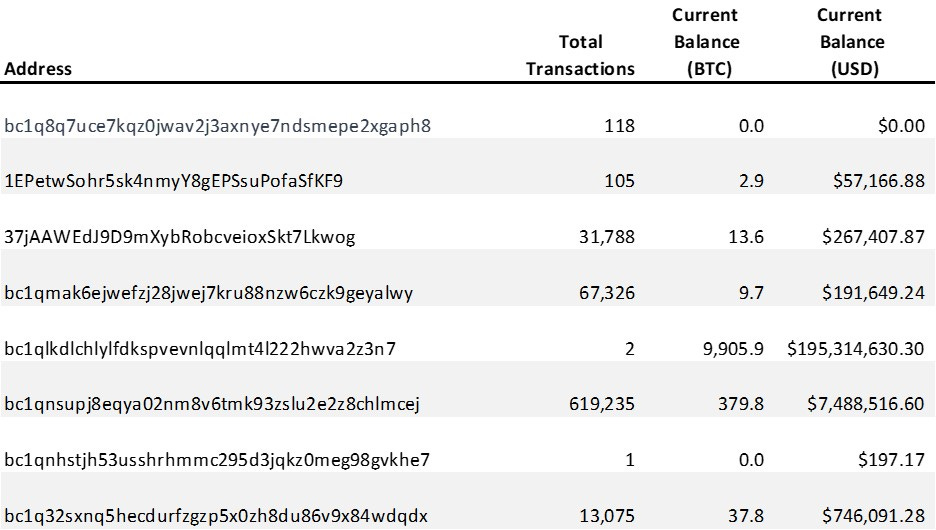
Unlike a traditional bank account, however, blockchains are distributed and decentralized:
Distributed: Instead of being hosted in a single location, they are hosted across thousands of individual computers located all over the globe
Decentralized: Blockchains are not controlled by any one party
Let’s take a look at each of these concepts…
How is a Blockchain Distributed?
Unlike traditional databases that live in a geographically centralized “server farms” (such as the ones owned by Amazon or Google), decentralized ledgers are hosted across thousands of individual computers located all over the globe.
These computers are called “nodes”, and they each contain an identical copy of the account balances and transaction history of a blockchain’s database.
Decentralized Ledgers are Distributed Across Thousands of Individual Computers
This distribution is very important because it means that: 1) it’s almost impossible for a third party to turn them off, 2) they are extremely resilient to hardware failures and 3) practically speaking, a distributed architecture is needed to design a decentralized system.
How is a Blockchain Decentralized?
Traditional banks have always been trusted to protect consumer’s assets.
In the old world they did this by storing money in secure vaults and defending it with armed guards. In the information age – where over 92% of money exists only in digital form – they do this with an army of accountants, auditors and cybersecurity experts. These professionals monitor accounts, check for fraud and assure that no one hacks the system and manipulates account balances.
Unlike traditional bank accounts, blockchains can’t rely on an in-house staff to safeguard a user’s assets and assure that no one tampers with the balances. Instead, they rely on a process known as “hashing” to protect the books.
To initiate the hashing process, blockchains organize all incoming transactions into groups known as “blocks”. These blocks have a limited storage capacity, so when they become full, they are locked and linked to the previous block with a “hash”. This forms a chain – hence the name, blockchain.
These hashes are extremely important because they make blockchains immutable – that is, data (such as your Bitcoin or Ethereum balance) can’t be deleted, tampered with or changed once it is locked into the chain.
This is due to the unique properties of hashing, a cryptographic process that takes a given set of information and converts it into a unique code. For example, the word “fox” could be hashed as DFTY786DCFJ894SUSH865AAHJAI978 and the sentence “the quick brown fox jumps over the lazy dog” could be hashed as SOIAUYA7865ASLUAN098A5489USYAN. There are three important things to note about hashes:
Virtually anything can be hashed (i.e. you can hash a word, a sentence or the entirety of War and Peace)
Hashes are always unique (i.e. if you changed a single letter in War and Peace you would get a completely different hash)
It’s impossible to guess the original data from looking at the hash (i.e. you wouldn’t know that DFTY786DCFJ894SUSH865AAHJAI9785 was “fox”)
Because all new blocks are required to store the hash of the previous block, it’s easy to see if the blockchain has been tampered with. If the hash contained in the new block matches the old, you know that the data is secure. If they are different, everyone will know that the block has been manipulated.
What is Digital Key Cryptography?
Digital keys are the “debit cards” of the blockchain ecosystem in that they allow a user to prove ownership, access their account and control their assets.
In reality, digital keys are nothing more than long strings of numbers (256 bits long for Bitcoin) that always come in pairs – a public key and a private key:
Public Key: A public key is similar to a bank account number as it serves as your address on a cryptocurrency network. For example, instead of recording that “Alice owns 2 BTCs”, the Bitcoin blockchain would record that “1BvBMSEYstWetqTFn5Au4m4GFg7xJaNVN2 owns 2 BTCs”
Private Key: A private key is similar to a secret PIN code that allows users to access and control this account
Every public key has only one private key, and – like a key and a lock – they are linked through cryptography. The important thing to note about this link is that it only flows one way. Although one can always access a public key with a private key, it’s mathematically impossible to do the reverse.
It’s Impossible to Decipher a Private Key from a Public Key
This one-way logic forms the basis of cryptocurrency transactions. For example:
To Receive Funds: In order to receive funds, a user would share his public key with the sender, who would deposit the money in that address. Because it’s impossible to decrypt a private key from the public key, this is completely safe (and necessary).
To Send Funds: In order to send funds, a user would use her private key to “unlock” her public key on the blockchain to authorize the transfer of the money. Again, because it’s mathematically impossible for anyone but the holder of the private key to do this, the blockchain can be sure that this person owns the funds.
In practice, users rarely see either their keys, as they are often stored inside digital wallets and managed by software (i.e. you just click buttons that say “send” and “sign” on a wallet such as Metamask and the application does the rest for you).
What is Consensus Mining?
Centralized networks, such as banks, have a small army of bookkeepers, accountants and auditors to process transactions.
While decentralized networks can’t rely on an in-house staff, they can leverage a distributed group of users known as “miners” for a similar purpose.
Miners are the de facto auditors of decentralized platforms. They are responsible for processing the output of transactions, confirming asset ownership, ensuring there is no fraud and updating the blockchain with the new results. Unlike auditors at a traditional bank, almost anyone can be a miner – there’s no hiring process, no location requirements and miners don’t even have to disclose their identity (in fact, most miners are completely anonymous).
As such, most decentralized platforms have thousands of miners located all over the world that can validate transactions.
While this seems like an elegant solution to the problem of centralization, it raises a few concerns. In particular: how can we trust the miners? How do we know that they won’t abuse their power and send a bunch of money to themselves or their friends?
The answer is surprisingly simple – we use economic incentives to reward good behavior and punish bad behavior.
While there are several incentive schemes, the most popular– used by both Bitcoin and Ethereum – is known as “Proof of Work”.
Overview of Proof of Work Mining
Proof of Work requires miners to solve an extremely difficult math problem to earn the right to validate new blocks. This problem is so difficult that it can only be solved by random guessing. As such, miners often employ dozens to hundreds to thousands of computers to make millions of guesses, hoping that one of them gets the correct answer.
This uses a lot of electricity, and therefore effectively costs miners a lot of money to “bid” on the right to validate transactions (it’s not uncommon for a miner to spend tens to hundreds of thousands on electricity costs before successfully mining a block).
Once a miner solves the puzzle, she will then update the blockchain with the new transactions and send it to the other miners on the network for approval.
If she did everything correctly, the network will accept the new block and she will receive a reward (the current rewards are ~$4K for mining an Ethereum block and ~$180K for mining a Bitcoin block).
If, however, she tries to cheat the system, it would be painfully obvious to everyone – the aforementioned hash would be broken and the new block wouldn’t connect to the old one. As such, the network will reject the new block, causing the miner to not only lose out on the rewards, but also waste money on electricity costs.
So, at the end of the day, the network is secured by economic incentives and game theory – a miner who acts appropriately could receive hundreds of thousands of dollars in rewards, while one who attempts to cheat the system will almost certainly be left with nothing but a huge electricity bill.
Note: Ethereum is switching to a different consensus mechanism – known as Proof-of-Stake – in mid-September 2022. You can learn more about Proof-of-Stake in the article: “The Complete Beginner's Guide to Smart Contract Platforms”.
How to Read a Decentralized Ledger
As discussed, one of the cool things about decentralized ledgers is that everyone can view every single transaction in real time. For instance, if you go to the Blockchain.com Bitcoin explorer, you will see all of the given transactions at any moment.
Transactions on the Bitcoin Network at 10:58PM on September 7th, 2022
If you click into any of these transactions, you will see details on who is sending the funds, how much they are sending and who is getting paid. Ledger provides a great graphic and writeup explaining this:
Details of a Specific Bitcoin Transaction

Let’s dig into each:
Transaction ID: The “hash” represents the unique ID of each transaction. You can always save this number to look up the specific details later
Sender: This shows the public address of the person sending the BTC and how much they are sending
Fees: Shows the fees associated with the transaction
Receipient: This shows the public address of the person or persons receiving the BTC and how much they are receiving. Note that there is a particular technical quirk of Bitcoin that requires them to send all of your Bitcoin everytime you make a transaction and then send the unused amount back to you. So if Alice had 10 BTC and wanted to send 1 BTC to Bob, she would actually send all 10 BTC out, 1 BTC would go to Bob and the remaining 9 BTC would go back to her.
Transaction Status: Transactions often take several minutes to clear, so this section will often read “unconfirmed” until the transfer goes through
While all blockchains have slightly different formats, virtually every one has a public “block explorer” where you can view the transaction history (e.g. Ethereum’s is at etherscan.io).
Again, the ability for anyone to do this is groundbreaking in that it allows us to create highly transparent organizations that greatly reduce corruption and fraud. Imagine, for instance, if we could see where every dollar our government spent went today!
Even today, authorites are using these public block explorers to track (and often recover) stolen funds from cryptocurrency hacks.
What are Smart Contract Platforms?
Smart contracts codify and enforce the “laws” of a decentralized economy.
Introduced with the launch of Ethereum in 2015, they represent a significant advancement in decentralized ledger technology.
The first blockchains – such as Bitcoin – required users to manually perform all transactions. For instance, if Alice made a loan to Bob in Bitcoin, Bob would still have to manually access his wallet each month to send Alice the interest payments.
Smart contracts – digital agreements that execute automatically when pre-determined conditions are met – expand on the original idea of Bitcoin by creating a form of “programmable” money.
For example, one could program a smart contract to make recurring interest payments on outstanding debt, pay an employee each time she launched a new product or feature or honor a farmer’s drought insurance claim if the temperature exceeded a certain threshold.
Unlike traditional contracts, smart contracts don’t rely on corporations, banks, lawyers, courts or local laws to guarantee their enforcement. Instead, users trust the technology and its pre-programmed code to automatically execute when they’ve upheld their end of the deal.
Smart Contracts Don’t Need Lawyers, Brokers, Banks, Courts or Governments
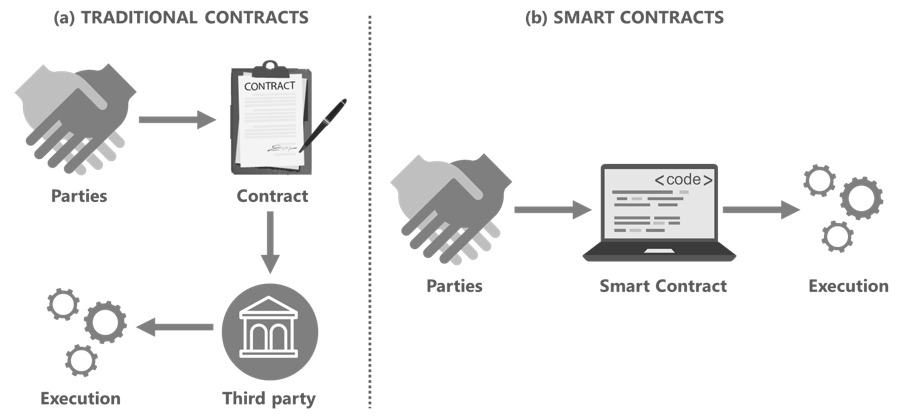
Despite the fancy name, smart contracts are just software programs – snippets of code that execute a series of programmed instructions. As such, they aren’t limited to financial transactions or even “contracts” in the traditional sense.
As such, when combined with decentralized ledgers, smart contacts can form fully functional, decentralized computers known as “smart contract platforms” (or “Layer 1 protocols”).
These computers serve as the foundation of Web3. They set the rules for the ecosystem and allow users to create, store and trade cryptocurrencies and digital assets such as NFTs. Much like a traditional computer can host apps such as Airbnb, Uber, Facebook, Tinder and Netflix, smart contract platforms such as Ethereum can host a variety of decentralized applications such as Uniswap (cryptocurrency trading), Aave (lending), LooksRare (NFT creation and trading), Axie Infinity (a blockchain-based game) and can even be used to run entire decentralized businesses known as DAOs.
Smart Contract Platforms are Computers That Can Run a Variety of Decentralized Applications
Unlike conventional computer networks – which are run by centralized third-parties such as Facebook, Microsoft or Google – these platforms retain the same benefits of Bitcoin in that they are 1) distributed (i.e. simultaneously hosted by thousands of different computers all over the world) and 2) decentralized (i.e. not controlled by a single entity).
This gives smart contract platforms several unique benefits, including the fact that they are:
Democratic: No single party can control the network and tell users what they can and cannot do
Open to Everyone: You don’t need permission to use smart contracts and you can’t be blocked – anyone with an internet connection can access them at any time and from any location
Permanent: Because they are hosted on thousands of nodes scattered across the globe, no one can ever turn them off or shut them down
Immutable: Data recorded on a smart contract platform is permanent, and can never be changed or manipulated
Transparent: Everyone can see every transaction on a smart contract platform and easily audit things when necessary
Secure: Information is stored on a decentralized and distributed blockchain, meaning that no one can manipulate the data and there is no risk of information loss
Perhaps most importantly, smart contract platforms give us the ability to create truly autonomous digital nations.
Because they use decentralized ledger technology to store their own funds and smart contracts to enforce their own laws, smart contract platforms don’t need to rely on traditional intermediaries such as banks or courts. As such, they can largely operate outside of the purview of the existing financial and legal ecosystem, allowing them to eliminate many of the costs, restrictions and regulations imposed on conventional networks.
Indeed, as they like to say in cryptoland – “code is law”.
NFTs (Non-Fungible Tokens)
Non-fungible tokens function as the goods of a decentralized economy.
While the term can sound confusing, one of the easiest ways to visualize an NFT is as a digital “record of ownership”. In many ways it’s like the deed to a house, a car’s title or an artwork’s certificate of authenticity.
Instead of a physical piece of paper you can hold, however, this “certificate” is recorded on a blockchain, where it is linked to your digital address. This not only guarantees the legitimacy of the asset, but also proves that you own it.
Like real-world assets, NFTs can be bought, sold, traded and consumed via smart contract platforms.
An NFT is a Digital Certificate of Ownership for an Asset that is Secured by a Blockchain
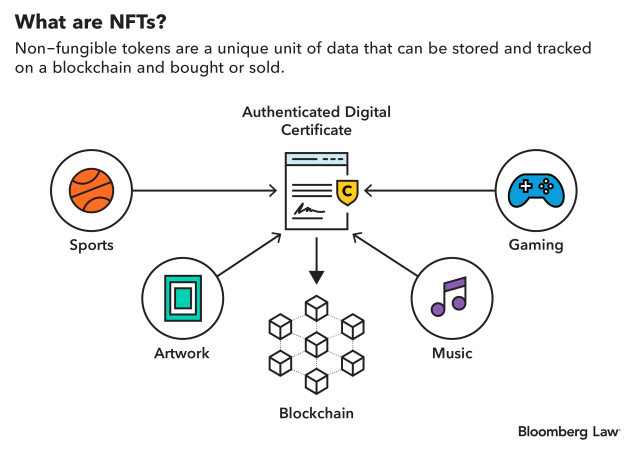
NFTs can represent digital assets such as virtual land, music, digital art, games or software; tangible assets such as oil, real-estate or gold; or intangible assets such as ownership stakes, voting rights, content licensing or membership privileges. In fact, virtually any asset can be represented as an NFT as long as it is ownable and has value.
Each and every NFT is unique – in fact, the term “non-fungible” is just a fancy way of saying “unique” – and they run on the same underlying technology that powers traditional tokens such as Bitcoin and Ethereum. This gives them three important properties:
Proof of Authenticity: NFTs use cryptography to prove their authenticity. As such, they cannot be counterfeited and it is relatively simple to spot a fake NFT
Record of Ownership: They maintain a record of ownership on a blockchain, which cannot be altered, destroyed, removed or confiscated
Inalienable Rights: Owners can often do anything they want with their NFT – they can sell it, rent it, license it and / or create derivatives works
While the idea of digital goods is not new, NFTs are transformative because they completely change the underlying economic foundation of the internet.
Historically, most digital goods have been owned by centralized third parties such as Apple, Amazon, Facebook, Google and Microsoft and “rented“ to consumers.
For example, if you bought an in-game asset (such as the ultra-rare, $16,000, Dragon Slaying Sabre in the game Age of Wulin), you would need permission from the developer to sell it and you likely wouldn’t be able to transfer it to other games. In addition, the gaming studio could easily choose to arbitrarily restrict access to your items and / or decide to charge you enormous fees.
NFTs change the game because – for the first time in history – they allow consumers to truly own their digital goods. This eliminates the need for centralized third-parties and provides substantial benefits to all stakeholders.
The Web3 Ecosystem
As discussed, Web3 uses blockchain technology to create fully autonomous digital nations that can operate outside of the purview of the existing financial, legal and even political ecosystems.
Each of these nations have their own:
Money: Cryptocurrencies are the native currency of a digital nation. To paraphrase Abraham Lincoln, they are the money “of the people, by the people and for the people” as they can’t be seized, restricted or regulated by the government. To learn more about cryptocurrencies check out “The Complete Beginner’s Guide to Cryptocurrencies”
Financial Systems: DeFi forms the financial system of a digital nation. Decentralized banks can’t appropriate your assets, restrict or regulate your transactions, block you from becoming a customer, force you to share private data or charge outrageous fees. To learn more about DeFi check out “The Complete Beginner's Guide to DeFi”
Goods: NFTs are the native goods of a digital nation. They are the first and only virtual asset that can be truly owned by a consumer. Big Tech can’t confiscate your NFTs, dictate how you use them or charge you exorbitant prices for selling them. To learn more about NFTs check out “The Complete Beginner's Guide to NFTs”
Laws: Smart contract platforms create and enforce the laws of a digital nation. They are decentralized computers that aren’t controlled by governments, banks or corporations. Anyone can use them for any purpose and they can never be shut down or turned off. To learn more about smart contract platforms check out “The Complete Beginner's Guide to Smart Contract Platforms”
Corporations: DAOs are the “corporations” of a digital nation. Unlike a traditional corporation, no single person or group owns or controls a DAO and they largely operate outside of the purview of the existing financial and legal ecosystem. To learn more about DAOs check out “The Complete Beginner’s Guide to DAOs”
Web 3 Infrastructure
To understand how Web3 would work, we first need to understand how the internet works today.
Although the terms are often used interchangeably, the internet and web aren’t the same thing.
The internet is the physical infrastructure of computers and cables that powers the world wide web – a digital collection of webpages and apps that lives on this network.
In 2006, the late Sen. Ted Stevens was relentlessly mocked for saying that “the internet is a series of tubes”.
Ironically, Stevens was kind of right. At its core, the internet is nothing more than a collection of computers that are connected to each other through a global network of “tubes” (aka “wires”). In fact, that’s where the word comes from – interconnected networks.
These connections allow computers to “talk” to each other to do things such as 1) send an email, 2) get a website or 3) buy goods and services.
To understand how a decentralized internet works, let’s take a journey though the evolution of these computers and wires.
Pre-Web
The internet was originally created by the United States Department of Defense as a messaging system that could withstand a first-strike nuclear attack.
The first versions, known as ARPANET, were decentralized – they were little more than groups of computers (fewer than 100 for most of the 70s) directly connected to one another through telephone lines.
The Internet in 1972 Connected a Handful of Computers Through Telephone Lines
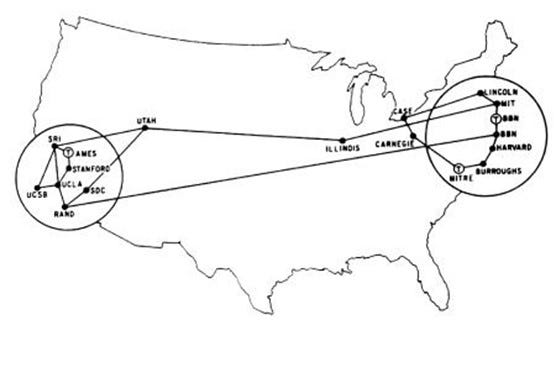
While telephone lines proved sufficient for the early internet, they soon ran into problems.
Because computers think and communicate in 1s and 0s – a language called “binary” – all information is sent across the internet in this format. Each one or zero is called a “bit”, and 8 bits make up a “byte”. For example, in computer language the word “cat” translates to “01100011 01100001 01110100”, while a picture of a cat could contain millions of 1s and 0s.
These 1s and 0s can be transferred over a standard telephone line by transmitting alternating electrical pulses (1 if the pulse is on and 0 if it is off), but it’s not very efficient. Commonly known as “Dial-Up”, these networks were limited to 56 kilobytes per second (at that rate it would take over a minute to download a modern iPhone photo and 8 days to download a 4K movie).
As such, the infrastructure eventually expanded into new mediums with much faster speeds, including:
DSL (100 Mbps): DSL also transmits electrical pulses through existing copper phone wires, but it travels over previously unused frequency ranges, making it much faster than Dial-Up
Cable (1 Gbps): Cable companies can transmit electrical pulses through the same coaxial cables used to provide TV services
Fiber Optic (5 Gbps): Fiber optic cables use alternating pulses of light to represent 1s and 0s (light on for 1; light off for 0). They are the preferred medium for long-distance transmission, and 99% of international traffic is carried over fiber optic cables (most of them undersea)
Wi-Fi (100 Mbs – 1 Gbps): The internet also uses “Wi-Fi”, a wireless network that uses radio waves. By adjusting the frequency of these waves, networks also use the binary formula, sending one type of wave to represent a “1” and another to represent a “0”. Your smart phone is actually a radio!
Satellite (100 Mbps): Radio waves can also be used to send data to and from existing satellites
These evolutions increased the efficiency of the network and allowed for the creation of new paradigms such as the world wide web.
Web 1.0
For decades, the internet was primarily used as a messaging device. From the time the first email was sent in 1971 until the early 1990s, the vast majority of the internet’s traffic was text based and largely used for academic purposes.
This all changed when Tim Berners-Lee’s invented the world wide web.
As the name suggests, the world wide web introduced the first websites to the internet in 1991. Over the next few years, thousands of pages were created that provided users with an alluring medium that allowed for the transmission of pictures, videos and audio. This effectively opened up the internet to everyday users, ushering in a new era of global communication and knowledge sharing.
Netscape Navigator was one of the First Web Browsers
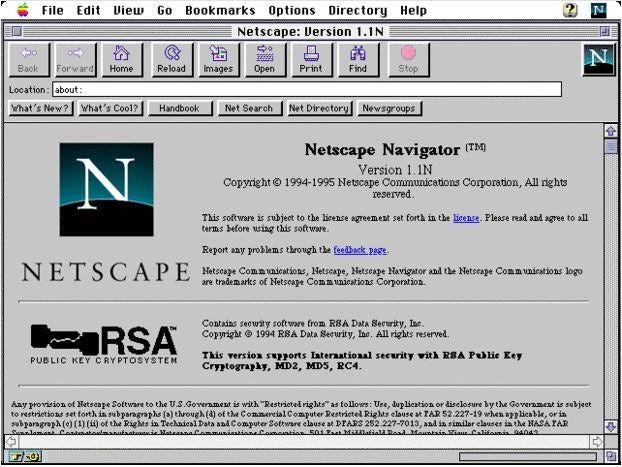
The web functioned by linking an interconnected system of webpages through a communication protocol known as the HyperText Transfer Protocol (or HTTP). HTTP creates a set of rules that allow individual computers to request and receive information from websites through a schema known as the client-server-database architecture.
HTTP Allows Individual Computers to Talk to Websites
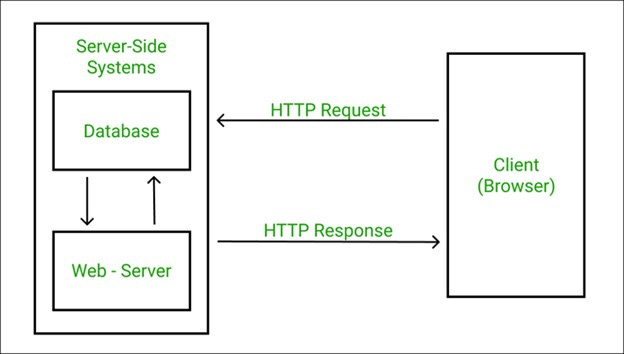
As the name suggests, there are three key players in this system:
Clients: Clients are individually owned devices, such as personal computers, laptops, tablets or smart phones. Although they do have limited computing power, their primary function is to receive data and present it in a graphically pleasing format to the user (such as a website). Most websites are viewed through browsers (e.g. Google Chrome, Firefox or Safari) which are responsible for sending data requests to servers (and also responsible for receiving the data that is sent back).
Servers: Servers are large computers that have two primary functions: 1) they route data from client requests to the applicable database (and back again) and 2) they perform the complex logical operations that determine what data to show you on YouTube or Facebook.
Databases: Databases store data, which can be anything from photos on Facebook, to credit card number, to health records, to bank account information, to your personal shopping history on Amazon.
So when you want to access a website: your computer sends a request to a server to get information, the server forwards that request to a database, the database gathers the applicable content (e.g. text, videos, photos, comments, posts, tags, likes, etc..) and sends it back to the server, the server transfers it to your browser, and then your browser organizes everything into a visually pleasing format on your device. While this may seem complicated, it frequently happens in a fraction of a second (often literally at the speed of light).
Although revolutionary, the major problem with Web 1.0 was that the pages were “static” – like a newspaper or magazine, users could do little more than passively read what was displayed on the site.
Web 2.0
The next major innovation in the web occurred in the early 2000s with the introduction of interactive webpages.
These sites provided a richer experience, allowed users to interact through social media and encouraged user-generated content. Popular Web 2.0 sites include social networks (Facebook), video sharing sites (YouTube), blogs (Medium), wikis (Wikipedia), microblogging sites (Twitter), and web applications (Google Docs).
Web 2.0 – the “Interactive Web” – Evolved in the Early 2000s
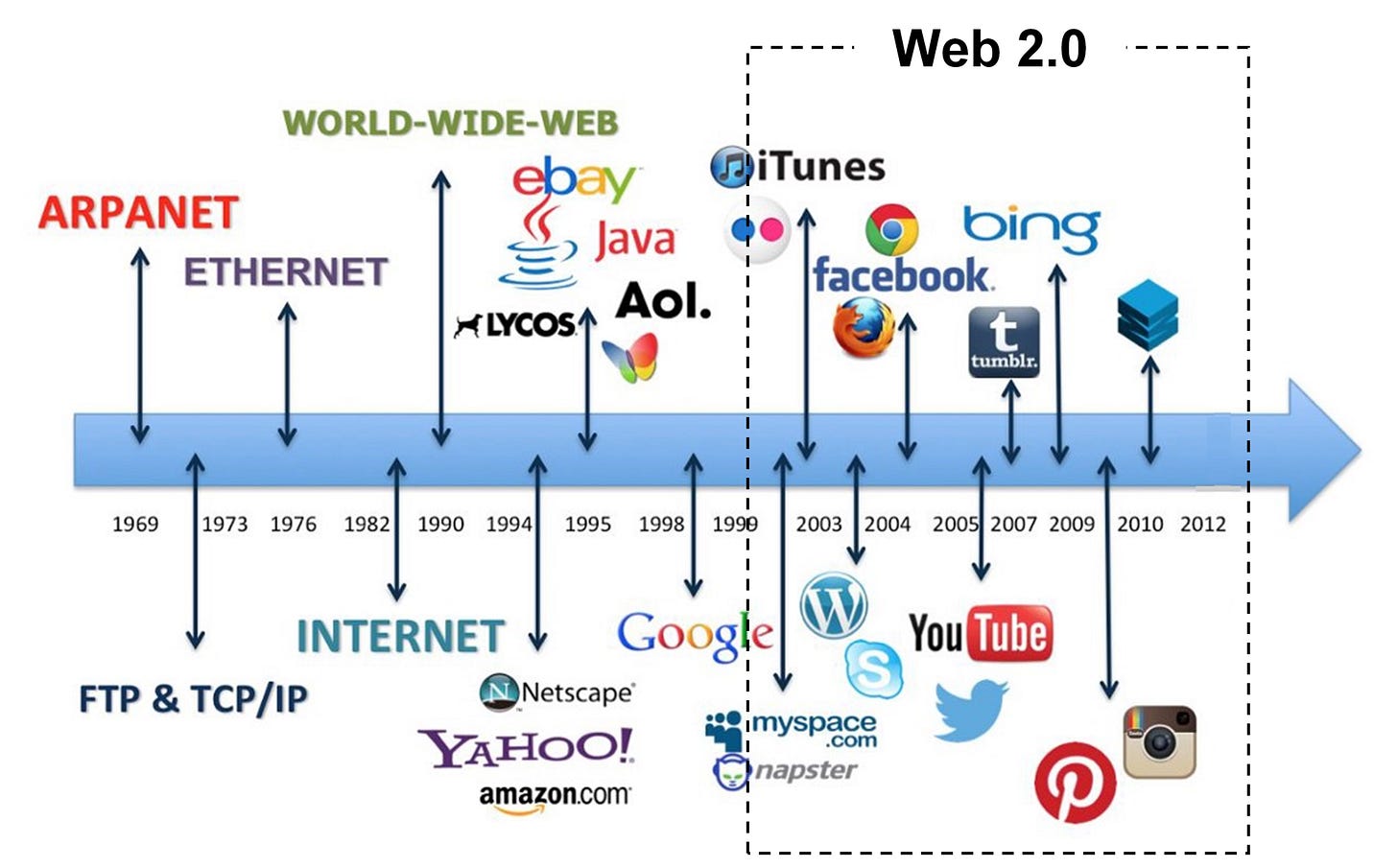
This new breed of website required a lot more storage and computing power to be successful and, as a result, we soon started to see the leaders in each of these categories – such as Facebook for social networking, Amazon for e-commerce, and Google’s YouTube for user-generated video – leverage economies of scale to break away from the pack and grab extraordinary market share.
Indeed, today it is estimated that four companies – Amazon, Microsoft, Google and Alibaba – own 67% of all major cloud servers and databases, and they hold many of them in a handful of locations known as hyperscale data centers (multi-hectare facilities designed to host thousands of “room-size” computers).
Map of Microsoft, Amazon and Google’s Data Centers
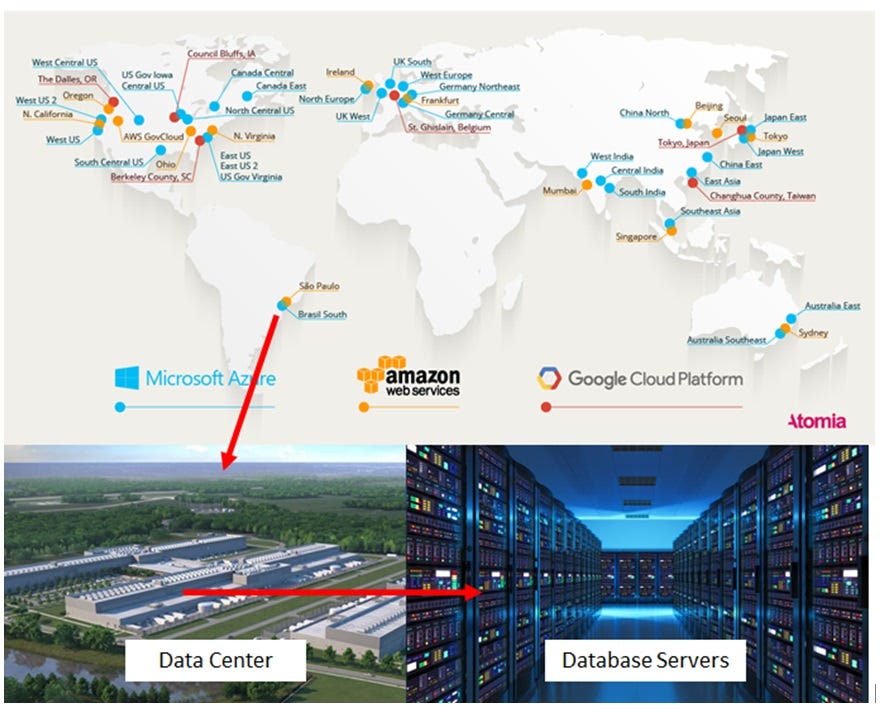
So in reality, the modern internet isn’t all that “global” as most of it is effectively stored in a few dozen locations owned by a small handful of companies.
Given that our modern economy runs off of data – we produce 28 trillion bytes every second – this should be a major cause for concern…
Web3
The next version of the internet will likely upend this structure. Instead of hosting most of the world’s data and computing power in centralized data centers, Web3 intends to “cut out the middleman” with two recent inventions:
Blockchains – decentralized databases which can replace traditional databases
Smart contracts – computer programs that can replace centralized servers
When combined, these two technologies are often referred to as “smart contract platforms” (for a much deeper dive on how smart contract platforms work, feel free to visit my writeup here: “The Complete Beginner's Guide to Smart Contract Platforms”)
This is revolutionary – for the first time in history, smart contract platforms give users full ownership and control of their data, content and assets. This means that no one can censor users, seize their assets, block their access, charge them outrageous prices for selling goods online or monetize their data without permission.
To borrow a phrase used by Messari’s Eshita Nandini – if Web 1.0 was the “read-only” web, and Web 2.0 was the “read-write” web, then Web3 is the “read-write-own” web.
Web3 Gives Users Full Ownership and Control of their Data, Content and Assets
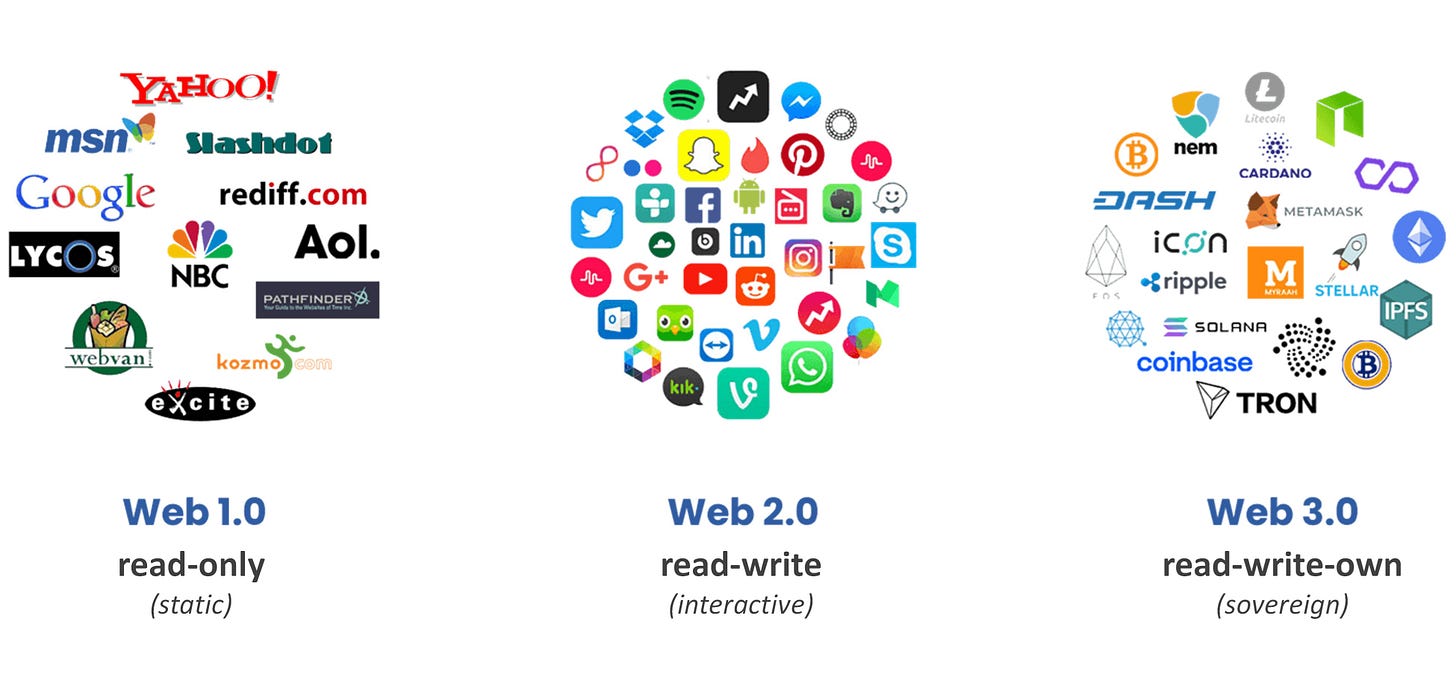
While the use of smart contract platforms is groundbreaking, they are not enough on their own to create truly a decentralized internet as they: i) need additional pieces of infrastructure such as wallets and node providers, ii) require the replacement of the traditional “wires” of the internet with a decentralized alternative and iii) still need databases, albeit in a slightly different way.
Although we are probably still some time off from realizing the vision of a fully decentralized web, we’ve made a lot of headway and are starting to get a sense of what the final product may shape up to look like:
Key Components of Web3 Infrastructure
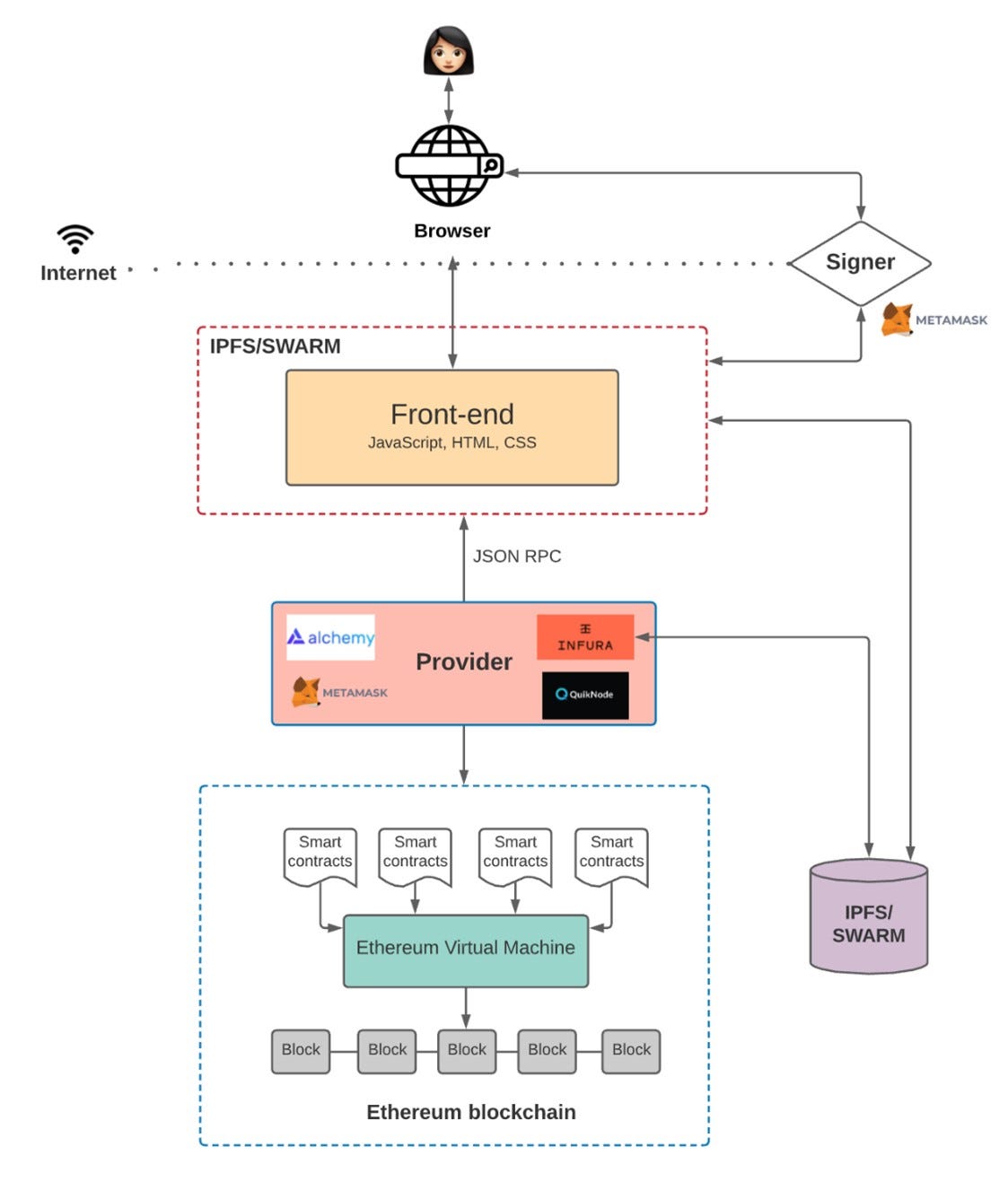
Although the user experience of a decentralized internet will likely stay more or less the same (i.e. users will still visit a website, click a few buttons and get the data they want), what’s going on in the background will be very different. In the next version of the internet, when a user wants to access data, she will likely follow the below roadmap:
Browser: The first step in the user journey will likely remain largely the same, with consumers accessing the internet through a browser (technically, we may all soon access it through virtual or augmented reality devices, but we’ll get to that in a second)
Wallet: Perhaps the biggest noticeable change for the user will be the addition of a digital wallet, which will replace emails and passwords as the primary means to sign into a website
Decentralized Internet: Once signed in, information could travel through the network over a decentralized internet service provider (ISP) such as Helium
Node Providers: In order to access a smart contract platform, users need to run a “node”. We’ll define what that means in a bit, but the key takeaway here is that running a node is challenging and, as such, most users will rely on third-party services known as node providers
Smart Contract Platforms: Smart contract platforms such as Ethereum will replace traditional servers and databases
Data Storage: There will still be a need for databases, but decentralized databases such as IFPS or Arweave will work a bit differently than databases today, connecting directly into the “front-end” and assuming more of a support role
In addition to the above, Web3 will require several tools designed exclusively for blockchains such as decentralized domain name servers, Layer 2 solutions, querying tools, oracles, bridges and decentralized computers.
In the interest of clarity, we won’t expand on these here but will instead dive deeper into them in the next section…
Virtual Worlds
What are Virtual Worlds?
Virtual worlds are online, immersive, 3D spaces that may replace the webpages of today as our primary means of accessing the internet.
Instead of simply logging on to a website and reading its content, users can explore these virtual worlds, interact with other users, create and trade digital goods, participate in meetings, attend events, play games and build in-world objects and landscapes.
Like the web of today, there will likely be thousands of virtual worlds, all intertwined in a network known as the “metaverse”.
Justin Bieber Hosting a Concert in the Metaverse
Virtual worlds often host their own self-sufficient economies which include:
Land which can be bought, sold, rented and developed
Digital Goods which can be consumed and traded
Native currencies to buy and sell goods and services
While companies such as Meta (formerly Facebook) are making a strong push into the space, there is a sizable constituency hoping to create a user-owned and decentralized metaverse through the use of NFTs to represent land and goods and cryptocurrencies as the native currency.
Zuck is Coming to Take Over the Metaverse…
Virtual worlds are becoming extremely popular. To date, users have spent nearly $2.5B on digital land and in-game items in the metaverse, and many researchers believe the space represents a multi-trillion dollar opportunity (with some projections ranging as high as $30 trillion!)
Virtual Worlds and Virtual, Augmented and Mixed Reality
Although many virtual worlds are currently PC and / or mobile-based, it is expected that most will transition to a blend of virtual, augmented and mixed (or merged) reality known as “extended reality”.
Extended Reality is a Blend of Virtual, Augmented and Merged Reality
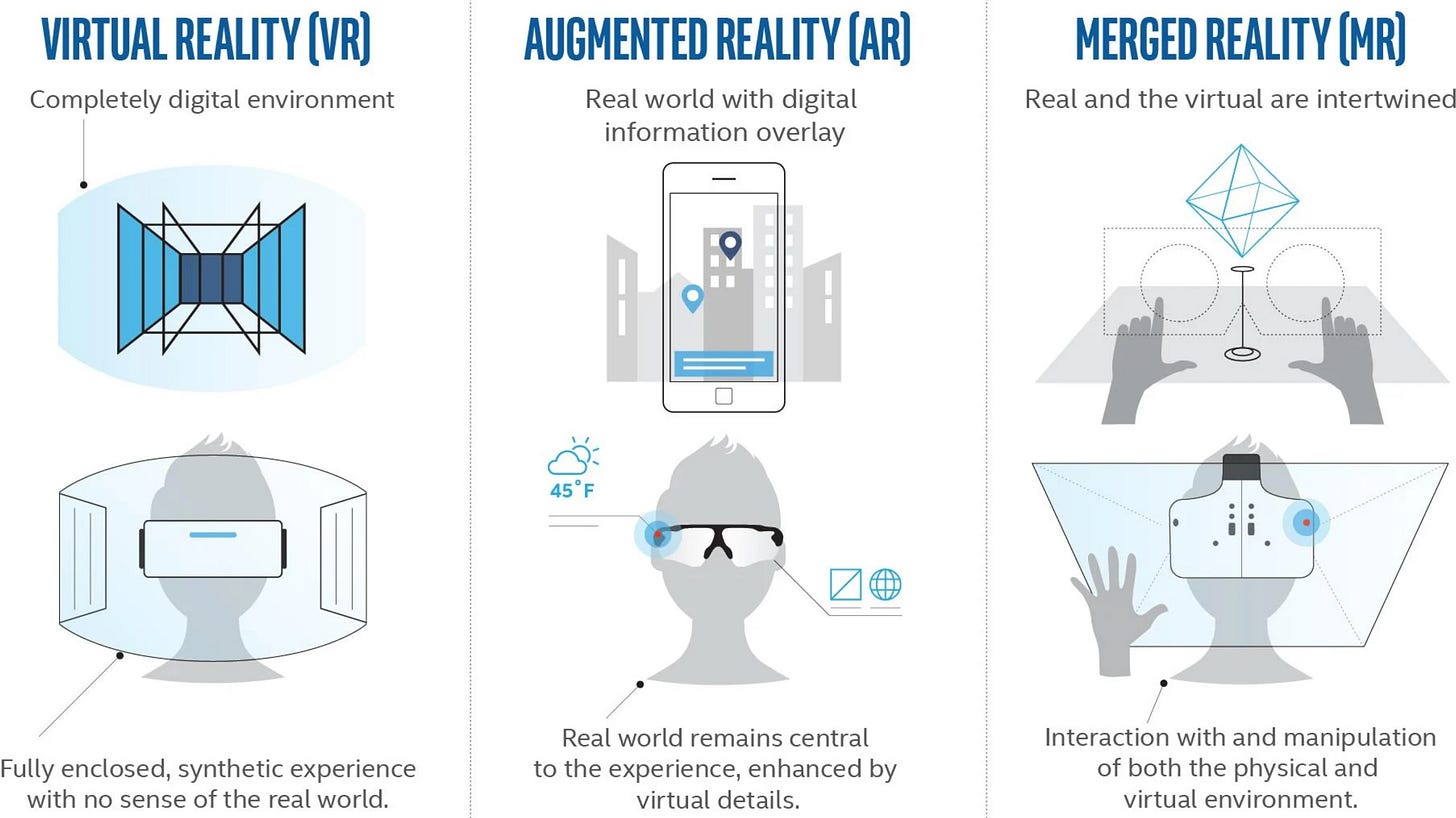
While closely related, it’s helpful to understand the difference between these three technologies:
Virtual reality (VR): a fully-immersive digital environment where the user is cut off from the outside world
Augmented reality (AR): an augmented representation of the real world that overlays virtual objects into our physical environment
Mixed Reality (MR): a medium combining VR and AR, allowing users to interact with both the physical and virtual world
This will create an experience that’s significantly more immersive than today’s internet. Instead of simply looking at a screen, users will feel like they are “in” the experience.
What are the Benefits of Decentralized Virtual Worlds?
Virtual worlds will offer numerous benefits to the consumer, including the ability to facilitate remote work, allow virtual doctor visits, create engaging and immersive games and generally just provide a “fantasy world” for us to escape reality and become anything we want to be.
One of the greatest threats to the metaverse is control by a digital monopoly. We have already seen the dangers of a centralized internet, and these threats have the potential to turn into a nightmare scenario as we move more of our lives online.
Indeed, if we aren’t careful, companies such as Facebook, Amazon, Microsoft, Apple, Google could gain even more power in the metaverse and form “digital dictatorships”, levying heavy taxes on usage and exercising absolute control over what we can and cannot do.
Fortunately, using blockchain technology, we can create a decentralized metaverse, where ownership remains with the community – creators, consumers and developers.
This would have several benefits including:
Fair economics: The Apple store currently charges participants up to a 30% tax on every sale. Eliminating the middleman would allow creators to sell directly to consumers without having to pay outrageous fees like these
Permission-less Access: Facebook notoriously shut down its most popular game Farmville over a disagreement in economics. Decentralized virtual worlds would eliminate this threat, as users can’t be banned or restricted access in any way, can’t be shut down and anyone can access them at any time
Reduced Censorship: Platforms such as Twitter have full control over the decision to ban or censor users, and unfortunately they are exercising this power more and more frequently. Decentralized worlds, by contrast, would eliminate censorship, allowing users to upload any content – no matter how controversial – to any platform they so choose
Interoperability: In their current form, virtual worlds are not interoperable – you can’t buy an item of clothing in The Sims and wear it in Second Life. An open metaverse, on the other hand, would allow users to freely transfer their virtual goods from one world to the next. For instance, if you bought a flaming sword in World of Warcraft, you could theoretically use it in Farmville (🤯)
How do Decentralized Virtual Worlds Work?
To understand how virtual worlds work, let’s look at one of the largest players – The Sandbox.
The Sandbox is a user-generated, 3D virtual world that allows users to own land, design characters and create and host their own play-to-earn games. While the project was originally created in 2012, it was acquired by Animoca Brands in 2018 for use as a blockchain-based gaming metaverse. The alpha version of The Sandbox was launch in late November 2021.
In many ways the platform functions like The Sims or Second Life, with one key difference – users maintain full ownership of their characters, land, games and virtual goods.
The Sandbox’s virtual economy is powered by several core tokens including:
SAND: The platform’s native in-game currency that is used for all transactions within the world
LAND: NFTs representing plots of digital real estate within the Sandbox Metaverse
ASSETS: NFTs representing digital goods such as characters, animals, vehicles, buildings, etc…
GAMES: Play-to-Earn games created and hosted by users
Core Tokens in The Sandbox

Let’s take a deeper look into each of these tokens…
SAND
The Sandbox’s virtual economy is powered by its native currency known as SAND. SAND is an ERC-20 token with a variety of uses, including:
Purchases: As the in-game currency for The Sandbox, SAND can be used to play games, purchase assets and land, customize and upgrade their characters, buy equipment, etc…
Staking: Holders can stake SAND to earn passive income
Governance: SAND also functions as a governance token, allowing users to vote on decisions impacting The Sandbox ecosystem
As of May 28th, 2022, there are currently 1.5 billion tokens available out of a maximum total supply of 3 billion. The current fully-diluted market capitalization of SAND is $2.9B.
LAND
The Sandbox contains NFTs representing 166,464 plots of LAND which can all be fully owned by users and traded much in the same way as physical real estate.
Developed Plot of Land in The Sandbox
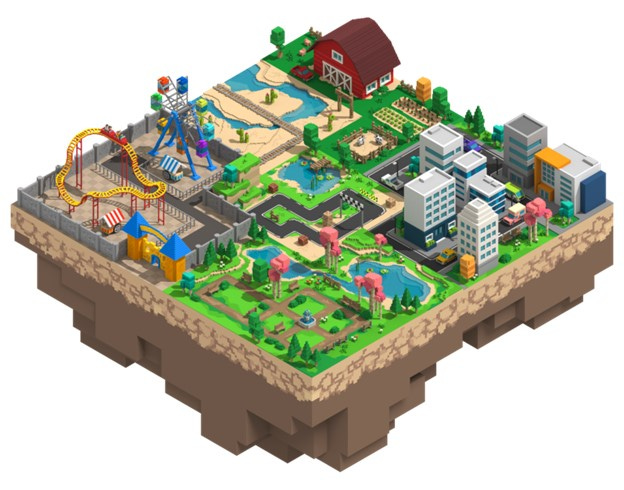
Like in the real world, owners can also build whatever they want on their property, and we have already seen several commercial enterprises created on the system, including:
Casinos: The Sandbox has several virtual casinos
Concert Venues: Warner Music Group is launching a metaverse concert hall in partnership with Snoop Dogg
Cultural Venues: Several Hong Kong investors have joined to build “Mega City”, a cultural hub showcasing art, film, music and gaming
Nightclubs: The Sandbox boasts several nightclubs
Retail Stores: Gucci purchased land in February 2022 to create an online store
Sports: HSBC recently bought a plot of land to construct a virtual sports stadium
Virtual Offices: The government of Dubai has purchased a plot of land in The Sandbox to build a virtual headquarters for its Virtual Assets Regulatory Authority
Multiple plots of LAND can also be combined to form ESTATES.
ASSETS
ASSETS are the native digital goods of The Sandbox. They can include anything that will populate the platform’s virtual world, including characters, equipment, outfits, buildings, etc…
Sample of Assets in The Sandbox
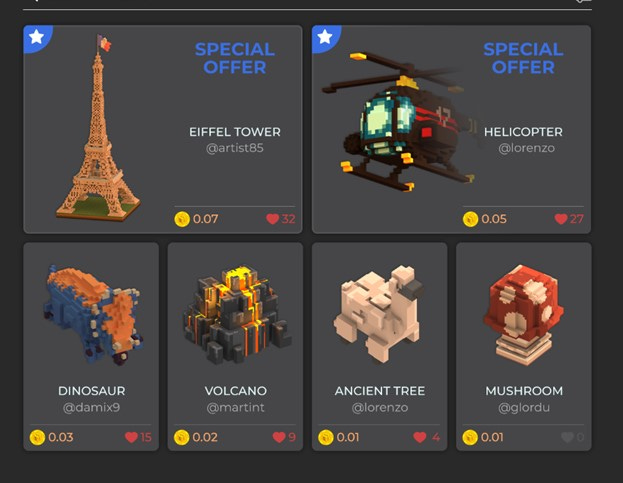
All ASSETS are represented as ERC-1155 (“semi-fungible”) tokens, allowing users to create unlimited copies of a given piece.
GAMES
One of the key features of The Sandbox is that it allows users to create and host 3D, play-to-earn games on LAND that they own (or rent). To create a game, users have access to three tools.
VoxEdit: A program that allows users to create 3D virtual assets to populate the game such as characters, animals, structures, foliage, etc…
Marketplace: A decentralized platform that allows creators to buy and sell existing assets for use in the game
Game Maker: A simple editor that allows users to create games without needing to know how to code
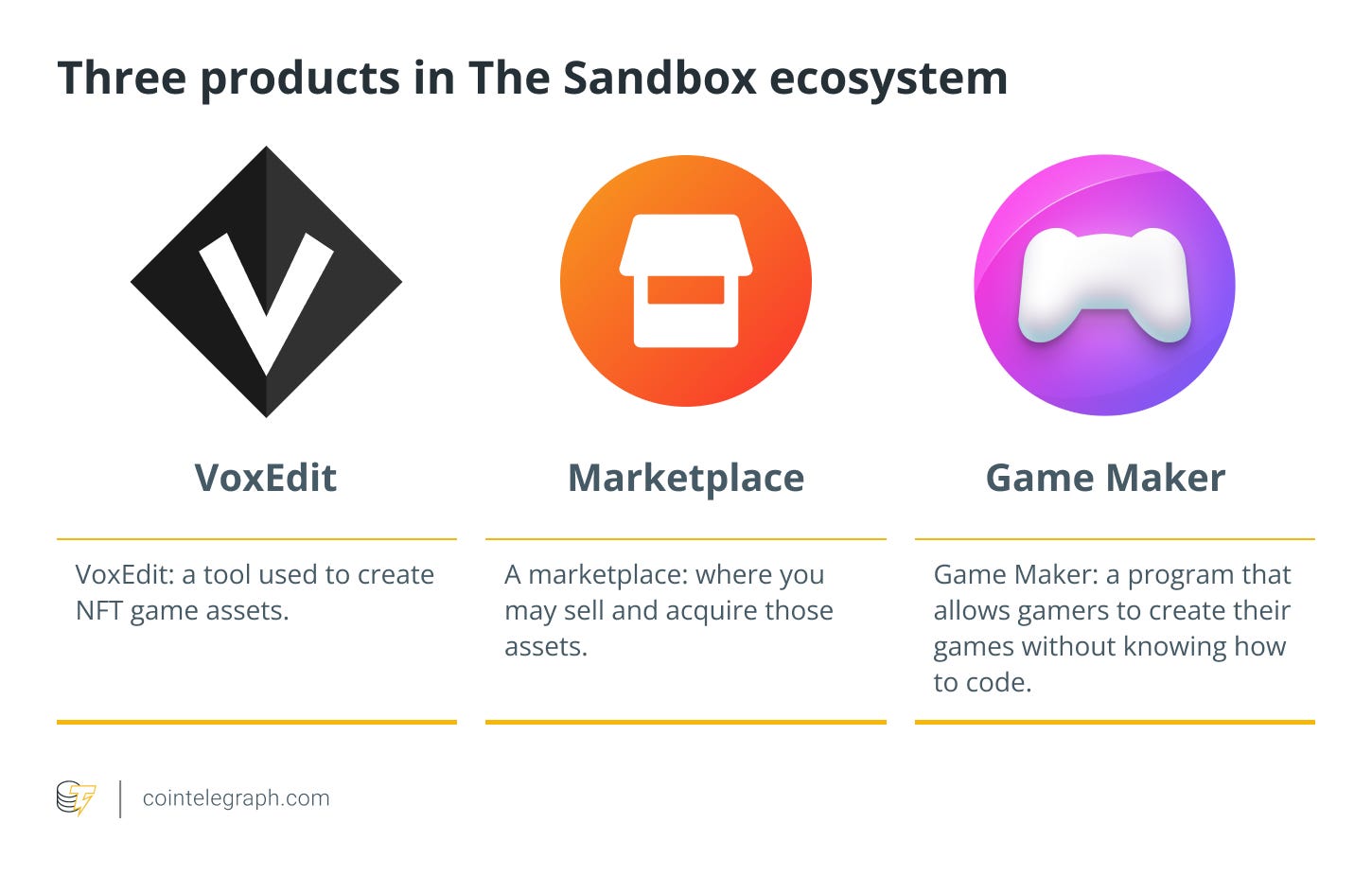
Once created, creators can invite other users to play the game and also monetize it in any way they see fit – they can charge other users to play, sell the NFT ASSETS required to play the game or even sell the game itself.
While some describe The Sandbox itself as a game, it is more accurately described as a collection of user-generated games.
Traction
Although activity has slowed in the bear market, The Sandbox has nonetheless achieved impressive traction, garnering nearly 3.5M users and generating over $500 million in sales volume to date.
In addition, the project has recorded over 165 high-profile partnerships with individuals and companies such as Snoop Dogg, Adidas, The Walking Dead, The Smurfs and Atari. The project recently raised $400M at a $4B valuation and notable investors include Softbank, Liberty City Ventures and Samsung Next.
Who are the Key Players in the Virtual World Ecosystem?
In addition to The Sandbox, there are several other notable projects include Otherside, Decentraland, NFT Worlds and NEO Tokyo.
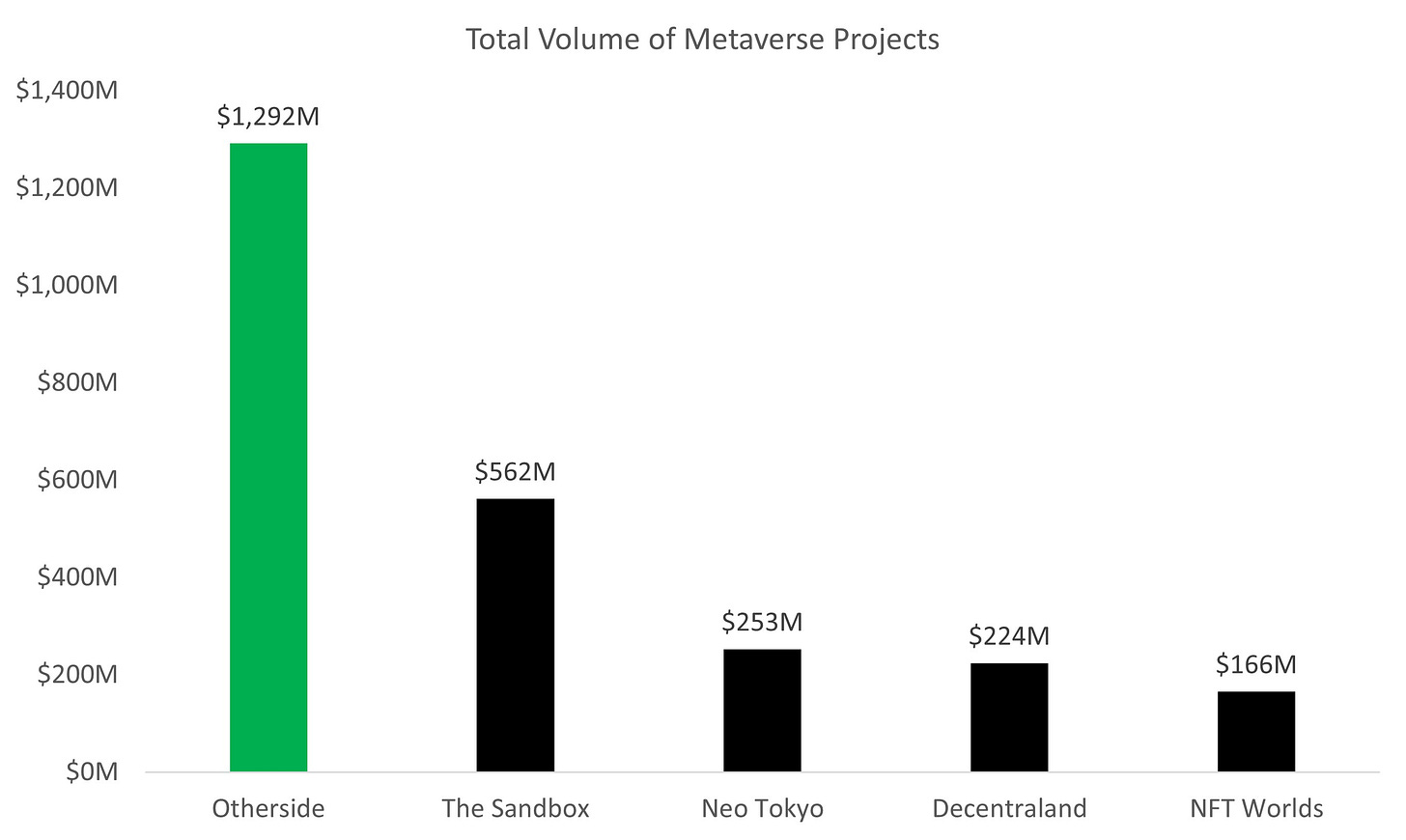
Wallets
Wallets serve as a user’s gateway to Web3.
The term itself is a bit of a misnomer, as they do so much more including:
Provide Access to Funds: As the name implies, wallets grant users access to their funds
Connect with dApps: In Web3, wallets replace passwords – once you connect to your wallet you can automatically use this to connect to any decentralized application (“dApp”)
Interact with dApps: Once you are on a dApp, wallets allow you to use your coins for a variety of purposes, such as spending them in games, staking them on a smart contract platform, buying NFTs, gambling with them, trading them on decentralized exchanges, etc…
To understand the importance of wallets better, let’s look at MetaMask, the most used wallet on the Ethereum network.
How do Wallets Work?
The most popular wallet is MetaMask, an Ethereum-based online – or “hot” – wallet. “Hot” wallets are always connected to the internet. While this makes them less secure, it also makes them much easier to use than “cold” wallets (such as Ledger Nano) which aren’t connected to the internet.
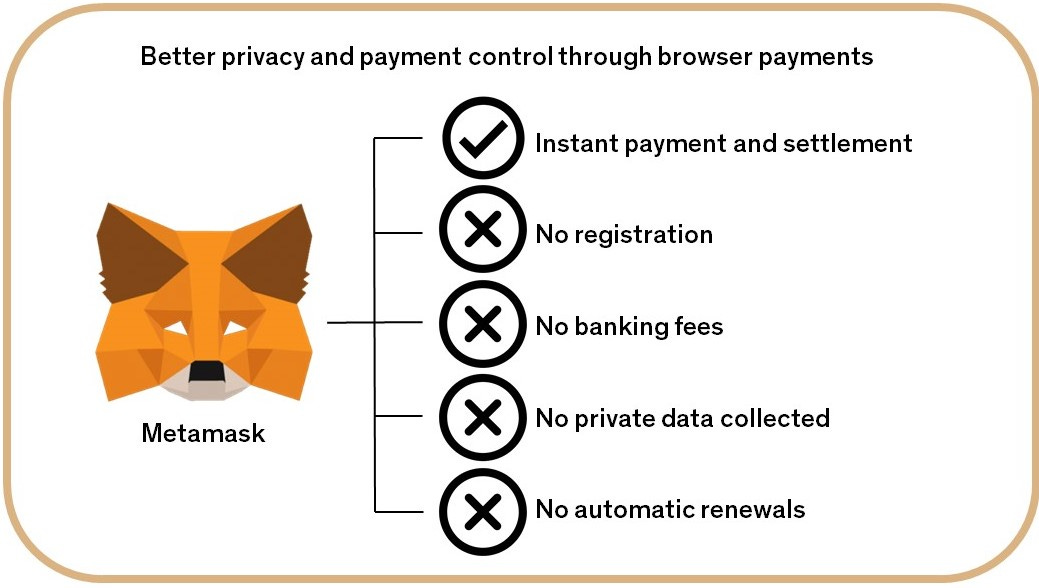
Metamask is free to use, easy to setup and – perhaps most importantly – is completely anonymous (all anyone will ever see is a number).
As discussed above, the product has three key functions. It serves as a wallet, a connection point and a Web3 “browser”.
1. Wallet
Like all crypto wallets, MetaMask does not hold cryptocurrencies (remember that they are stored on a blockchain), but instead holds a user’s private keys. The user maintains full control over these keys (and therefore their funds), and they can’t be forcibly confiscated by anyone (unless someone physically coerces you to give up your password).
Although MetaMask is closely connected to the Ethereum blockchain, it does not limit the wallet to hold Ether. The wallet can host a vast selection of different ETH-based currencies and tokens built using, for example, the ERC-20 and ERC-721 standards.
2. Connecting to dApps
One of the cool things about Web3 is that you don’t need passwords.
Once you are logged in, wallets such as MetaMask give you access to a variety of Web3 services – anything from DeFi exchanges to NFT marketplaces to online banks to games.
3. Interacting with dApps
Once connected to a dApp, users can spend their coins in games, stake tokens in gambling applications, make loans, etc…. For instance, through MetaMask, users can:
DeFi: Buy, sell, trade, stake, borrow or lend cryptocurrencies
NFTs: Buy, sell, trade, stake, borrow or lend NFTs
DAOs: Vote in DAOs
Web3: Play blockchain games, stream songs, purchase articles, etc…
Basically, you can do almost anything you can do on the internet with Metamask!
Key Players
Although MetaMask is the market leader, there are several popular crypto wallets including Rainbow, Wallet Connect (a software that connects cold wallets such as Ledger to dapps), Coinbase Wallet and Phantom (Solana’s most popular wallet).
Decentralized Domain Name Servers
What is the DNS?
Every device on the internet has a unique address – called an IP address – that helps other computers identify it. Unfortunately, this address is represented with a string of numbers such as “198.61.190.243”.
As you can imagine, human beings aren’t very good at remembering random strings of numbers, nor do they provide any context as to what’s on the site. That’s why the Domain Name System (DNS) was created – it serves as the “phonebook” of the Internet and translates IP addresses into human readable names.
For instance, let’s say you wanted to look up www.facebook.com.
Your computer would send a request for www.facebook.com to a DNS server
The DNS server would look up the name www.facebook.com, find its IP address and send it back to you
Your computer would then use this new IP address to make a request to directly to Facebook’s servers
Facebook would send the requested webpage back to your computer

The Domain Name System is not just one server, but instead a global collection of servers. That way, if one doesn’t know the address you’re looking for, it can route it to another one. This also provides redundancy in case a single server is attacked or goes down.
While the DNS is extremely important to the internet, it has one major flaw – it’s centralized. This creates numerous risks including the lack of privacy, the potential for censorship and security vulnerabilities.
As such, decentralized DNSs such as the Ethereum Name Service, aim to supplant this ~40 year old system and become the “phonebook” of the blockchain.
How do Decentralized DNS services work?
The Ethereum Name Service (ENS) is virtually identical to the internet's DNS system, in that it translates human-readable names into computer addresses
For instance, without ENS, if you wanted to pay your friend in cryptocurrency, you’d have to know the public address of her wallet, which might look something like “0x787192fc5378cc32aa956ddfdedbf26b24e8d78e40109add0eea2c1a012c3dec”. ENS allows users to create “nicknames” – such as “Alice.eth” – a and attach them to their wallet, allowing anyone to send any Ethereum enabled token to that address.
ENS operates using two main components, a main “registry” and a collection of “resolvers”. The registry contains all the “nicknames” (called domains) registered on the system and the address of their respective resolvers. The individual resolvers contain the information necessary to match each domain to its actual Ethereum address.
The ENS Registry Contains Individual Resolvers That Can Translate Each Domain
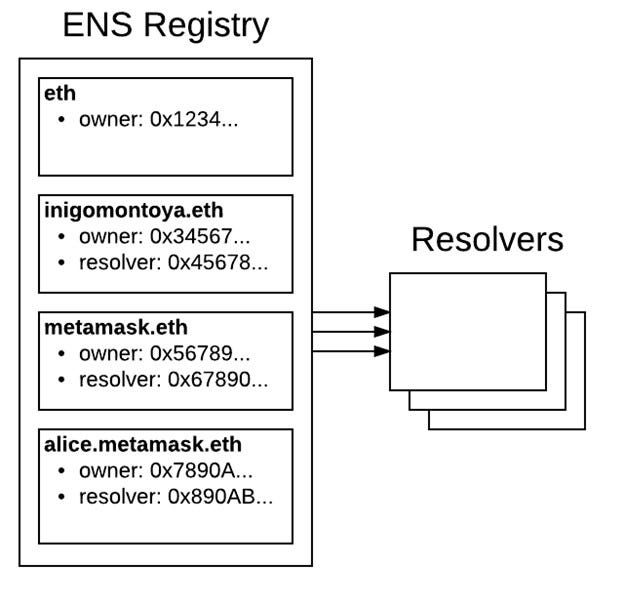
So if someone wanted to send 10 ETH to “alice.eth” using Metamask:
The user would open their Metamask wallet, hit the “send” button and add “alice.eth” as the recipient’s address
The system would then query the main registry to find out which resolver is responsible for “alice.eth”
The register would return the applicable resolver
The system would then query the resolver for the correct address, which would return “0x787192fc5378cc32aa956ddfdedbf26b24e8d78e40109add0eea2c1a012c3dec”
Metamask would then use this new address to complete the transaction
Like the DNS, this all occurs “under the hood”, so from a user perspective they simply type “alice.eth” in the address and the money is on its way.
While ENS originally only worked for .ens names, in late 2021, the protocol announced that it would also be integrating traditional domain names into the system. This opens up a world of potential as it makes it possible to register urls such as “alice.com” to a wallet and allow it to receive cryptocurrencies.
Key Players
Notable players in the decentralized DNS space include ENS, Unstoppable Domains, Bonfida, Handshake and Namecoin.
Decentralized Internet
How Does the Internet Work?
We discussed previously that information travels over the internet via wires (and sometimes via radio waves).
Map of all Major Internet Cables on Earth
These wires are owned by companies known as Internet Service Providers (ISPs) which are split into three levels, also known as “Tiers”:
Tier 1 - International: Tier 1 internet providers form the “backbone” of the internet. They are responsible for maintaining the high-speed cables that cross continents and major oceans. These providers do not deal directly with end users, and instead charge national and regional networks for carriage. Notable Tier 1 ISPs include AT&T, Verizon, China Telecom, PCCW, Singtel, NTT, Telstra, British Telecom and Deutsche Telekom.
Tier 2 – National and Regional: Tier 2 providers provide a bridge between the first and last mile. They pay Tier 1 networks for transit and sell transit to Tier 3 networks (and sometimes directly to large companies and governments). Major Tier 2 providers include Comcast, Virgin Media, Cox Communications and CTS Telecom
Tier 3 – Local: Tier 3 providers are responsible for connecting homes and small businesses to the internet. As such, they are often known as the “last mile”. The bulk of these connections run through the wires provided existing cable TV networks (although fiber optic service is growing)
As mentioned previously, the vast majority of global internet traffic is routed through a handful of Tier 1 providers. This presents several problems including: i) the ability to charge high premiums and extract monopolistic profits, ii) the power to block or censor traffic and iii) vulnerability to failures and outages (e.g. the entire island of Tonga lost its internet connection for over five weeks due to a damaged undersea cable) .
Decentralized ISPs, such as Helium, aim to fix this by allowing users to host their own internet access points.
How does a Decentralized Internet Work?
Helium is a decentralized wireless network powered by cryptocurrency. The company was founded in 2013 by Shawn Fanning of Napster, Amir Haleem, and Sean Carey, and is backed by a notable list of investors that includes Pantera Capital, Khosla Ventures and a16z.
Unlike traditional ISPs, transmission occurs over a global network of independently owned “hot spots” – small devices that can send data over long distances using radio frequencies. Owners can purchase these gadgets for around $500 and transmit the signal to nearby internet-enabled devices (this is similar to the Wi-Fi hotspot on your phone, but ~200x more powerful).
Helium has made significant progress to date and deployed nearly 1 million devices across 182 countries. This makes it the world’s largest user-owned wireless network.
The Helium Network Hosts Nearly 1 Million Hotspots Across 182 Countries
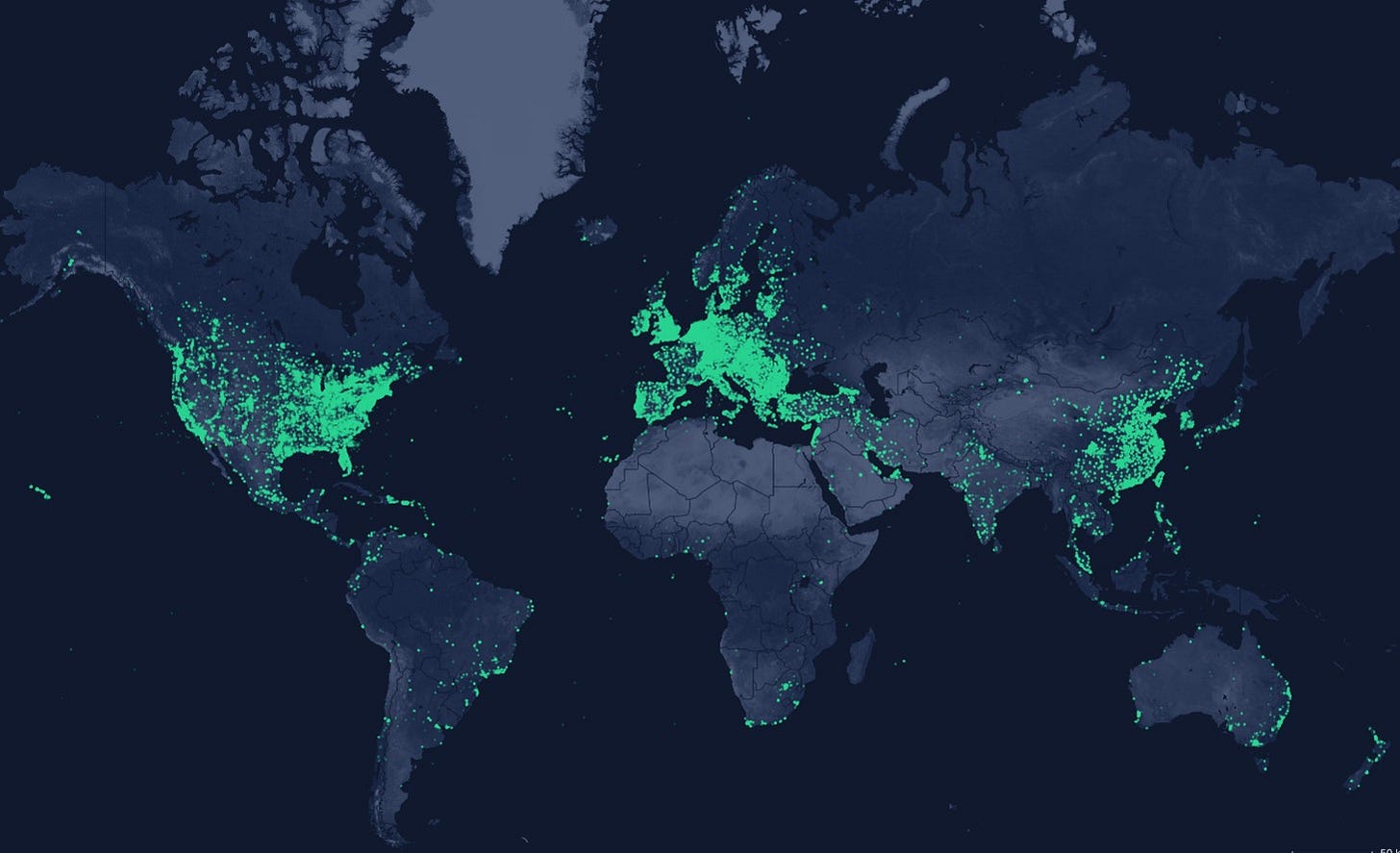
Although many have tried to disrupt the existing network of ISPs, Helium is the only company to make headway on this endeavor.
This is largely due to its novel use of cryptocurrencies as an incentivization mechanism. In exchange for hosting hotspots, Helium providers are rewarded with the project’s native coin, HNT. While earnings can vary greatly from user to user, some hosts have reported making upwards of $2,000 a month.
To ensure the stability of the network, the protocol uses a process known as “Proof-of-Coverage”, which randomly pings hotspots to verify that they are in the correct location and actively transmitting a signal.
Helium, also known as “the People’s Network”, eliminates many of the traditional concerns of centralized ISPs and may help:
Lower Fees: Transitioning from the current oligopoly of ISPs to a highly-competitive, decentralized network should significantly reduce prices in the long-run.
Eliminate Censorship: Anyone can use the Helium network, it can’t censor transactions and the network can’t be shut down by a third party
Reduce Failures and Outages: The use of multiple, overlapping hotspots reduces reliance on a single point and helps reduce the risk of outages
At the time of writing – September 12th, 2022 – Helium’s fully-diluted market cap is $1.2 billion.
Node Providers
What are Node Providers?
A “blockchain” is little more than a collection of computers – called “nodes” – that maintain an identical copy of a shared database. These nodes are responsible for hosting the blockchain, adding transactions and ensuring its security (and are often paid handsomely for this privilege).
Nodes are the only devices that can interact with a blockchain. That means if you want to use one, you must either:
Set up and run your own node
Connect to nodes provided by third-party services such as Alchemy or Infura
Most people lack the time, patience or technical knowledge to host their own node and, as such, the vast majority of users choose to use third-party providers (even as early as 2019, Infura was handling over 12 billion API requests per day).
Most Users Connect to Ethereum Network via a Third-Party Node Provider Such as Infura
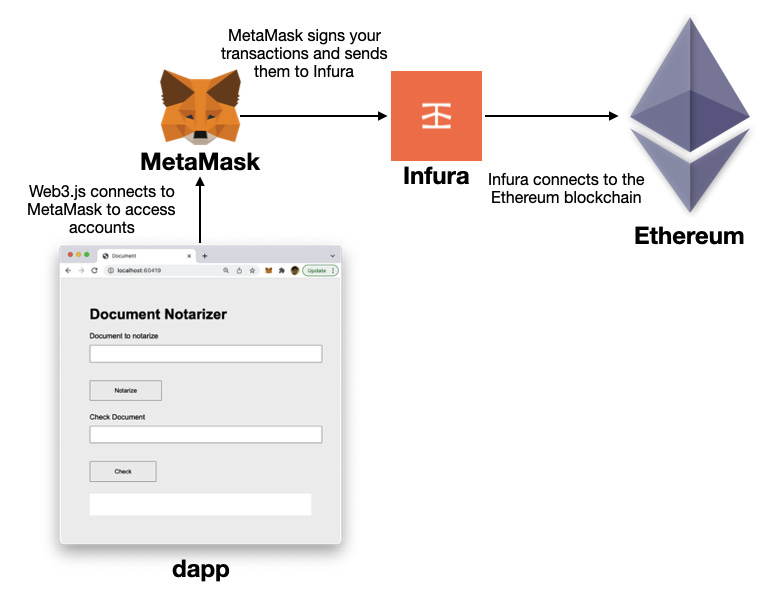
Unfortunately, most of these providers are centralized and, as such, are seen by many to be blockchain’s dirty little secret.
For instance, Infura is owned and operated by ConsenSys (the in-house development studio of Ethereum) and hosted on cloud services owned by Amazon. This creates several problems including:
High Costs: Infura’s entrenched position gives it significant negotiating power and allows it to charge prices that are often above market
Frequent Outages: Dependance on Infura represents a single point of failure for Ethereum and has resulted in several outages, including major ones in November 2020 and April 2022
Potential for Censorship: In an attempt to block two separatist regions of the Ukraine in March 2022, Infura accidentally restricted access for users in Venezuela
Even Michael Wuehler, the co-founder of Infura admits that “If every single dapp in the world is pointed to Infura, and we decided to turn that off, then we could, and the dapps would stop working.”
Fortunately, decentralized alternatives such as the Pocket Network are emerging to remove this chokepoint.
How do Decentralized Providers Work?
Founded in 2017 by Michael O’Rourke, the Pocket Network functions as a decentralized “marketplace” for nodes.
Instead of owning the nodes directly like Infura or Alchemy, the network simply connects users (Web3 applications that need to connect to public blockchains such as Ethereum, Solana or Polygon) with independent node providers (known as “Service Nodes” on the platform).
The Pocket Network is a Marketplace for Decentralized Nodes
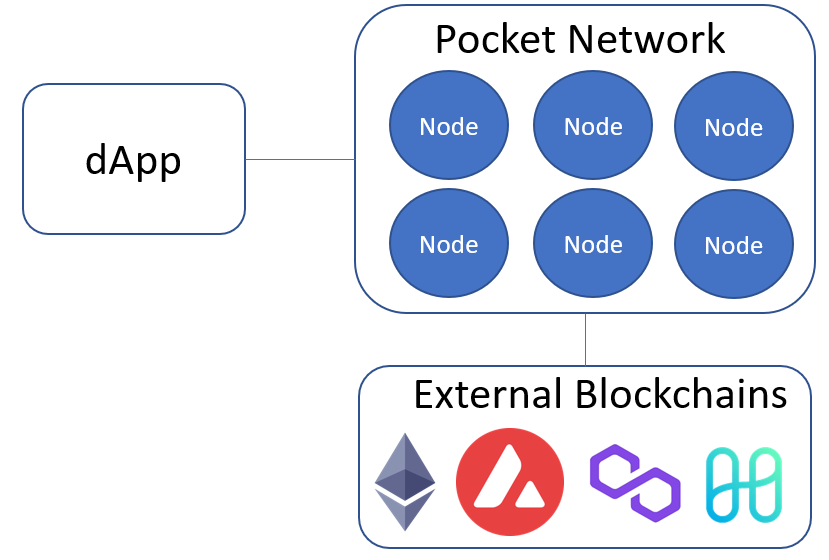
Pocket Network’s marketplace is driven by the platform’s native token, POKT. To use the service, both customers and Service Nodes must stake POKT as collateral. Once deposited:
Users can make a request to the Pocket Network to connect to a blockchain
Requests are routed through Pocket’s software, which connects users to a random Service Node. These nodes are rotated out every hour, and the network immediately replaces any node that crashes or goes offline
Service Nodes connect users to the blockchain of their choice and relay the appropriate data
Another set of nodes, known as Validator Nodes, verify the legitimacy of the work performed by the Service Nodes
If the transaction is legitimate, it is finalized, if not, the Service Node is heavily penalized and its collateral stake is slashed
Upon completion of the transaction, Pocket debits the payment from the user’s staked collateral and sends 89% to the Service Node, 1% to the Validator Node and keeps 10% for itself (via it’s user-owned PocketDAO).
Using Pocket offers several benefits to Web3 applications. In addition to being decentralized, it is often up to 10x cheaper than traditional providers, highly resistant to outages and it offers multichain support to over 50 networks including Ethereum, Solana, Polygon, BSC, Avalanche and NEAR.
As a result, the network has grown considerably over the last few years – it currently hosts nearly 50K nodes over 30 countries and performs over 6 billion relays per week.
Key Players
While not an exhaustive list, key players in the node provider market include:
Smart Contract Platforms (Layer 1s)
Smart contract platforms, also known as “Layer 1s”, serve as the foundation of Web3. They are the computers that set the rules for the ecosystem and allow users to create, store and trade cryptocurrencies and digital assets such as NFTs. Every time that you make a trade on Uniswap, lend money on Aave, mint an NFT on Opensea or vote in a DAO you need to use (and pay) a Layer 1 such as Ethereum.
Keeping with the ethos of Web3, smart contract platforms are decentralized and distributed, meaning that they aren’t controlled by any one party, they can never be shut down and anyone can use them at any time.
As of September 2022, the largest smart contract platforms by fully-diluted market capitalization are Ethereum, Binance Smart Chain, Cardano Solana and Avalanche.
Ethereum Leads the Market with over 55% of FD Market Cap
I won’t go into too much detail on smart contract platforms here but given their extreme importance, I’d highly recommend learning more via the article “The Complete Beginner's Guide to Smart Contract Platforms”, which dives into how they work, why they are important, who the key players are, how they stack up against one another and what’s next for the space.
Rollups (Layer 2s)
With the exception of Solana (which has its own challenges), most smart contract platforms are currently unable to handle the massive data and computational requirements that will be required for blockchain gaming, the metaverse and mass distribution of NFTs.
For instance, Ethereum can only handle around 25 transactions per second (vs. Visa’s 1,700) and the average fee for using Ethereum is ~$10 (and that’s the mean for all transactions – NFT transactions, which are generally much more complex, can often cost users several hundred dollars).
The most likely solution to these problems is the use of “Layer 2” networks – secondary protocols that are built on top of existing blockchains.
While there are many different types of Layer 2 solutions (these are discussed in much greater detail in the article “The Complete Beginner's Guide to Smart Contract Platforms”), one flavor that is showing extraordinary promise is rollups.
Rollups temporarily remove data from the underlying blockchain, perform computations on that data and then insert the results back into the chain. This removes a ton of congestion from the network and results in faster processing times and lower fees.
Because rollups execute off-chain, they can’t be fully trusted – after all, how do we know that the architects of the rollup aren’t being malicious? As such, they need a way to prove to the main network that they’re not being malicious. There are currently two different ways of doing this:
zk-rollups: When returning data to the main chain, zk-rollups submit a cryptographically secure "validity proof" to the network, showing that all calculations are valid. The mechanics of this proof are out of the scope of this article, but for reference it is called a “zero-knowledge proof” because it can be used to prove something is true without relaying any additional data (that’s where they get the name “zk”)
Optimistic rollups: Optimistic Rollups take the opposite approach. Instead of submitting a proof, it is assumed that the data is correct BUT users can easily check this through a "fraud proof", which means that there is a 7-14 day waiting period that allows validators to review and reverse the transaction if they suspect fraud.
In general, zK rollups are faster but offer less functionality, while optimistic rollups have more functionality but are also slower due to the potential of fraud challenges.
As zK rollups mature and more functionality is added, many expect for them to become the dominant L2 solution for ETH.
In fact, Vitalik wrote: “In general, my own view is that in the short term, optimistic rollups are likely to win out for general-purpose EVM computation and ZK rollups are likely to win out for simple payments, exchange and other application-specific use cases, but in the medium to long term ZK rollups will win out in all use cases as ZK-SNARK technology improves.”
Major optimistic rollup solutions include Optimism and Arbiritum and major zK- rollup projects include ZKSync, Loopring and Starkware.
Arbitrum is the Largest Rollup Provider with 52% Market Share
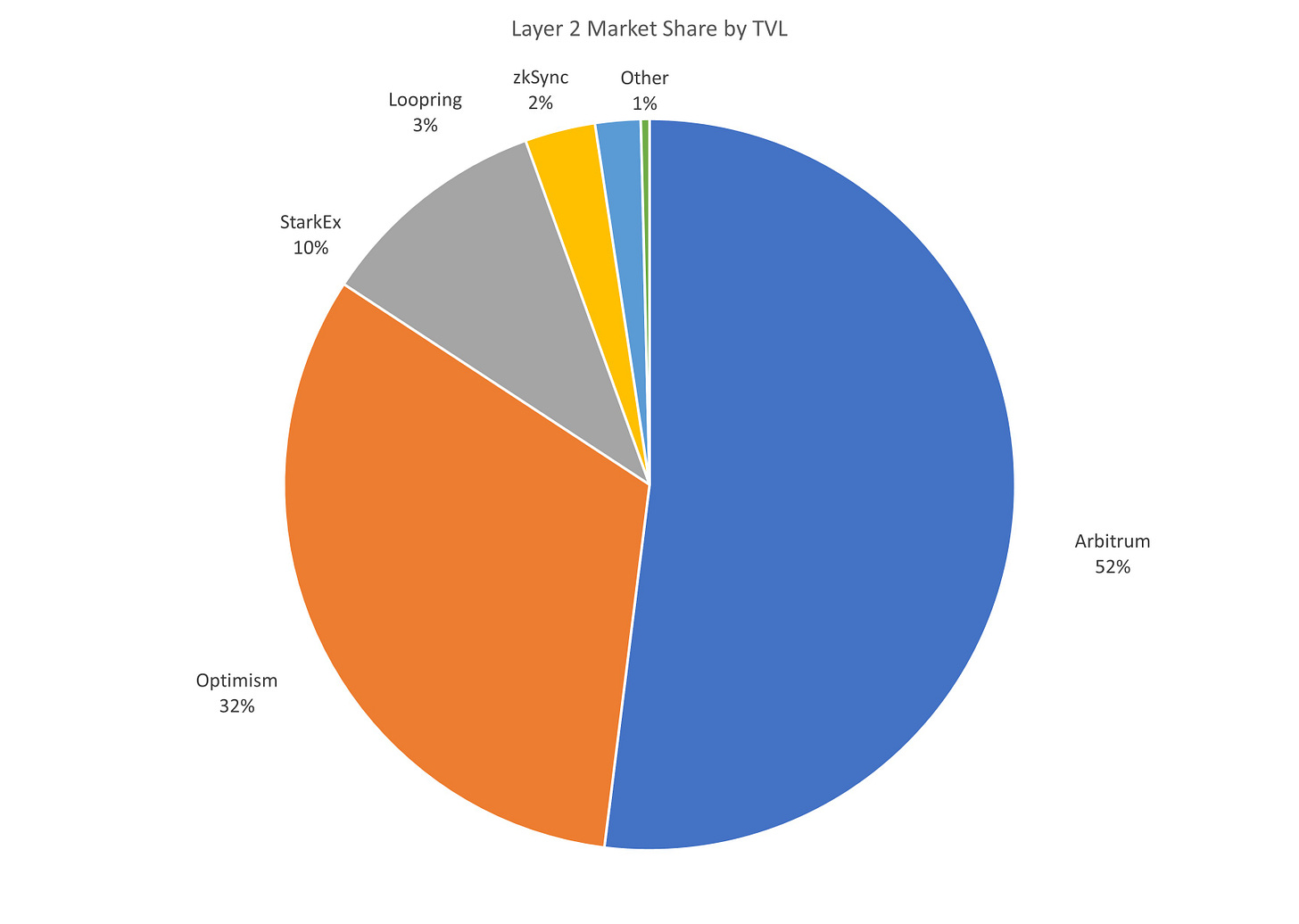
Data Storage
What is Data Storage?
Technically, blockchains are databases. But they aren’t very good databases as they can only hold small amounts of information. For instance, a recent study estimated that it costs $40K to store 1MB on the Ethereum network – that’s roughly 1/3rd of the size of the average photo taken by an iPhone!
As such, the images for most NFTs aren’t actually stored on a blockchain, only a URL that points to these images is. The actual .jpeg (image) file is stored on a third-party database.
To reduce concerns of centralization, we are now seeing the development of decentralized databases, which aim to preserve the integrity of NFTs by using the same underlying technology to split, encrypt and store data across multiple locations. This offers several benefits, including:
No Censorship: There’s no centralized third party that can remove your data or tell you what you can and can’t store
No Single Point of Failure: Because identical copies of your information is scattered and stored across multiple nodes, there is little chance of outages, data loss or distributed denial of service attacks (“DDoS” where malicious actors use bots to overload a site with traffic)
Lower Costs: Decentralized storage may ultimately turn out to be much cheaper and more efficient than our current “cloud” infrastructure
Two of the largest decentralized storage services are IFPS and Arweave.
How Does Decentralized Storage Work?:
To understand how decentralized storage works, let’s look at the largest player in the space – Filecoin.
Launched in 2017 by Stanford Computer Scientist Juan Benet and backed by Sequoia, Union Square Ventures and Digital Currency Group, Filecoin is a decentralized data storage network.
The protocol allows users to store data – such as NFTs, audio and video content, metaverse and gaming assets and even Web 2.0 data sets – on its IFPS network. IFPS is a global, peer-to-peer marketplace that relies on an independent network of miners to provide unused space on their hard drive to customers in need of storage.
To maintain the system, the project relies on an independent network of three different types of miners:
Storage Miners: Storage Miners lend their unused hard drive space to store customer data. In return, they are paid in Filecoin’s native token, FIL. To ensure security, the platform breaks down customer data into fragments and stores them across the network
Retrieval Miners: Customers pay Retrieval Miners a fee in FIL to fetch their data for them (to be implemented)
Repair Miners: Repair Miners are responsible for the maintenance and health of the network (to be implemented)
Overview of the Filecoin Ecosystem
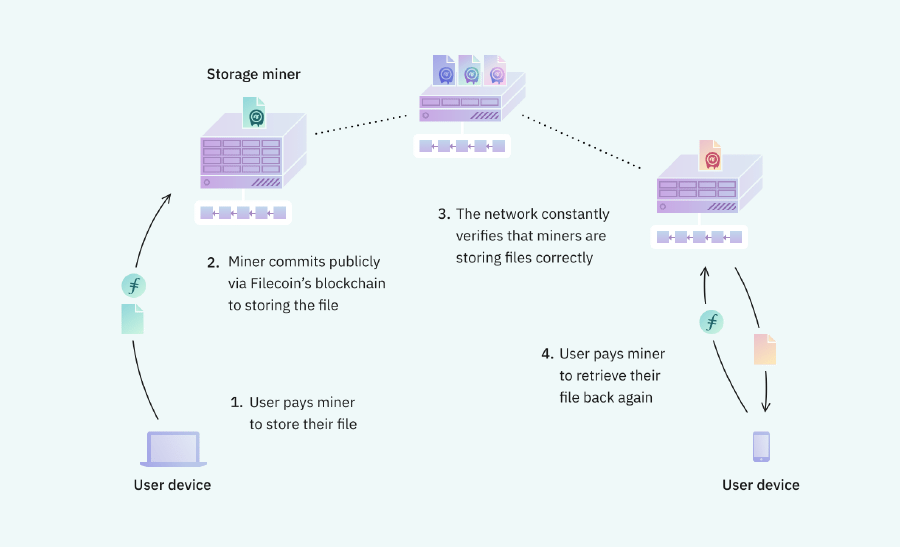
In order to ensure that miners upload and continuously store data, Filecoin uses cryptoeconomic incentives. Miners are required to provide collateral in FIL and periodically asked to provide two types of cryptographic proofs:
Proof of Replication: To ensure that storage providers have uploaded the correct data, the network requires miners to provide a zero-knowledge proof that demonstrates that they have received the data and are indeed hosting it on their computers
Proof of Spacetime: To ensure that miners continue to store that data (and not delete it), the network will periodically require miners to verify a random piece of data
If a miner fails to pass either of these tests, they will lose their collateral.
The protocol had a strong year in 2021, and according to their website, experienced significant growth across several key metrics during the period of January 1st, 2021 to January 1st, 2022. In particular:
Storage Miners: Grew from 856 to 3,600+ (321%)
Network Capacity: Expanded from 1.69 EiB to 14+ EiB (8x)
Unique Clients: Increased from 584 to 703 (20%)
Storage Deals: Grew from 699K to 1M+ s (43%)
Total Data Stored: Expanded from 1.578 PiB to 25+ PiB (15x)
Filecoin is trusted by numerous Web3 projects – including OpenSea, Magic Eden, Polygon, Solana, Metaverse AI and Audius – and it generated over $1.4B in revenue in 2021. (Note: Filecoin’s revenue has declined substantially in 2022 due to a decrease in fees)
Who are the Key Players?
In addition to Filecoin, other notable players in the space include Arweave, BitTorrent, Storj and Siacoin.
Querying Tools
What is Data Aggregation?
Like a blockchain-based version of Google, data aggregators use a process called indexing to make it easy for developers and users to quickly search a blockchain for important data.
Indexing is method of organizing information to make data easier to find. As the name implies, it’s very similar to the index at the end of a book – instead of going through every page in a book, the index allows us to quickly scan an alphabetical list to find the page number of the information we need.
Google became a multi-trillion-dollar company by mastering the art of indexing, and when it comes to blockchains, the process may be just as important.
Unfortunately, there are two main problems with current indexing strategies:
It can be very time consuming and redundant for blockchains to do it themselves
Many existing aggregators are centralized
So how do we solve this problem in a decentralized manner? One possible solution comes through a protocol called The Graph.
How do Data Aggregators Work?
While the project is sometimes called the “Google for blockchains”, a better way to think about The Graph is as a decentralized network of thousands of Googles.
Created by Yaniv Tal the project is an open-source, fully-decentralized indexing protocol for blockchain data.
There are several key players in The Graph’s ecosystem:
Consumers: The end-users of The Graph that initiate search requests and pay fees to the Indexers
Indexers: These are the “workhorses” of the network that provide indexing services in exchange for a fee. Indexers are independent providers that operate in a decentralized marketplace known as the Query Market. To incentivize proper behavior, indexers must stake GRT (The Graph’s native token) tokens as collateral.
Delegators: Loan GRT to indexers to stake and receive a portion of the profits
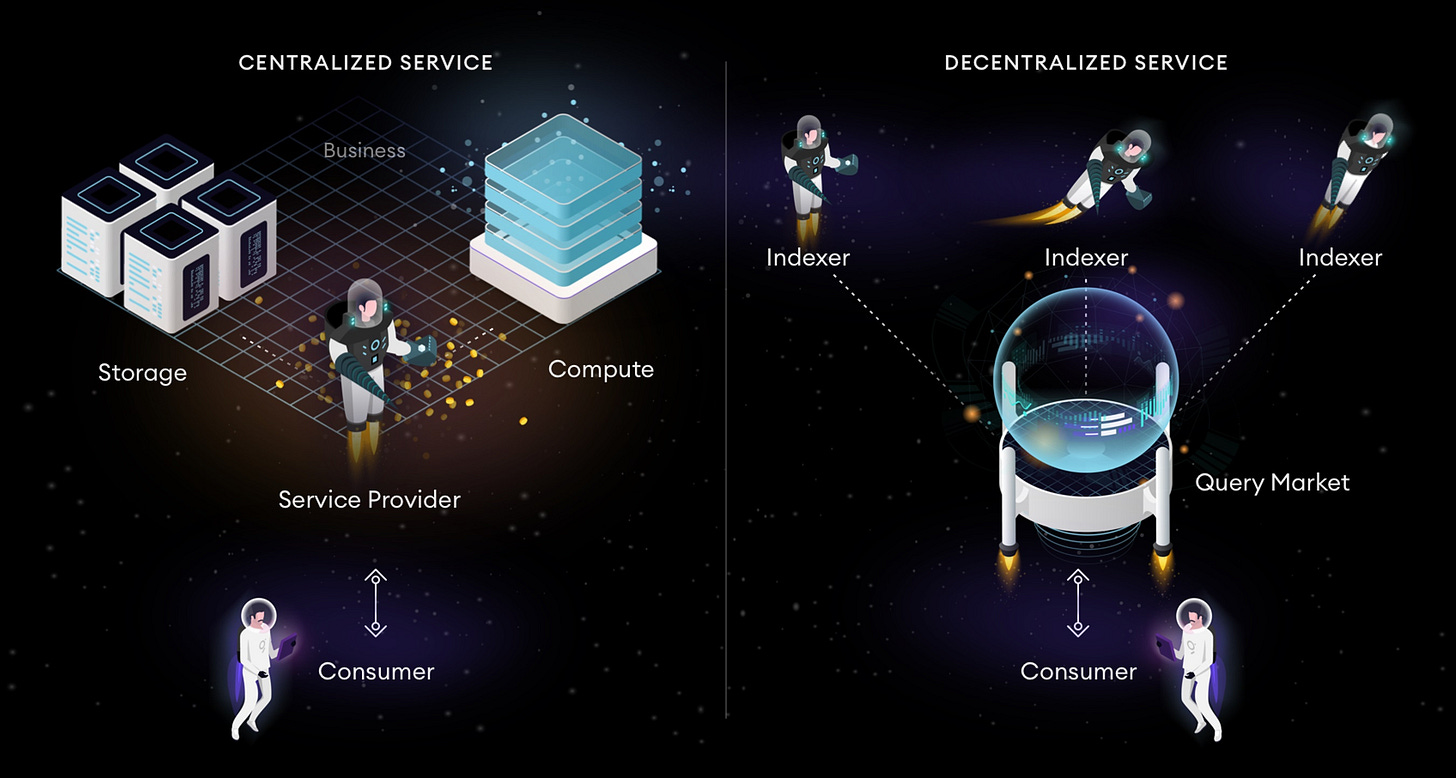
In addition to the above, the network also hosts curators, who find promising networks to index and fisherman and arbitrators, which serve as a form of quality control.
At the time of writing – September 12th, 2022 – The Graph’s fully-diluted market cap is $1.2 billion.
Who are the Key Players in the Data Aggregation Market?
While The Graph currently dominates decentralized data aggregation, its biggest competition still comes from centralized providers such as Scout, BigChainDB, Dune Analytics and Google’s BigQuery.
Oracles
What are Oracles?
Blockchains have one major limitation – they are unable to access data from external systems. This is by design, like a computer without an internet connection, they maintain their isolation to guarantee security and streamline efficiency.
Unfortunately, the vast majority of potential use cases for smart contracts require a connection to the outside world. Exchanges need accurate price information, insurance needs data to make decisions on policy payouts and many apps require market information to determine settlements.
The solution to this problem is known as an oracle, a separate piece of infrastructure that bridges a blockchain to real-world data. Oracles can source a variety of information including, price reports, weather, sporting scores, results of elections, geodata, random numbers, etc…
Oracles became very popular in 2020 and were among the best performing assets in crypto that year.
Chainlink was one of the Best Performing Assets in 2020
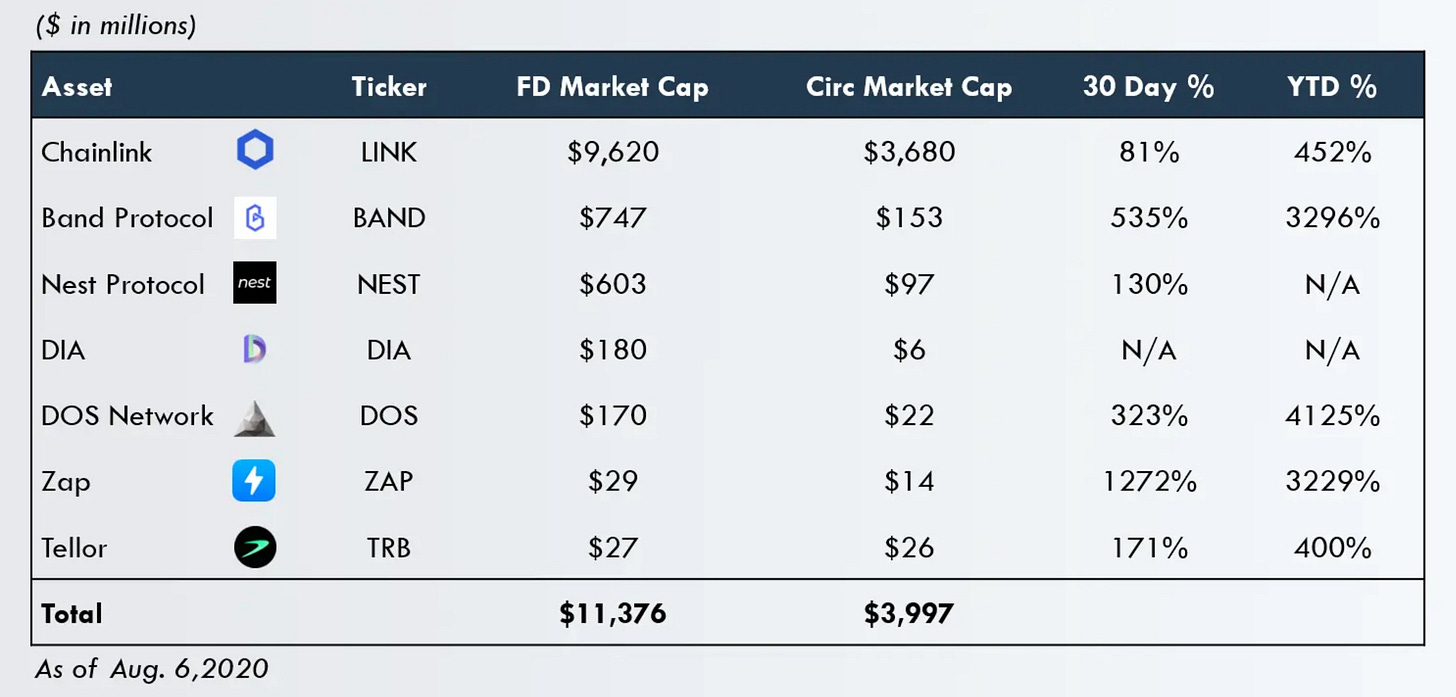
The main challenge with designing oracles, however, is that if any oracle is compromised, the entire system is compromised. As such, we need to leverage a decentralized oracle network to guarantee security.
How do Oracles Work?
To understand how oracles function, let’s take a look at Chainlink, a decentralized blockchain oracle network built on Ethereum.
The project was founded by Sergey Nazarov in 2014 and launched an ICO in 2017 to raise $32M. The project has a very strong management team and recently onboarded Eric Schmidt as an advisor.
Oracles Allow Blockchains to Access External Data
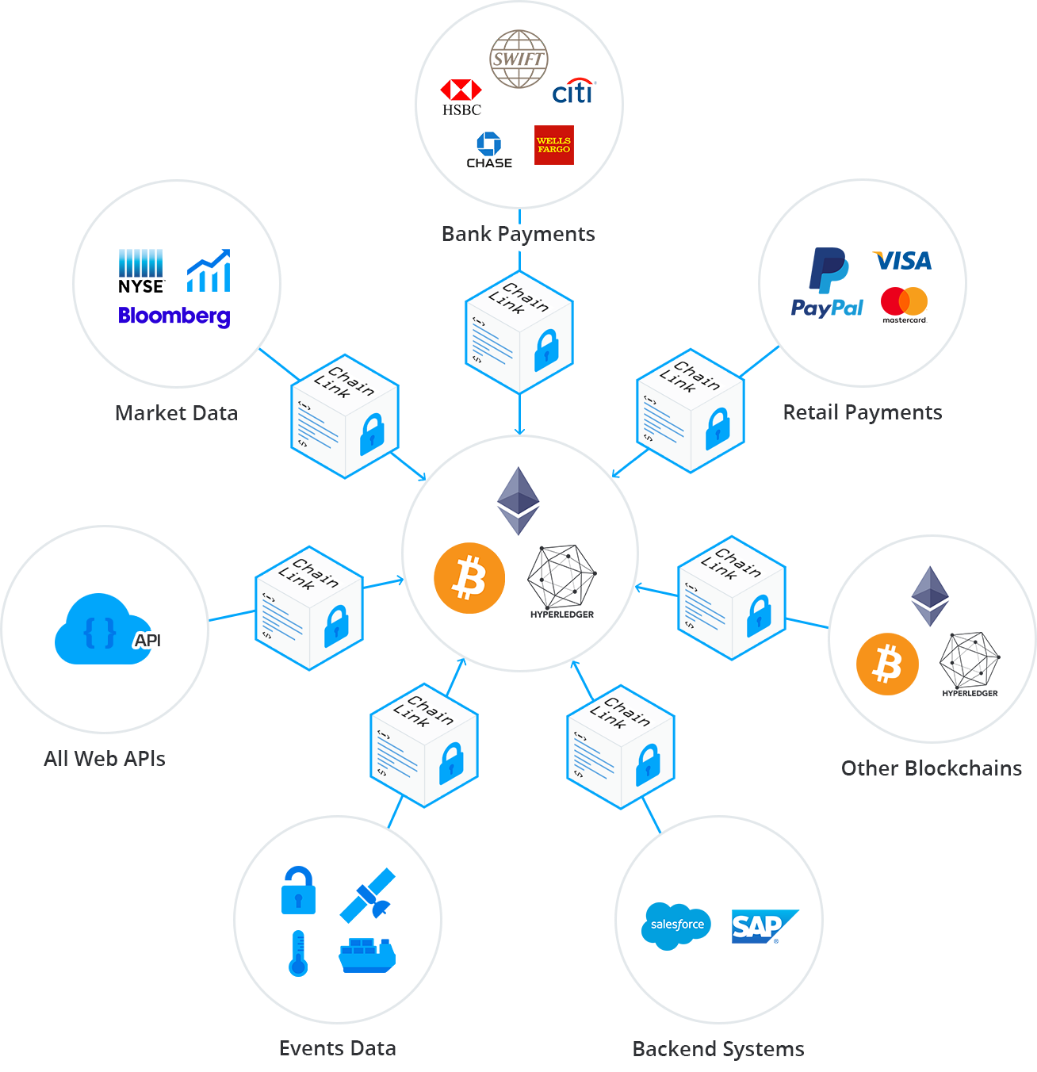
As a decentralized oracle network, Chainlink relies on hundreds of independent oracles to provide relevant data.
As an example, let’s say that Sushiswap wants to show the price of Ethereum on its site. They would:
Create a request for data from the Chainlink network to obtain the price of ETH.
Submit this request along with payment in the form of Chainlink’s native token, LINK.
Chainlink will then automatically select the best oracles based on 1) their reputation and 2) their ability to find the necessary data
Oracles will find the requested data (e.g. the price of ETH) and send it back to Chainlink. Oracles must stake LINK tokens as collateral to ensure proper behavior
Chainlink will aggregate the results, choose the most accurate answers and discards outliers. Oracles that are deemed to be negligent and / or malicious may face penalties and lose some or all of their collateral
The information is routed through Chainlink to the Sushiswap.
Sushiswap can then populate their site with the current price of ETH.
Chainlink has achieved strong traction since launching and currently dominates the oracle space with nearly 1,500 partners. For comparison, the next largest network has fewer than 200.
Who are the Key Players in the Oracle Market?
Chainlink dominates the oracles space with 68% market share.
Other notable players include Berry and Band Protocol.
Bridges
What are Interoperability Protocols?
While Ethereum remains the dominant chain in DeFi, its share has declined from over 95% to under 60% due to the emergence of several “alternative L1s” such as Solana, Binance Smart Chain and Avalanche.
While arguably good for the long-term health of the ecosystem, this explosion of smart contract platforms has created significant short-term problems. Perhaps most pressing is the problem of interoperability.
Because blockchains have different protocols, they cannot communicate with each other. While this independence has many benefits, it also creates significant challenges for users that want to move tokens and / or data between chains.
Interoperability protocols are systems designed to solve this problem by allowing the transfer of information and assets between two or more blockchains.
How Do Interoperability Protocols Work?
There are four main types of interoperability solutions:
Atomic Swaps: Atomic swaps allow two parties to directly trade tokens from different blockchains via a virtual escrow account
Wrapped Assets: Wrapped assets are a synthetic version of one blockchain’s token designed for use on another blockchain. For example, wrapped Bitcoin is an Ethereum token that represents Bitcoin on the Ethereum blockchain
Cross-Chain Bridges: Cross-Chain bridges transfer tokens directly from one blockchain to another
Cross-Chain Swaps: Like an interoperable version of Uniswap, cross-chain swaps use liquidity pools to trade assets between different blockchains
To understand these solutions better, let’s look at some of the most popular interoperability protocols:
What are Atomic Swaps?
Atomic swaps were one of the earliest interoperability solutions.
These swaps use smart contracts to allow two parties to directly trade tokens from different blockchains without using a centralized intermediary.
To perform an atomic swap, each user locks their tokens up in a virtual safe known as a Hashed Timelock Contract (HTLC), and when both tokens have been received the trade is executed. The HTLC is also time-based, meaning that both parties must satisfy their end of the deal within a predefined time frame.
While the direct nature of atomic swaps ensures that they are decentralized, they are extremely inefficient as potential users need to find a willing counterparty for every trade.
What are Wrapped Assets?
A wrapped token is simply a synthetic version of a token designed for use on another network. Wrapped Bitcoin (wBTC), for example, is pegged to the price of Bitcoin but designed to work on the Ethereum network.
The process of wrapping uses a “lock and mint” system. When a user transfers assets from Blockchain A to Blockchain B, those assets are “locked” on Blockchain A via a smart contract. Once locked, identical copies of these tokens are “minted” (i.e. created) on Blockchain B. If the user wants to get her original tokens back, then the copies on Blockchain B are destroyed and she can resume using the tokens on Blockchain A.
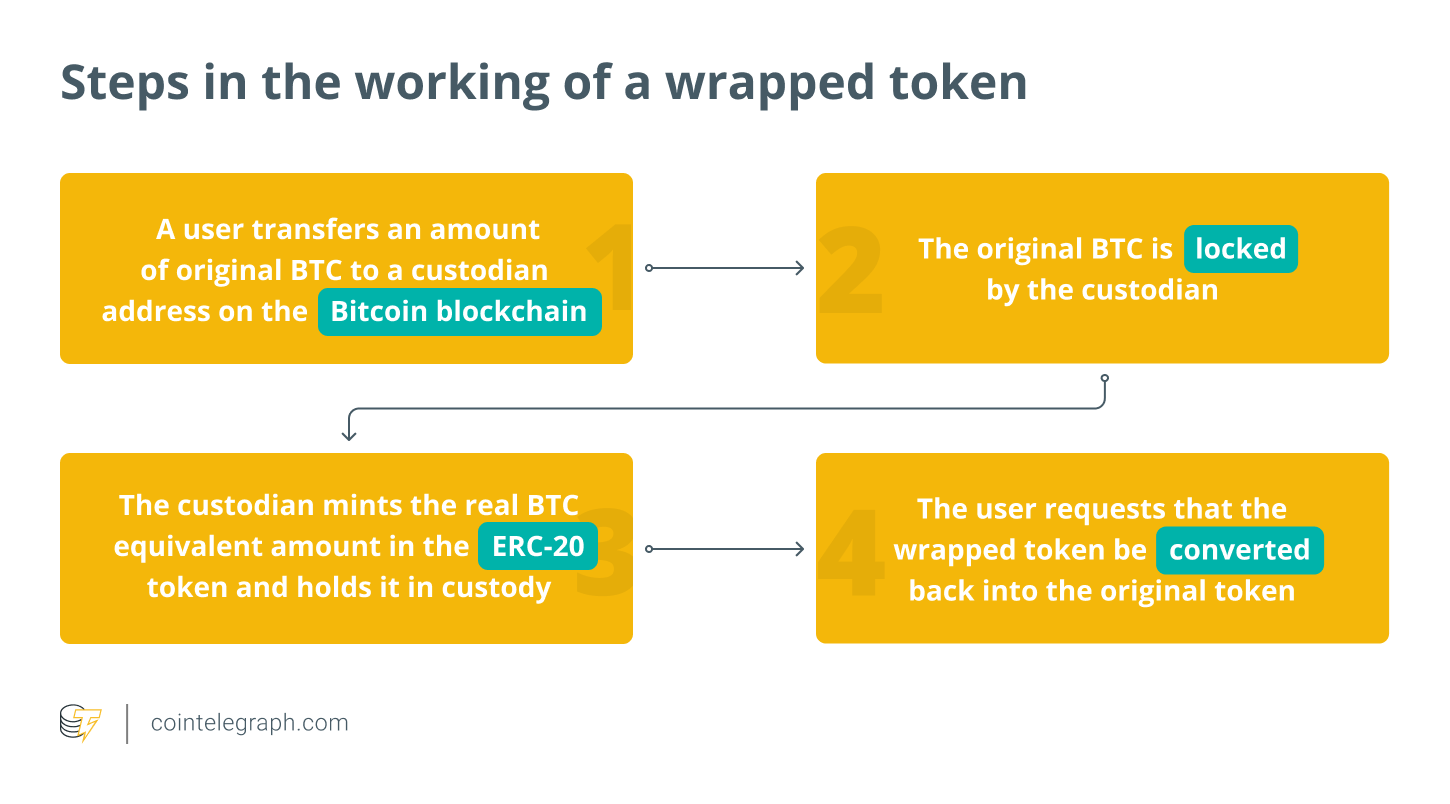
Unfortunately, many existing wrapping services require a third-party custodian to orchestrate the “lock and mint” system and, as such, are centralized.
One project trying to fix this is Ren Protocol, which is attempting to create a decentralized wrapping service by relying on a network of 10,000 nodes to provide storage space and custody user assets.
What are Chain Specific Bridges?
Chain-specific bridges are dedicated bridges that operate directly between two blockchains. For example, Polygon’s PoS bridge allows users to transfer assets from Ethereum to Polygon and vice versa.
Like wrapped assets, the PoS bridge uses a “lock and mint” system. When you deposit funds into a bridge, they are locked on Ethereum and copies are created on Polygon.
Most major blockchains have chain specific bridges, with Polygon, Arbitrum and Optimism being the most popular bridges for Ethereum.
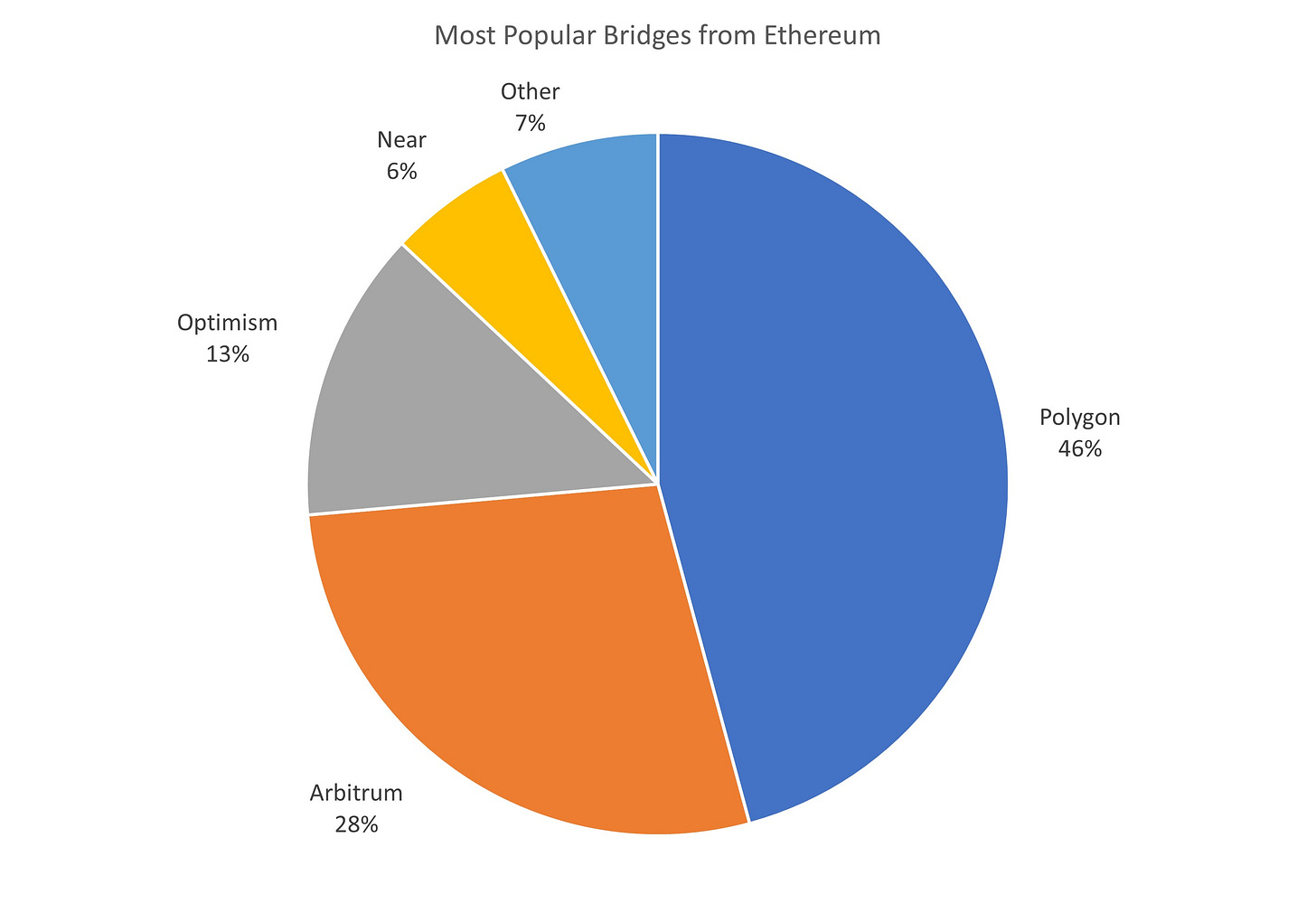
The main drawback to chain specific bridges is that they are generally limited to the two chains in question, making them difficult to scale.
What are Cross-Chain Swaps?
Much like an interoperable Uniswap, cross-chain swaps use a series of liquidity pools to trade native assets between different blockchains.
One prominent example of such a protocol is Thorchain. Thorchain’s pools are composed of three assets – the tokens that a user wants to trade and RUNE, the network’s native token.
So if a user wanted to swap Bitcoin for Ethereum, the trade would first go through a Bitcoin-RUNE pool, and then a RUNE-Ethereum pool.

There are a few downsides to this method, however:
Swaps can take a long time because they effectively require three transactions: Asset A to the A-Rune liquidity pool, the A-Rune liquidity pool to the B-Rune liquidity pool and the B-Rune liquidity pool to asset B
Unlike Uniswap, where swaps can be bundled into large transactions, trades on Thorchain lack composability
Who are the Key Players in the Interoperability Solutions Market?
Wrapped Bitcoin, Just Cryptos and Multichain are the most popular bridges today, representing almost 80% of the total value locked in interoperability solutions.
What is the Future of Interoperability Solutions?
Interoperability remains an unsolved problem – the market is nascent and there are numerous technical challenges (perhaps the most insidious is security, as nearly $2 billion in funds were stolen from bridges in the first half of 2022). While there are several potential solutions, all have tradeoffs and none have achieved escape velocity.
Given the likelihood of a multi-chain future, however, this is an area to keep a close eye on. In the coming months, it is likely that we will see an influx of new players and will also see existing solutions continue to evolve.
Many would argue that this is one of the holy grails of the space, as a protocol that can efficiently solve this problem will likely garner a 12-figure enterprise value.
Decentralized Computers
What are Decentralized Computers?
Web3 may represent the biggest computing challenge in history.
Over the next decade, we will likely see the online world expand in both breadth (connecting to billions of IoT devices) and depth (as we begin to realize the vision of the metaverse – a collection of VR-powered virtual worlds).
As such, vast amounts of processing power will be required to create entire digital economies composed of game engines, simulated environments, video streaming, spatial computing, holographic displays and virtual and augmented reality experiences.
Fortunately, blockchains offer a potential solution to this problem through a concept known as decentralized (or “shared”) computing. Shared computing lets individuals lend the unused computing resources on their personal devices (e.g. processing power, storage space, network bandwidth) to those who need it in exchange for compensation through cryptocurrencies.
Shared computing offers several benefits including:
More Processing Power: By relying on a global network of computers, shared computing platforms hope to aggregate more processing power than any single entity could on its own
Faster Speeds: Preliminary tests have shown that distributed computing networks are 20% faster than centralized ones, and this number may continue to grow as networks scale
Lower Costs: Because distributed computing models can aggregate from a variety of sources, they are often significantly cheaper than centralized suppliers. According to Jules Urbach, the CEO of Render, “when you have really cheap GPU power and you want to render something 5,000 times—and the cost is 1/100th what it was before—that becomes tractable.”
More Security: Because identical copies of your information is scattered and stored across multiple nodes, there is little chance of outages, data loss or distributed denial of service attacks (“DDoS” where malicious actors use bots to overload a site with traffic)
Passive Income: Processors can lend their unused computing power to earn passive income
Avivah Lithan, a vice president at Gartner Research believes that shared computing represents “blockchain at its best — peer-to-peer networks where underutilized servers are traded” and compares it to a “Uber” for computers.
One of the interesting projects leveraging this model is known as Render Technologies.
How does Shared Compute Work?
Founded in 2016 by Jules Urbach, Render is building a shared computing network that helps “render” visual effects and 3D graphics.
Rendering is the process used by computers to create 3D visual displays with texture and detail. This process is extremely difficult and computationally intensive, and often requires hours to render a single object or frame. For example, according to Pixar’s Peter Collingridge:
“Pixar has a huge "render farm," which is basically a supercomputer composed of 2000 machines, and 24,000 cores. This makes it one of the 25 largest supercomputers in the world. That said, with all that computing power, it still took two years to render Monster's University.”
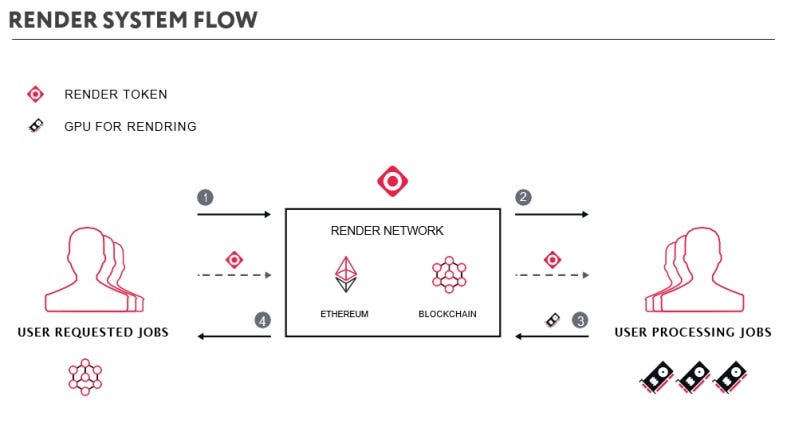
Render operates as an automated marketplace –a sort of “AirBnB” for computing power – where:
Users who want to lend their unused computing power sign up for the network as “Node Operators” and install the required software
Content creators submit their job requests along with payment in the platform’s native token, RNDR
The Render network automatically assigns these jobs to the appropriate Node, matching the Creator’s need with the Node’s capabilities
Node operators run Render’s “OctaneRender” protocol to complete the work
Once complete, the escrow is released and Nodes receive compensation in RNDR
The network can be used to create several digital assets including videos, NFTs, high-resolution images, metaverse assets and 3D animations.
At the time of writing, Render’s market cap is roughly $300 million.
Who are the Key Players offering Shared Compute?
Shared computing has made significant progress in the last year. In addition to RNDR, other notable projects include LivePeer, Akash and Golem.
Problems with Web3
While the potential of Web3 is immense, the space also has its share of challenges. Among the most notable of these are:
High fees
Limited traction
Volatility
Environmental concerns
Limited interoperability
Miner-Extractable Value (MEV)
Poor user experience
Usage by criminals and terrorists
Hacks and scams
Lack of legal and regulatory clarity
Let’s take a deeper look into each of these concerns...
High Fees
“Gas” refers to the fee required to execute a transaction on the Ethereum network. Whether you want to transfer a token, vote in a DAO, loan your assets on Ethereum or mint an NFT, you must pay gas to incentive the miners to approve your transaction and include it on the blockchain.
Because space on the Ethereum network is limited – it can only execute around 25 transactions per second – priority is determined by an auction process. This means that gas can get very expensive when the network is busy.
Unfortunately, network usage has grown significantly over the last few years, which has caused fees to spike. For much of the first half of 2022, average fees exceeded $30. While we are in a bit of a lull at the time of writing, the 200-Day Moving Average transaction fee remains close to $10.00, a substantial increase from the $0.14 recorded three years prior.
Fees on the Ethereum Network Average Nearly $10.00 per Transaction

Keep in mind these are average fees for all transactions, including simple ones like a token transfer. As some transactions – such as minting an NFT or borrowing / lending ETH – are generally much more complex, it is not uncommon to see fees of several hundred dollars.
In fact, in times of extreme congestion, commonly known as “gas wars”, fees can be in the thousands. The most notable example of this occurred during the Bored Ape Yacht Club’s April 30th launch of Otherside, where users had to pay a minimum of $6K in fees to purchase land!
Unlike in traditional finance, transaction fees are independent of the transaction amount (i.e. it costs the same to send $1 or $1 million), so while this may not effect high-dollar users, it’s effectively crowding the average consumer out of the market.
These high fees have spawned the creation of many alternative blockchains – such as Avalanche, Solana, Cardano, Polkadot and Binance Smart Chain – that offer significantly lower fees and transaction times. For this reason, they are often known as “Ethereum Killers”.
Limited Traction
One of the most common criticisms of Web3 is that there are no “real-world” use cases.
At first glance, I can see how someone could think that. After all, most vendors don’t accept Bitcoin and it’s too volatile (and slow) to be used as money anyway, the NFT market seems to just be a bunch of rich kids spending hundreds of thousands of dollars on pictures of monkeys and most DAOs are unbelievably disorganized and inefficient.
None of this should come as a surprise, however, because disruptive technologies are – by definition –notoriously inefficient when they begin. As such, they are often relentlessly mocked.
Early skeptics of the internet believed that online companies would never turn a profit, and Clifford Stole of Newsweek argued that “no online database will replace your daily newspaper, no CD-ROM can take the place of a competent teacher and no computer network will change the way government works.” Even early users of the telephone thought it was useless because the signal could only travel a few miles.
Newsweek’s Early Opinion of the Internet
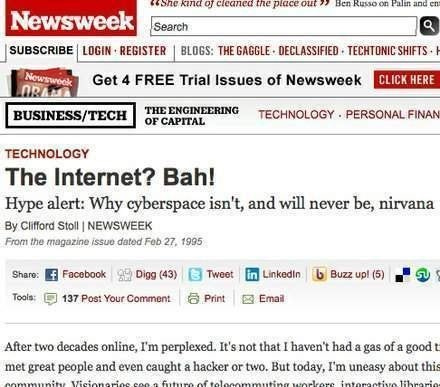
While there has undoubtedly been a lot of absurdity and hype in the crypto market – such as Dentacoin, the coin for dentists – when we dig a little deeper we can see several burgeoning use cases:
DeFi: Decentralized exchanges recorded over $1 trillion in trading volume in 2021. While this is just a fraction of the $14 trillion boasted by centralized exchanges, there is one major difference – DeXs can’t restrict users based on their geographic location. As such, when China banned cryptocurrency trading in 2021, many users were still able to get their money out using Uniswap
NFTs: Nearly $40 billion of NFTs have been sold since 2020. While one may argue that this interest in digital apes, punks and goblins was just a fad, they’re missing one major point – the creators of these NFTs were paid a royalty each time they sold. While this is common practice for recording, television and movie stars, it had previously been all but impossible to employ for visual artists
Decentralized Infrastructure: While it has long been a dream to create a user-owned internet, every attempt has failed because users aren’t incentivized to host their own infrastructure. Helium changed this through the use of cryptoeconomic incentives, growing a network of 1 million connected devices that spans 182 countries.
DAOs: Most talent networks such as Upwork charge contributors up to 40% for participating in the platform. By organizing itself into a decentralized autonomous organization, Braintrust was able to build a 700,000 member, $100M+ volume talent marketplace that only charges 10% fees
Fair Marketplaces: Content marketplaces such as Spotify and iTunes often charge artists up to 30% of their sales. Combined with the cut taken by the major labels (UMG, Sony and Warner Music Group), the average musician takes home less than 10% of the revenue they generate. Decentralized marketplaces such as Audius change this and allow artists to earn up to 90% of sales
Permanent Webpages: “Link rot” – the phenomenon where you try to access a webpage and receive the 404 “page not found” error – is a major problem in today’s web. Because of the high cost of ongoing server maintenance, it is estimated that over 30% of links posted on social media will be dead within two years and over 98.4% will fail after twenty. Companies such as Arweave are using cryptocurrencies to pioneer new solutions that allow a user to pay once and receive hosting forever.
Play-to-Earn Gaming: While the project ultimately crashed, the blockchain-based game Axie Infinity recorded over $4 billion of sales, allowing many users to earn thousands of dollars a month in cash collecting and selling virtual goods (more than the average income of a teacher, construction worker or office assistant in the Philippines, the game’s most popular region). This would have been all but impossible for many “Web 2.0” games, which often restrict the ownership and transfer of digital items
Borderless Currencies: During the early days of its war with Russia, the Ukraine was hampered by a series of restrictions that made the transfer of fiat money into the economy complicated and slow. As such, the nation turned to crypto, raising over $100 million in Bitcoin, Ethereum and other tokens to fund its defense.
While this may not seem like a lot in the grand scheme of things, it’s progress. After all, the criticism after the last market crash in 2017 was that there were “no uses cases” for cryptocurrencies. At least now we’ve progressed to “barely any use cases”.
Volatility
Cryptocurrencies are notoriously volatile – Bitcoin alone recorded swings greater than 2 standard deviations an average of almost 20x per year over the past 5 years.
Bitcoin has swung more than 2 SDs almost 20 times a year since 2017
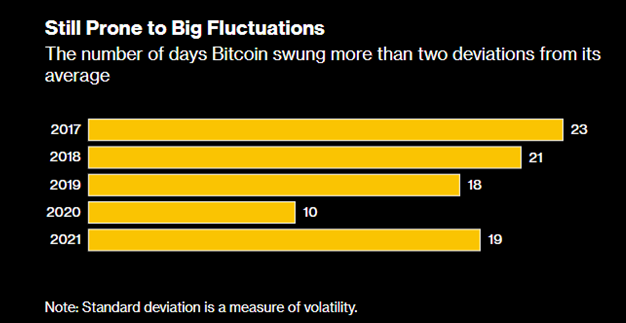
Many critics argue that this volatility will be their ultimate downfall. After all, something can’t function as a medium of exchange if its value fluctuates wildly from one day to the next. Imagine waking up not knowing whether the coins in your digital wallet could buy you a new car or a cup of coffee.
This concern is a big driver of the demand for stablecoins, which offer many of the benefits of cryptocurrencies while maintaining a 1:1 peg to traditional currencies such as the USD, Renminbi or Euro. Because they maintain a constant price, these assets can be used for everyday transactions such as paying salaries, making loans, buying goods and services, etc… Many of the most popular cryptocurrencies today are stablecoins, with Tether and USD Coin commanding the third and fourth largest market caps at $67 billion and $52 billion, respectively (as of 9/12/22).
Ironically, many cryptocurrency disciples don’t believe that stablecoins will be necessary in the long-run, as they argue that “volatility” is simply a matter of perspective. Given that we price goods in the United States in US dollars, we measure “volatility” by that standard (i.e how much did an asset go up or down in dollar value). But if you were to measure using Bitcoin as the baseline, you could argue that it’s the dollar that’s volatile!
Indeed, purists argue that’s the direction we’re headed. They believe that once cryptocurrencies gain widespread adoption, businesses will begin to use them to price goods and services. When this happens, there will be no more volatility as a 10 satoshi cup of coffee will always be worth 10 satoshis, no matter what happens to the Dollar, Yen or Won (FYI – a “satoshi” is the smallest unit of Bitcoin, worth 1/100millionth or a BTC) .
While this might seem far-fetched it should be noted that this is already happening on a limited scale. Many Web3 goods, such as NFTs, are already natively priced in Ether and not USD.
Environmental Concerns
Proof-of-work consensus mining uses a significant amount of energy. It has been estimated that each transaction uses enough electricity to power the average American home for a month. When you add all the transactions together, the cost is staggering – Bitcoin alone consumes approximately 150 terawatt-hours per year. That’s nearly 10x the amount Google uses and more than many countries including Malaysia, Sweden, Ukraine, Argentina and Norway!
Bitcoin consumes more energy than many countries
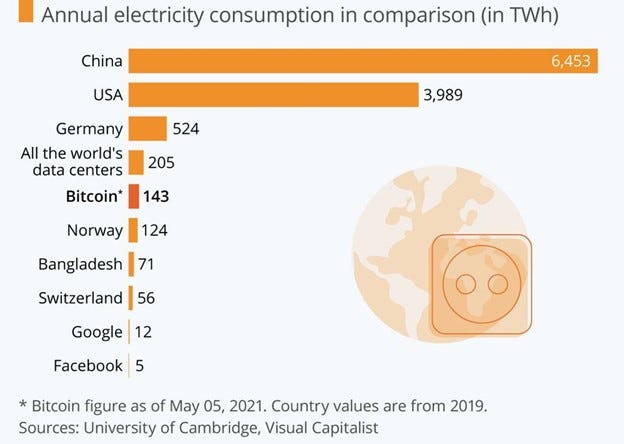
Fortunately, these statistics may not be as alarming as they seem at first glance. First of all, energy expenditure does not necessarily equate to environmental impact. In fact, because miners are incentivized to find the cheapest source of energy possible, many rely on alternative sources such as wind or solar. Some estimates believe that 40% to 75% of the energy to power proof-of-work mining may come from renewable sources.
Second, many newer cryptocurrencies are adopting a proof-of-stake model (and Ethereum is transitioning to one), which uses almost no energy.
Interoperability Challenges
While Ethereum may have had a monopoly on the smart contract space in 2020, its share has been steadily eroded by the emergence of several new competitors. As such, consumers are now using multiple “alternative L1s” such as Solana, Binance Smart Chain, Avalanche, etc…
Ethereum is No Longer the Only Player in Town
While arguably good for the long-term health of the ecosystem, this explosion of smart contract platforms has created significant short-term problems. Perhaps most pressing is the problem of interoperability.
Because blockchains have different protocols, they cannot communicate or transact directly with one another. For example, you can’t directly buy an Ethereum NFT using a Solana token.
As such, the ecosystem has developed several “workarounds”, such as bridges, that appear to allow users to transfer tokens from one chain to another. Unfortunately, bridges don’t actually work this way and instead “lock” the tokens on one chain and create an entirely new set of tokens on another.
This means that if you want to swap 100 ETH tokens for 5,000 SOL tokens via a bridge, you’re actually doubling the number of tokens in existence. The original 100 ETH is “locked” on the Ethereum blockchain and 5,000 new SOL tokens are issued on the Solana blockchain.
While this isn’t in a problem in theory – as the average user can’t access these “locked” tokens – hackers frequently find ways to penetrate the system’s security and steal them. Indeed, in the first half of 2022 alone, criminals have stolen almost $2 billion from bridges!
Bridges are a Major Source of Crypto Hacks
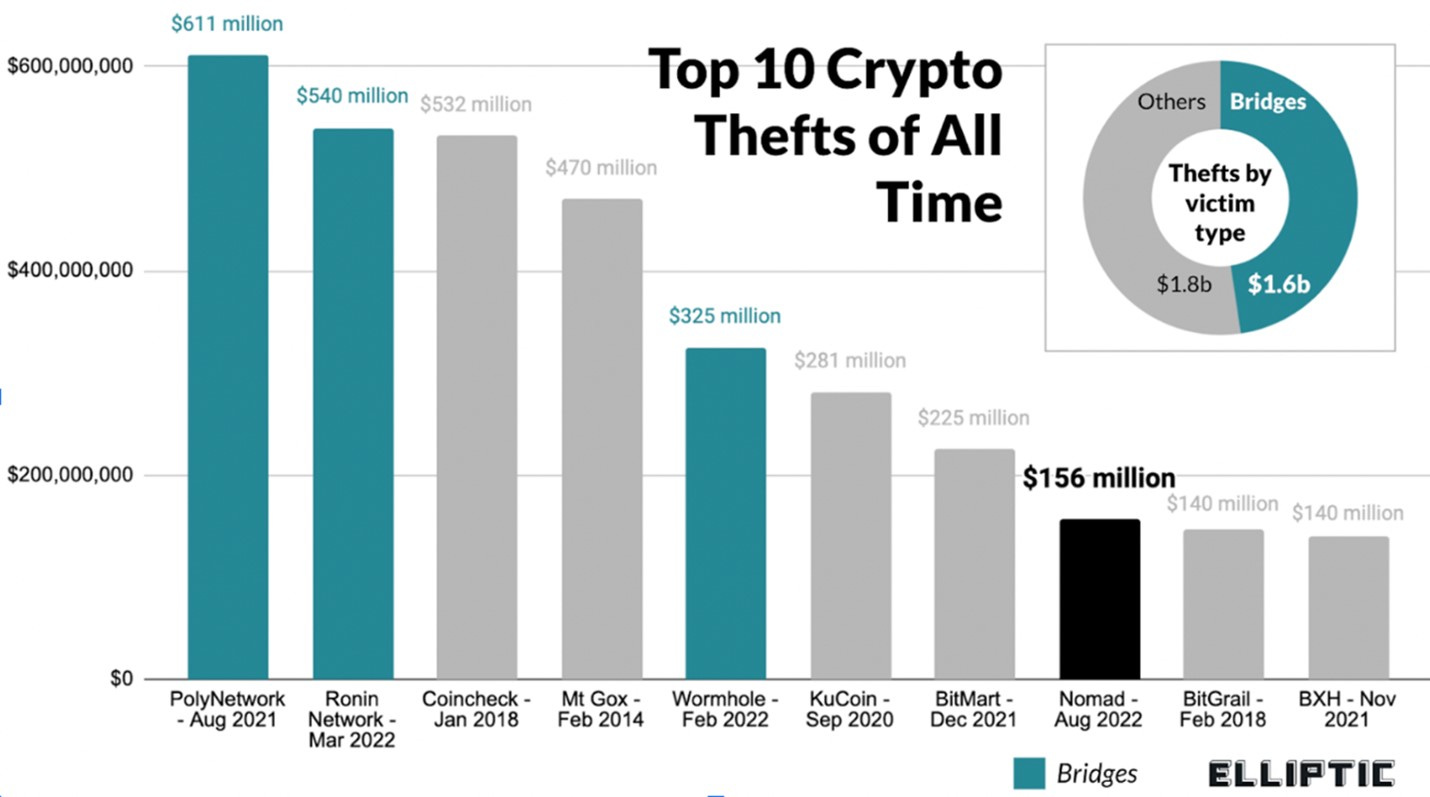
While some may argue that the solution to this problem is simply developing bridges with better security, others argue that it’s a Sisyphean task, as having hundreds of thousands of individual vaults containing billions of “locked” tokens will be impossible to defend and always serve as an enticing honeypot to hackers.
Even Vitalik himself argues that bridging is ultimately impossible, stating that while “the future will be ‘multi-chain’, it will not be ‘cross-chain’”.
While the jury is still out on whether it’s possible, there are nevertheless hundreds of talented teams working on creative and novel solutions to the interoperability challenge.
Given the likelihood of a multi-chain future, any protocol that can efficiently solve this problem will likely garner a 12-figure enterprise value.
Miner-Extractable Value (MEV)
As discussed previously, cryptocurrencies are secured by miners (or “validators” for Proof-of-Stake systems) who gather transactions, verify them and include them in the next block.
Because each block can only contain a limited number of transactions, miners generally choose which transactions to include based on an auction process. Those who offer to pay the highest fees will be included first.
Unfortunately, miners aren’t technically forced to follow this rule and ultimately have full discretion over which transactions to include, which to ignore and how to order them. When miners abuse this power to personally profit, it’s known as Miner-Extractable Value (MEV).
There are a host of MEV tactics, but a common one is known as frontrunning. To see how this works, let’s imagine that you noticed that ETH was trading for a lower price on exchange A than it was on exchange B. Seeing a great arbitrage opportunity, you put in an order to buy ETH on exchange A and then sell it on B. Once you place the order, it gets sent to the miners who put it in a transaction queue.
Once this transaction is in the queue an unethical miner could now see what you are trying to do and decide to ignore your request and make the same trade himself, stealing your profit opportunity in the process.
As mentioned, there are several of MEV tactics and, to make matters worse, many of them are now employed by automated bots. As such, MEV is becoming a substantial problem that is estimated to cost users over $1 billion annually.
Poor User Experience
One common criticism of Web3 is that the user experience pales in comparison to Web 2.0.
This is understandable, as Web3 transactions are quite different than what we’re used to and can seem rather complicated at first glance. For instance, in order to buy an NFT, a user needs to:
Register on a centralized exchange, such as Coinbase or Binance
Provide KYC information such as a passport photo, driver’s license and / or utility bill to confirm their identity
Use the centralized exchange to purchase Ethereum
Set up a wallet via Metamask
Transfer their Ethereum to their Metamask wallet
Go to OpenSea or LooksRare and connect their wallet
Search for an NFT they like
Click to purchase it
Approve the gas fees and sign the transaction
I’ll admit, when I first tried buying NFTs I was definitely nervous navigating all these steps.
But once I did it, I realized how simple it was. In fact, once you’re used to it, navigating Web3 is much easier than navigating the traditional web because:
You don’t need passwords – once you have a wallet setup it can connect to any site
The checkout process is simple as you don’t need to input a credit card, check for fraud, etc..
That said, more work needs to be done to either educate the public or streamline the onboarding experience.
Usage by Criminals and Terrorists
Several of the core benefits of decentralized economies could also be seen as weaknesses. The fact that they allow anonymous individuals to form organizations that exist outside of the traditional financial and legal system could be a recipe for disaster. Indeed, critics argue that the crypto space is the ideal venue for:
Tax Evasion: Because cryptocurrency transactions are anonymous, people could use them to evade taxes
Criminal Activity: Transactions can’t be regulated, which means that criminals could create decentralized organizations to sell drugs or weapons
Funding Terrorists: Terrorists groups could theoretically form a DAO to receive funding from anonymous sources
While all of these are definitely possible – and even seem logical at first blush -- the data simply doesn’t support these fears. In fact, only 0.15% of all cryptocurrency transactions are connected to criminal dealings.
Illegal Activities Represent Only 0.15% of Cryptocurrency Transactions
A big part of the reason for this is probably because cryptocurrency transactions aren’t actually anonymous, they are “pseudonymous” – meaning that if anyone can tie you to your address, they can see all of your transactions. This has proven a boon time and time again to law enforcement, who have used the transaction history to track down several high-profile thieves. In 2022 alone, the Department of Justice seized $3.6 billion from crypto hackers.
Ironically, given the fact that all transactions are recorded forever on a digital ledger, cryptocurrencies may ultimately reduce crime, fraud and tax evasion.
Hacks and Scams
Crime is an ongoing problem in the cryptocurrency space. According to blockchain data firm Chainalysis, over $14B was stolen in 2021 across the broader ecosystem.
Criminals Received Over $14B in Cryptocurrencies in 2021
Three of the most popular methods used by criminals include:
Malware: Malicious software that infiltrates a user’s computer, generally gaining access to his or her private keys
Code Exploits: Occur when coders find a vulnerability in a smart contract and leverage that to siphon funds to their own address
Scams: Utilize social engineering to deceive users and steal funds (e.g. a Ponzi Scheme)
Let’s take a deeper look into each of these categories below:
Malware
Malware was responsible for over $3B of losses in 2021.
Malware Cost Users $3.2B in 2021
The most popular methods used by hackers include:
Cryptojacking: The unauthorized use of someone else's computer to mine cryptocurrency. Technically, cryptojackers are stealing computing power (and therefore electricity), but this can be given a numerical value.
Trojans: Viruses that look like legitimate programs but instead infiltrate a user’s computer to steal important data such as a person’s private keys
Clippers: Clipping is the process of inserting new text into a user’s clipboard. Hackers use this to insert the address of their crypto wallets, so when a user goes to transfer funds it is redirected to the hacker (note: always triple check the address you’re sending to!)
Info Stealers: Collect saved files, autocomplete history and seed phrases from compromised computers.
Code Exploits
Like any piece of software, smart contracts with poorly written code have significant vulnerabilities. This is common across the cryptocurrency sphere and the DeFi, NFT, DAO, Smart Contract and Web3 spaces have all suffered exploits.
Projects lost hundreds of millions to hacks in 2021. Notable exploits include:
Notable Hacks in 2021
This is not a new phenomenon and hacks have plagued the space since inception. Indeed, one of the first Bitcoin exchanges known as Mt. Gox – which handled 70% of all Bitcoin transactions at the time – was hacked in 2014 and 750K BTC were stolen (worth over $16 billion today – September 12th, 2022).
In addition, the first DAO, known simply as “The DAO”, was also the victim of an exploit. The project launched in 2016 and raised $150 million worth of Ether. Less than three months after launching, it was hacked, causing the project to lose $60 million.
The DAO hack caused controversy on many levels in the space. Notably, there was a debate on whether or not to reverse the transaction. Doing so would effectively return the funds, but also go against the spirit of decentralization and set a poor precedent.
Voters ultimately decided to reverse the attack, “forking” Ethereum blockchain into:
Ethereum: The version that restores the funds lost in the attack to their original addresses. This is the chain that most people use today
Ethereum Classic: The original chain that preserves the hack. Classic is much less popular and trades at approximately 2% of the value of ETH
Although the funds were restored, the hacker did not lose out entirely, as he or she still retains possession of Ethereum Classic coins which are now worth over $100 million.
Scams
Outright scams were the largest source of cryptocurrency-based crime in 2021, costing users over $7.7B.
Scammers Stole $7.7B in 2021
While there are multiple types of scams in the crypto world (e.g. ponzi schemes, pump-and-dumps), a new form gaining notoriety is the “rug pull”.
Rug pulls (aka “rugs”) occur when a founder creates a project with the intent to abandon it and run off with the investor’s funds. Critics argue that the hype around the space, lack of investor protections, ability for founders to remain anonymous and self-custody of funds provide an ideal breeding ground for these types of scams.
Indeed, rugs cost investors billions and accounted for 36% of the total crypto scams in 2021 (up from 1% in 2020). They have infected nearly every vertical including DAOs, DeFi, NFTs and cryptocurrencies.
Lack of Legal and Regulatory Clarity
In most of the world, the crypto space still exists in a legal “grey area”. The technology is still relatively new, and many governments haven’t had time to catch up.
And while the space has its fans in the administration, it also has its share of detractors. For instance, SEC Chief Gary Gensler labeled the space as the “wild west” and Elizabeth Warren called DeFi “one of the shadiest parts of the crypto world”.
Elizabeth Warren Doesn’t Like DeFi
Although some things are definite – like the fact that profits gained from cryptocurrency trading is taxable in the US – there are still several open issues. While going through the entire gamut of these outstanding legal questions is well beyond the scope of this article, here are a few recurring themes:
Cryptocurrencies: Although the US has deemed that Bitcoin is not a security, it has not passed the same judgement on every project (in fact Ripple, once one of the largest projects, is currently battling the SEC on that issue). In addition, many nations are struggling to deal with the tax implications of novel concepts such as airdrops
DeFi: With the $40 billion collapse of the Terra stablecoin, DeFi is coming into sharp regulatory focus. Some of the questions regulators are trying to address are the legal treatment of decentralized exchanges, the enforcement and validity of smart contracts and potential regulations around stablecoins
NFTs: Given the fact that the NFT market is only a few years old, it has been largely ignored by regulators. That said, there are several outstanding questions when it comes to the legal standing of non-fungible tokens, including: are they securities, what intellectual property rights are transferred in a sale and how do KYC and AML laws apply?
DAOs: Given that DAOs have no physical location and don't register as corporations, they often exist in a legal state of limbo. This creates several potential risks – it’s not clear whether DAO members have the same personal protection they would have in an LLC, there’s no clear guidance on how a DAO pays taxes and it’s not clear how DAOs can do business with traditional corporations
Unfortunately, these uncertainties haven’t always stopped authorities from pursuing action against alleged offenders. While some of these cases are definitely warranted, such as the prosecution of an OpenSea employee for the insider trading of NFTs, others have been met with fierce resistance from the crypto community.
Perhaps the biggest example of this is the Netherlands’ arrest of blockchain developer Alexey Pertsev, the creator of Tornado Cash. Tornado Cash is a “mixing” protocol designed to protect a user’s privacy. Consumers can deposit cryptocurrencies in the platform, get an “IOU”, and then redeem this IOU for a fresh set of tokens with different identification numbers.
While there are a dozen valid reasons for wanting privacy, Tornado Cash was unfortunately often used heavily by criminals and rogue regimes such as North Korea.
Despite this fact, most people in the crypto space agree that it’s unfair to punish someone for creating a an open-source piece of code – that would be like jailing Tim Cook because drug dealers tend to use iPhones.
Given the unclear state of regulation in crypto, the Biden administration issued an executive order in March calling on regulators to explore the risks and benefits of the technology. Researchers will focus on potential measures to protect consumers and the financial system, mitigate illicit activity, advance US leadership in the technology and promote safe and equitable access.
While the results of this report could greatly impact centralized systems such as Coinbase or Tether, it’s not clear how regulation would work for the broader ecosystem or if it’s even possible in the long-run.
After all, blockchains are decentralized systems -- that is, they’re run by thousands to tens of thousands of computers across the world – so there’s generally no central point authorities can use to enforce rules or shut them down.
How Web3 Could Eat the World…
What is Disruption?
The concept of “disruption” is overused and often misunderstood — many writers, consultants and researchers use the word to refer to any situation where a new player enters a market and starts to displace incumbents.
But the academic theory is much more nuanced — disruptive technology isn’t necessarily “better” (in fact, it’s often worse), it’s just so fundamentally different from the status quo that it can’t be replicated by incumbents or competitors. This gives it the ability to gain a foothold in an industry and, as technology improves, gradually eviscerate the market.
For a real-world example, we need to look no further than AT&T — one of the original disruptors.
In the late 1800s, Western Union dominated communications with a huge infrastructure of network cables and a massive consumer base. Although early telephones were largely inferior to the telegraph because their signals only traveled a few miles, the technology was much cheaper for short-distance communication and was therefore rapidly adopted by local businesses.
In a textbook case of disruption theory, Western Union couldn’t react because serving these local businesses would be unprofitable. This gave AT&T the niche they needed — as telephone technology gradually improved they were able to continue to take share from Western Union, eventually rendering the incumbent all but obsolete.
Birth of a Nation
I believe that Web3 represents a classic case of disruptive innovation and has the potential to create digital entities that rival (or even replace) existing nation-states.
Like most disruptors, the space definitely has a ton of problems today – such as high fees, rampant fraud and theft and a relatively poor user experience. But it also offers one advantage that traditional nation-states simply cannot match – true autonomy. A nation driven by Web3 could maximize personal freedom while minimizing the risk of bureaucracy, exploitation and corruption that often arises from centralized entities such as corporations, banks, governments and courts.
While the thought of Web3 forming something akin to a new nation may seem ridiculous at first glance, it’s important to remember that nation-states – at least in the form we know them today – are themselves a relatively recent phenomenon, having existed for only ~200 years.
At their core, they are just one way of organizing people and coordinating their economic output. Prior to the nation-state, we had empires, tribes, feudal kingdoms, etc…. The nation-state ultimately prevailed as the dominant form of governance because people demanded (often by force) more individual sovereignty and personal freedom.
Digital Nations Could be the Next Logical Step in Governance
So is it unrealistic to think that another paradigm shift is possible? After all, we now have the technology to replicate most, if not all of the core features of a nation state. The internet allows for real-time global communication, a sense of shared culture and purpose and instant transactions, and Web3 gives us all the building blocks we need – a native currency, financial system, native goods and laws – for a fully functioning economy.
Perhaps more importantly, a decentralized state seems to offer several benefits over what we have now, including:
Fast and Efficient: Web3 operates almost entirely via computer programs which automate the execution of all transactions. As such, there’s no need for intermediaries such as bankers, regulators, lawyers, accountants, executives or government bureaucrats – making the system much faster and cheaper
Sovereign: Web3 users have complete ownership and control of their assets, meaning no government, bank or corporation can seize them
Borderless: Web3 has no borders. There are no citizenship requirements and anyone with an internet connection can join a digital nation and participate in markets that are open 24 hours a day, 7 days a week and 365 days a year
Transparent: Every transaction in Web3 is broadcast to the public allowing for real-time monitoring and maximum transparency. In addition, protocols are built with open-source code allowing any user to audit them, greatly reducing the threat of corruption and serving as a safeguard against negligence
Permanence: As a digital nation, Web3 is immune to traditional methods of coercion – it can’t be bombed or occupied by an enemy army. And because it is hosted on thousands of devices across the world, it’s very resistant to failures and almost impossible to shut down
Personally, I think it’s very possible – if not inevitable – that we will see digital states within our lifetime.
What is the Economic Potential of a Digital Nation?
If digital nations do prove to be superior model of organization, it’s not completely unrealistic to think that they may grow to rival existing, geographically-based ones in terms of economic value. After all, over 5 billion people use the internet and they are spending more and more of their time on it.
Furthermore, this encroachment of the digital world into the “real” one is not without precedent as:
Digital entertainment makes up 72% of all entertainment revenue
Online advertising makes up 2/3rds of total advertising
Global eCommerce sales are approximately 20% of total retail sales and expected to grow to nearly 25% by 2025 (and in some countries, such as China, online sales make up almost half of all purchases)
Indeed, as Web3 matures, it too will likely begin to take share. While how much is still up for debate, the fact that the value of all crypto assets is less than 0.1% (1 / 1,000th) of the financial and physical asset market means that there’s a lot of room to grow!
Crypto Assets Still Make Up a Very Small Percentage of Global Assets
As such, Web3 could grow 10x from here (to $10T) and be roughly equivalent to the top 10 tech stocks…
…it could grow 100x from here (to $100T) and be roughly equivalent to the global stock market…
…and while I’d admit that 1,000x growth is a bit of a stretch ($1,000T) that would put it at roughly 66% of the world’s total financial and physical asset market.
And keep in mind this analysis is for the “crypto space” as a whole. While cryptocurrencies themselves have appreciated significantly, and now account for roughly 1% of the global stock market value, verticals such as DeFi and NFTs are still relatively small, accounting for 0.006% and 0.008% of financial and real assets respectively.
Wherever this thing ends up, it’s important to watch as it has the potential to be both an existential threat to incumbent systems and a road to almost unlimited potential for investors.
If you’re interested in learning more about Web3, please check out my website web-3.wtf for a comprehensive view of the space!
Note: This content is for informational purposes only, you should not construe any such information or other material as legal, tax, investment, financial, or other advice.



